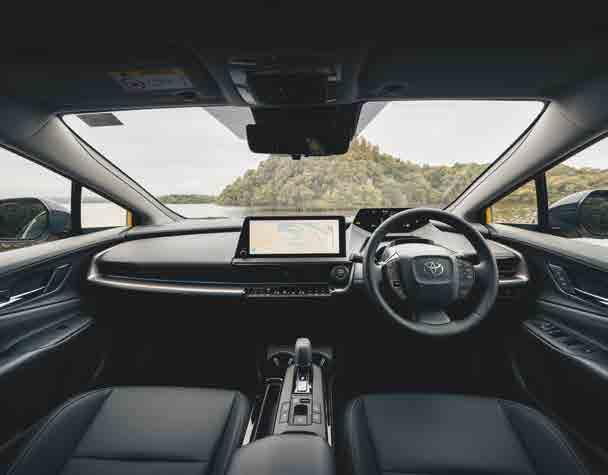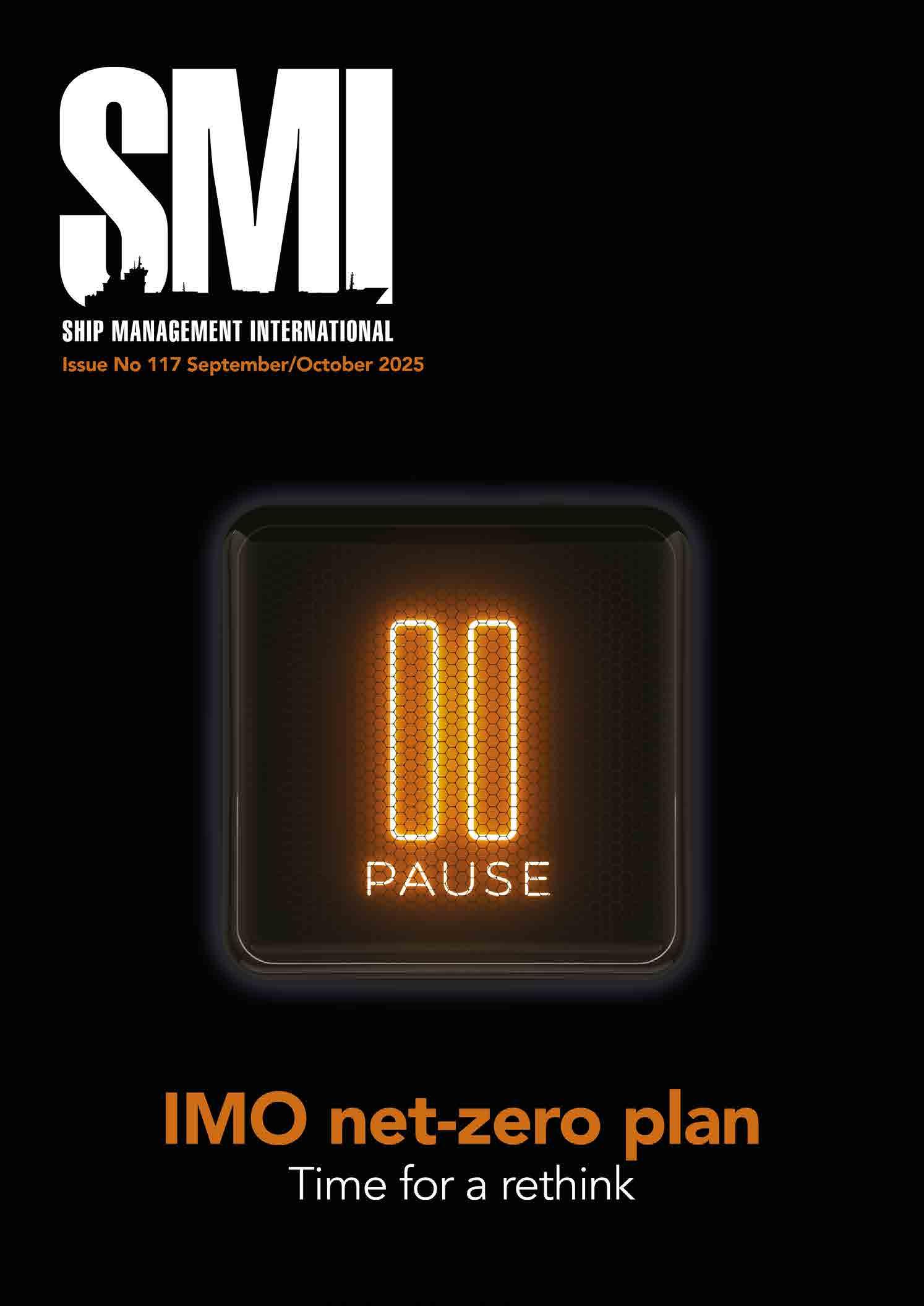
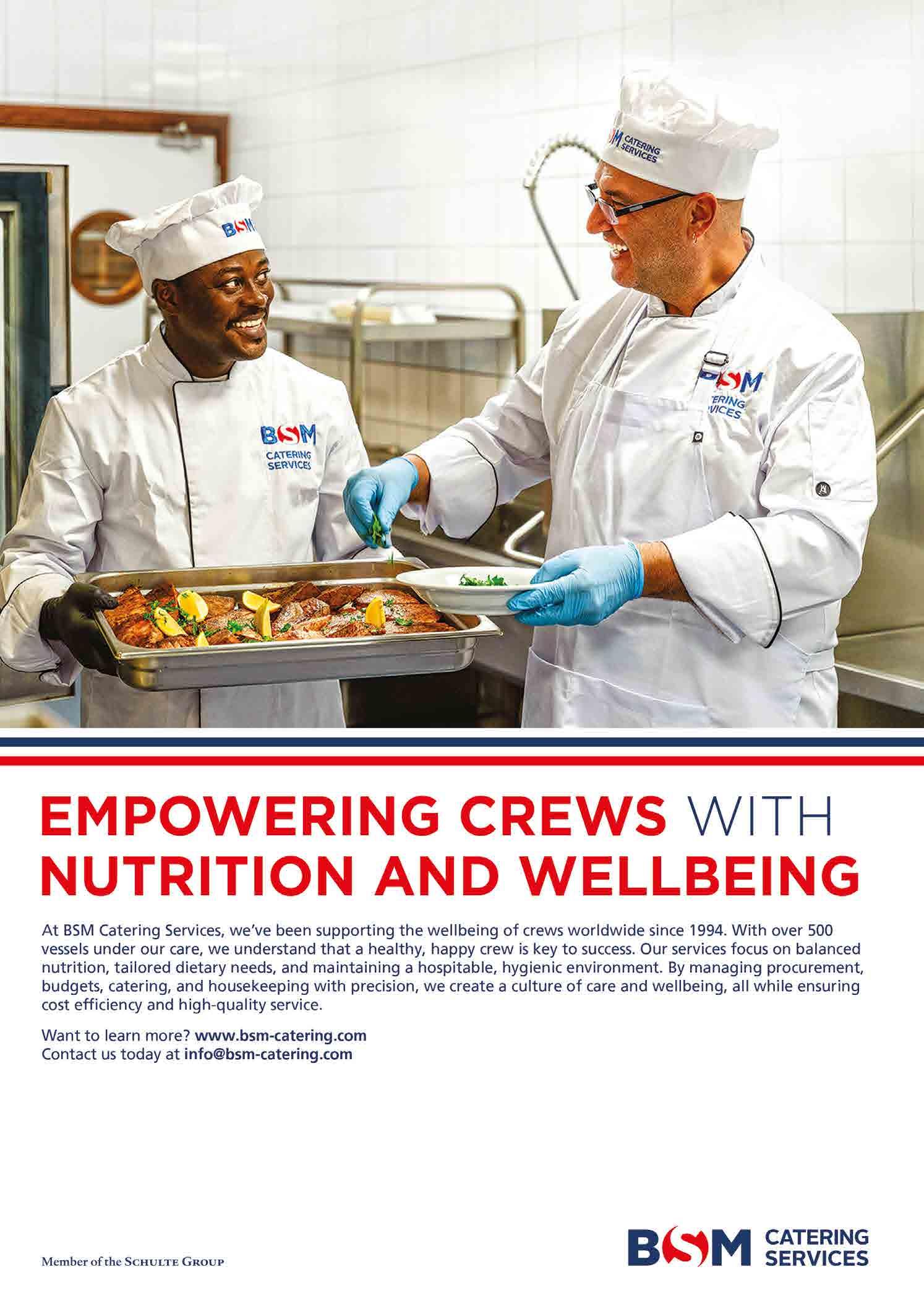
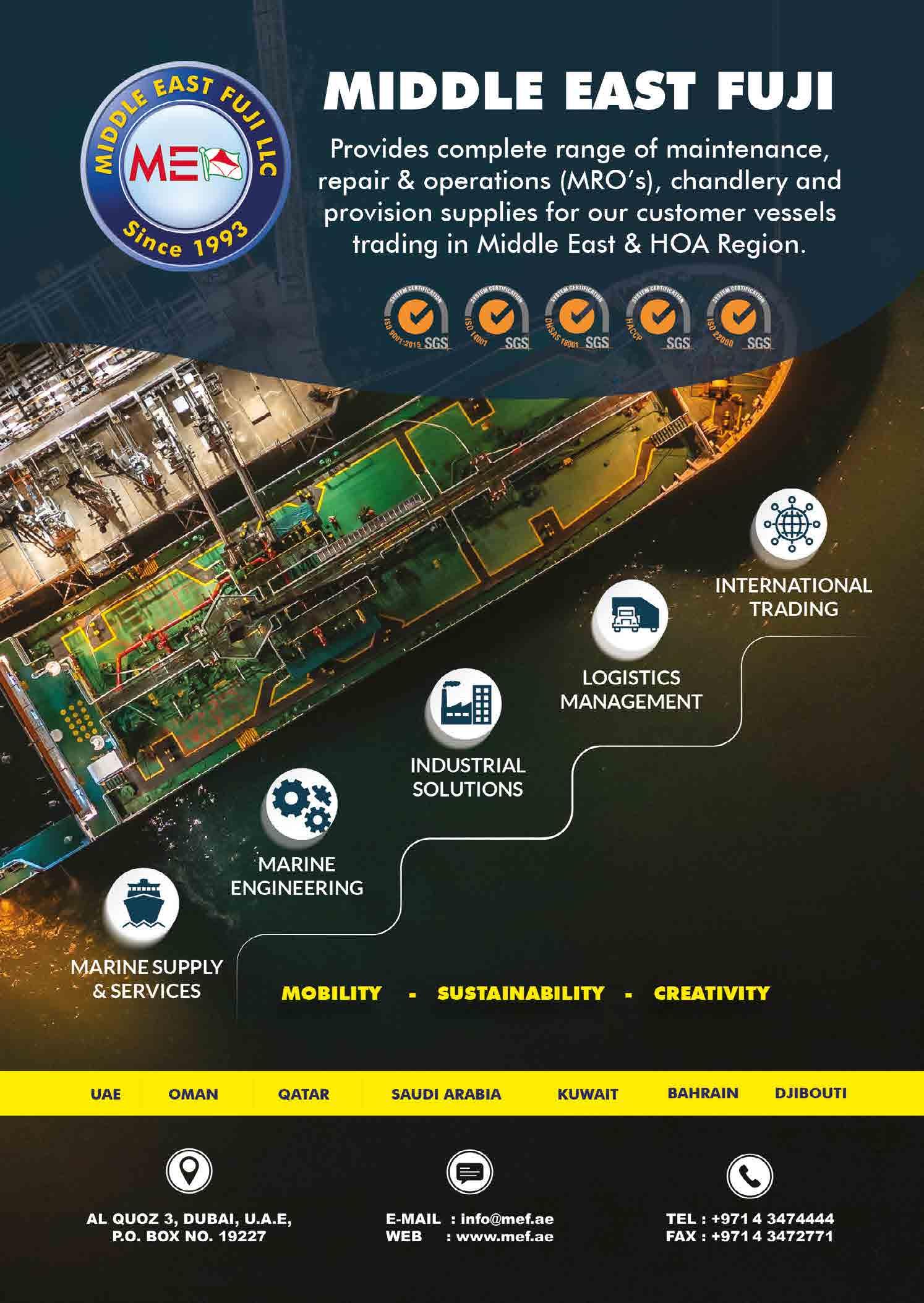

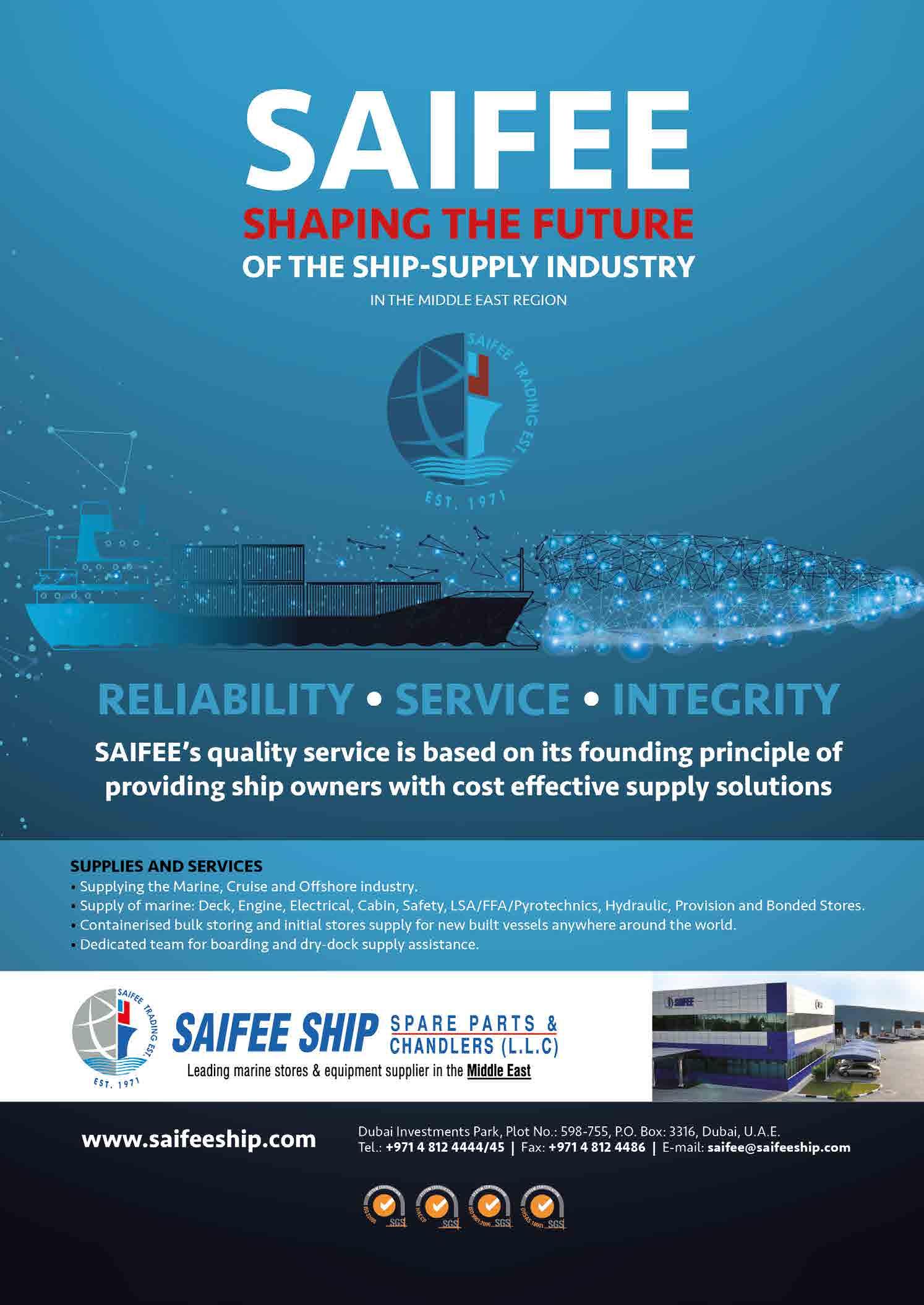
Who cares if your systems are attacked?






Who cares if your systems are attacked?

The world is changing, and so should your insurance. With cyber attacks disabling navigation, communications and propulsion, turn to us for the best possible protection.
Pioneering marine insurance since 1872.

IMO net-zero plan
Time for a rethink

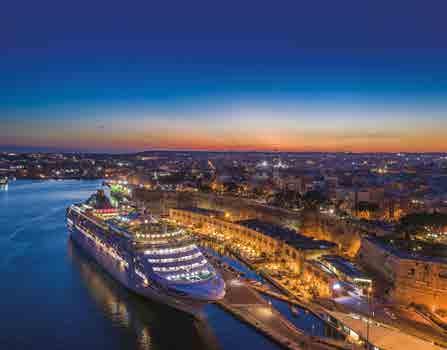


ISSUE 117 SEPTEMBER/OCTOBER 2025 THE MAGAZINE FOR THE WORLD’S SHIP OWNERS & SHIP MANAGERS
8 – Pressing the pause button on net zero
10 – Mixed reactions to adjournment of IMO Net-Zero Framework talks
13 – Why more shipowners are rethinking ship management

Get our magazine digitally. Scan QR code and fill in your details to receive.
14 – Is the ship manager really the shipowner?
16 – Shipmanagement and seafarers among subjects in the spotlight at Maritime Cyprus Conference
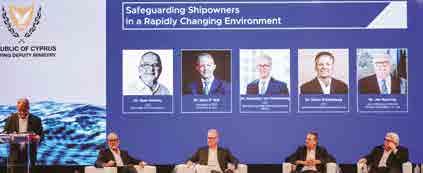
INTERMANAGER OUTLOOK
18 – When ‘respect’ becomes just a word Kuba Szymanski, Secretary General of InterManager

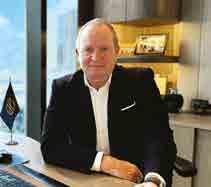
20 – Bjorn Højgaard, CEO of Anglo-Eastern

22 – Jonas Gustavsson CEO, MacGregor
24 – Energy transition and seafarers prove central themes of LISW25
28 – Crew Conundrum
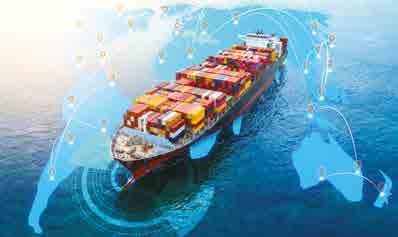
36 – Time to say goodbye to the past
37 – The value of immersion: How technology can help build a skilled workforce
38 – Human touch critical for future of seafaring, stresses Wallem
41 – Why looking after crew during transit matters
43 – VIKAND’s OneHealth programme reveals everyday illnesses affecting seafarers
44 – How technology is redefining health, safety and security for seafarers
46 – Tackling dietary challenges for multinational crews at sea
49 – Well-being and Sustainability at Sea: How Data-Driven Nutrition Is Transforming Life on Board
Malta Report
50 – Maritime Transport Strategy could be a turning point

Panama Report
60 – Panama de-lists vessels, tightens flag criteria
58 – Our regular diary section
62 – A KPMG Briefing on Decarbonisation and other strategic business issues
64 – Robust drybulk fleet numbers could affect charter market
68 – Our Obligation: Ballast water management
70 – Q&A with Espen Martinsen, Chief Commercial Officer at StormGeo
72 – Seafaring - on the brink of change? Dr Martin Stopford

73 – Ammonia as a marine fuel to bring benefits and challenges
77 – Biomethane: the next practical step
78 – ISSA welcomes the world’s ship suppliers and buyers to Singapore for its ISSA67 Convention
82 – Our pick of the most coveted creations
84 – Bringing you the best in arts & culture
86 – Motors: Toyota Prius
The November/December issue of Ship Management International magazine (SMI 118) is to be distributed at CMA Shipping in the US in early 2026. It will feature interlinked reports on Hong Kong & China, including industry developments timed to coincide with Hong Kong Maritime Week and the Marintec China event respectively.
There will also be a special country feature on Türkiye, including the reaction of Turkish shipowners to latest IMO decarbonisation plans, as well as sector reports on Ship Registries and Crew Travel
For advertising enquiries, please contact Sales by emailing sales@elaboratecomms.com
You can also keep abreast of news and subscribe to our daily newsletter at shipmanagementinternational.com
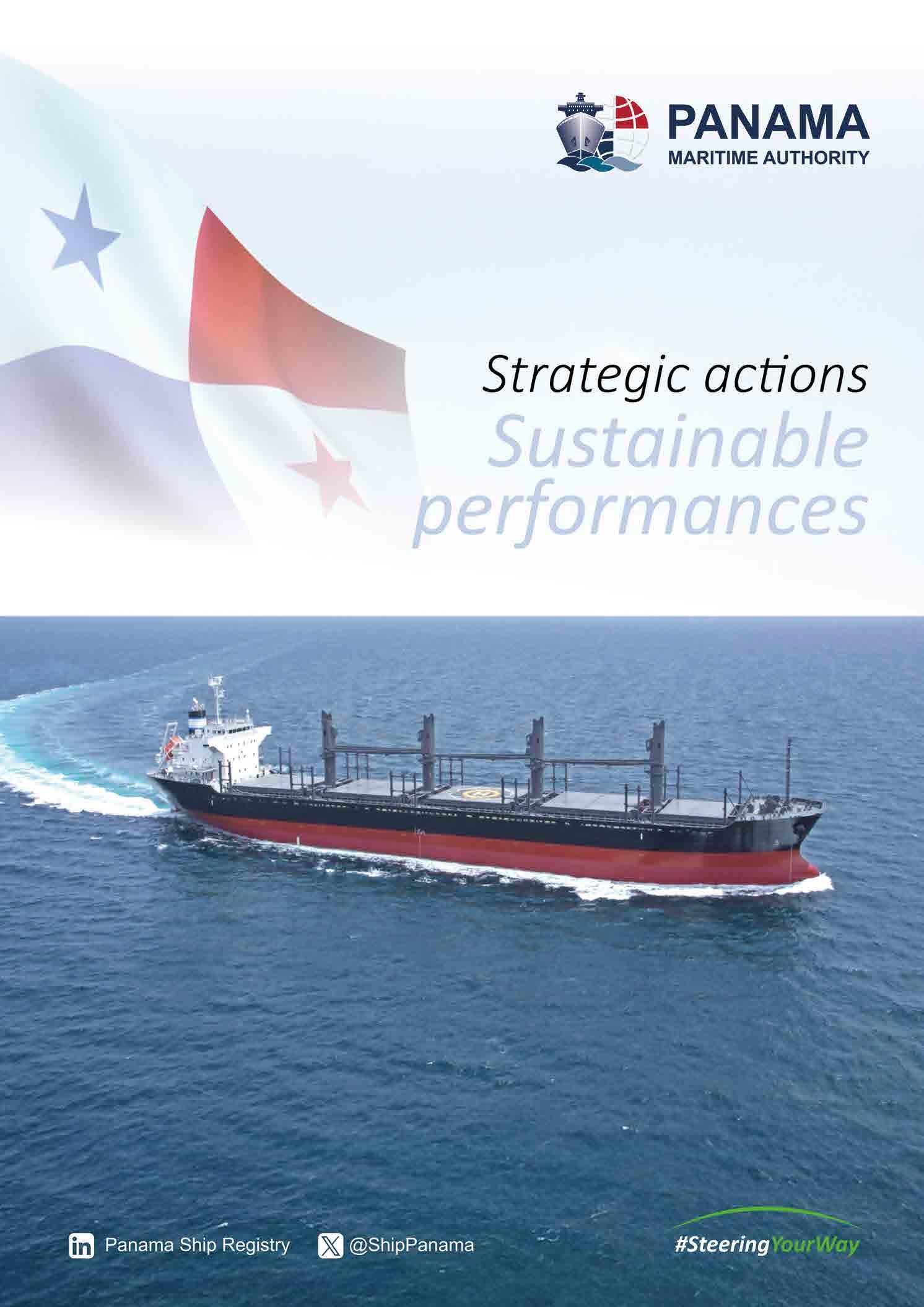
business magazine for today’s
In a surprise development, anticipated adoption of IMO’s NetZero Framework at an extraordinary session of the Marine Environment Protection Committee (MEPC) in midOctober never happened. This is largely because of political pressure with the US openly threatening tariff reprisals against countries voting in favour. Tone of the MEPC debate quickly deteriorated, with accusations of ‘bias’ against the meeting chairman and charges of ‘neo colonialism’ levelled at the EU and North European bloc supporting the NZF. IMO Secretary-General Arsenio Dominquez had to step in to try and calm matters, chiding that this wasn’t

Sales Enquiries
Vijayatha Poojary
Melissa Skinner
Editorial
Bob Jaques
Finance
Lorraine Kimble
Phone: +44 (0) 1296 682 051
Email: vijayatha@elaboratecomms.com
Email: mel@elaboratecomms.com
Phone: +44 (0) 1296 682 089
Email: editorial@elaboratecomms.com
Email: bjaques@elaboratecomms.com
Phone: +44 (0) 1296 682 051
Email: accounts@elaboratecomms.com
the way the UN body traditionally comported itself.
Amid all the acrimony, previous supporters of the NZF began to waver, leading to an IMO decision to defer consideration for a year while Member States worked on tweaking the Framework to try and reach consensus. The writing had already been on the wall, with shipowners becoming increasingly vocal about the NZF’s shortcomings and inconsistencies in the run-up to the MEPC. Whether the Framework was really ‘fit for purpose’ became one of the major talking points at London International Shipping Week in September, many feeling it more
a way of extracting funds from the shipping industry rather than actually reducing emissions.
And ABS Chairman and CEO
Chris Wiernicki dropped a veritable bombshell during the London thought-leadership week by calling on the IMO to “take a timeout” to pause and rethink its strategy on reducing shipping’s GHG emissions – which it turns out is exactly what happened.
Global regulation via consensus at the IMO “is important”, Wiernicki had said, “but it is equally important we get this right” - a sentiment on which IMO Member States and the shipping industry as a whole can surely now agree and move forward. l The shipping
Publisher: Sean Moloney
Editor: Bob Jaques
Sales Manager: Julian Berry
Vijayatha Poojary
Melissa Skinner
Finance: Lorraine Kimble
Design and Layout: Diptesh Chohan
Regular Contributors: Michael Grey
Felicity Landon
Ian Cochran
Margie Collins
Ema Murphy
Motoring Journalist: Rob Auchterlonie
Technical Editor: David Tinsley
Editorial contributors: The best and most informed writers serving the
shipmanagement and shipowning industry.



The International Maritime Organization in mid-October agreed to adjourn the extraordinary session of its Marine Environment Protection Committee (MEPC), which had been convened to consider the adoption of draft amendments to MARPOL Annex VI, including the IMO Net-Zero Framework (NZF).
IMO said that the extraordinary session would be reconvened in 12 months’ time. In the interim, it called on Member States to “continue to work towards consensus on the IMO NZF,” using the time to ensure the framework is strengthened and adopted next time round. An Intersessional Working Group on reduction of shipping emissions due to be held late October would go ahead regardless, “to continue work on the guidelines for implementing the NZF,” the IMO added.
To recap, the NZF was approved at the MEPC 83 session in April 2025, as a new Chapter 5 of the Draft Revised Annex VI of the International Convention for the Prevention of Pollution from Ships (MARPOL). It comprises a set of international regulations aimed at reducing greenhouse gas (GHG) emissions from ships, in line with IMO’s 2023 Strategy for Reduction of GHG Emissions from Ships. It includes two key elements: a global fuel standard and global GHG emissions pricing mechanism. If approved, shipping would have become
the first industry to voluntarily agree binding GHG reduction measures.
Adoption of the NZF at the MEPC had been widely anticipated, but opposition in the final run-up to the meeting - from influential countries such as the US and Saudi Arabia - led to a rancorous debate. This left the likely outcome of any vote requiring a two-thirds majority hanging in the balance, according to insiders, and hence the adjournment.
Immediately afterwards, The International Chamber of Shipping (ICS) said it was ‘disappointed’ that Member States had not been able to agree a way forward at the meeting for the NZK.
“Industry needs clarity to be able to make the investments needed to decarbonise the maritime sector, in line with the goals set out in the IMO GHG strategy,” said Thomas A. Kazakos, ICS Secretary General. “As an industry we will continue to work with the IMO, which is the best organisation to deliver the global regulations needed for a global industry,” he added.
INTERTANKO put a positive spin on the delay. “This gives us time to improve the single regulatory maritime framework to cut maritime emissions,” said Managing Director Tim Wilkins. “Let’s use this opportunity to work collaboratively to tackle the ambiguities and concerns of the NZF raised by INTERTANKO Members.”
However, the tanker owners’ body added its gloss that: “It is unclear what the path forward is since the positions are more polarised… INTERTANKO will continue to voice the concerns of its Members, demanding reassurance that all transitional pathways remain in place for the long-term shift to zero- and near-zero fuels, allowing shipowners and operators to focus on operational feasibility.”
Wilkins ended by asserting that INTERTANKO will continue with its efforts to provide ‘practical and real-world’ input into the process. “There’s some misconception that the industry has been sitting around doing nothing, waiting for this decision,” he said, “when in fact, evidence shows the industry has dramatically cut its emissions over the last 10-15 years, and will continue to do so, as it simply makes good business and ethical sense.”
Emma Scheiris, Deputy Director – Environment at INTERTANKO, commented: “The maritime industry is ready to build on the achieved efficiency gains and accelerate toward a zero-GHG future. Cooperation is key
to forming an improved robust, pragmatic and realistic version of the NZF.”
INTERCARGO echoed these sentiments, Secretary General Dr Kostas Gkonis saying: “We wish to see the current postponement as an opportunity for further dialogue. The time ahead should be used constructively and effectively to bridge differing positions among IMO Member States and to also ensure that the industry’s voice and input are heard and taken onboard.
“We invite Member States at IMO to work more closely among them but also in partnership with the shipping community towards agreeing on a regulatory framework that is realistic, practical, and globally workable.”
The Union of Greek Shipowners (UGS) openly welcomed the decision to delay the process at the IMO. President Melina Travlos said it “presents a new opportunity to shape a sustainable and effective international framework that will guide global shipping safely and realistically through the green transition.
“The lack of consensus highlighted deep rifts over the proposed Net-Zero Framework regulation, where the positions advanced by the shipping industry were not sufficiently taken into account.
“Greek shipping remains firmly committed to the shared goal of decarbonisation and is ready to lead constructively, with evidence-based and unifying

proposals, in a global effort to shape a fair, practical and enforceable clean plan, where all stakeholders assume their share of responsibility on the collective path toward the green transition,” said Ms Travlos.
Pro-decarbonisation lobby the Global Maritime Forum (GMF) pointed out that the MEPC negotiations had taken place amid “extraordinary political challenges,” and that failure to reach a consensus “will now extend the uncertainty over how shipping’s transition to zero emissions will be regulated.”
The outcome represents “a disappointing setback for shipping, but not the end of this journey,” stated GMF’s Director of Decarbonisation, Jesse Fahnestock. “The adjournment for a full year creates serious challenges for meeting the timelines in the Net-Zero Framework agreed in April and will make delivery of the sector’s decarbonisation targets even more challenging.
“We encourage Member States that agreed on the framework in April to re-confirm their commitment to multilateralism and continue the urgent work of developing guidelines and adopting a regulatory framework that can deliver on the IMO’s unanimously agreed Greenhouse Gas Strategy.”
The MEPC will continue to work on guidelines for implementation of the NZF, reminded the GMF, deeming it “essential to complete the design of rewards for Zero and Near-Zero Fuels, define use of funds for a just and equitable transition, and provide clarity on emissions accounting as soon as possible. Clear and robust guidelines can help pave the way for adoption next year.”
‘Diplomatic scars’
The MEPC outcome “demonstrated that the issue of reducing GHG emissions from ships, and in particular the pricing of emissions, is politically contentious for many countries to the point that achieving a consensus at this stage is not possible,” the International Bunker Industry Association (IBIA) noted in a statement. “It means the draft amendments for consideration will now have to be revised before being tabled again and pausing it for one year.
“IBIA had expected, together with a significant number of international associations, a different outcome of the extraordinary MEPC,” it continued. “IBIA supported the adoption of the NZF and were already engaged in crucial work on the detailed guidelines”
IBIA added that the GHG working group meeting following on from the MEPC would see an attempt to “heal the diplomatic scars” of the previous week. For its part, IBIA said it would “continue to support IMO and
its work, and in doing so, representing the views of the whole of the marine energy supply chain.”
ING Senior Economist -Transport & Logistics, Rico Luman, commented: “The delay in the final vote to adopt the Net-Zero Framework (NZF) reduces the likelihood of passing the previously agreed proposal. It is likely to strengthen opposition, including from the United States, which may view the postponement as a win. While the delay provides additional time to build consensus—also within different shipping segments— momentum appears to be fading, making agreement increasingly difficult. Continued procrastination could ultimately lead to cancellation, which would be a disappointing outcome.
“From an economic standpoint, introducing carbon pricing is essential to level the playing field with sustainable fuels, which are currently not economically viable. Regardless of the timing, a pricing mechanism will eventually be necessary to drive progress in reducing GHG emissions, also as it helps funding green investments.
“Progress on decarbonising the shipping sector has been limited in recent years, partly due to geopolitical disruptions that increased sea miles and operational inefficiencies,” the ING economist concluded. “The current timeline needs to be reassessed, as the projected CO2 reductions by 2030 already fall short of earlier ambitions. As a result, achieving the 2040 and 2050 targets set out in the IMO’s net-zero strategy is becoming increasingly challenging—particularly given the long investment horizons typical in the shipping industry.”
• As a postscript it can be noted that at the close of the meeting of the IMO’s Intersessional Working Group on Reduction of Greenhouse Gas (GHG) Emissions from Ships (ISWG-GHG 20) that took place the week immediately following the MEPC, global international environmental organisation the Clean Shipping Coalition (CSC) of NGOs applauded IMO Member States for have risen above the previous week’s rancour by pushing ahead with preparations for adoption of the NZF.
“While last week’s IMO decision to delay its Net Zero Framework was unwelcome, let’s be clear - this is just a postponement and not the end of the NZF”, said Delaine McCullough, CSC President. “During this week’s ISWG meeting, IMO member states have constructively engaged in preparing the guidelines that will be necessary once the NZF is adopted. This indicates broad support for the NZF and that progress can still be made on preparing for implementation.” l
Ashipowner’s job is no longer just to move cargo from A to B. In today’s climate, they are juggling crew scarcity, decarbonisation targets, evolving regulations, digital transformation and a volatile geopolitical landscape, all while navigating tighter margins and increasing operational scrutiny.
Despite this complexity, professional ship management still only covers around 16% of the global fleet. It’s a curious case that says more about the perceptions of ship management than the actual value it offers.
Traditionally, many owners have chosen to keep management inhouse to maintain a perceived closer control of operations or to reduce costs. But that model is starting to show its age. The scale and speed of change in the maritime world now demands a level of expertise, scale and adaptability that’s not only tough for most shipowners to maintain alone but also risky. This is where the case for third-party ship management becomes compelling.
The top tier of professional managers can offer more than technical support; they act as integrated strategic partners. By managing services, from crewing to compliance, through one partner, owners gain a clearer line of sight across their operations.
Regulatory requirements are becoming increasingly layered. Whether it’s the IMO’s Net-Zero Framework, FuelEU Maritime or EU
ETS, shipowners now face parallel demands across international and regional levels, all with significant cost and compliance implications. Understanding the right compliance path for each vessel often requires technical planning, digital tools, and operational coordination. And that’s just the starting point.
Meanwhile, digital solutions are transforming the way highperforming fleets operate. From predictive maintenance and voyage optimisation to emissions reporting and crew scheduling, the benefits of maritime digitalisation are clear. But these tools only deliver full value when integrated across a fleet, which is challenging for smaller operators with limited data, resources or IT infrastructure.
This is where professional ship managers can bridge the gap. With larger managed fleets and global scale, they can harness the power of the ‘data flywheel’ effect, where insights from one vessel continuously enhance performance across the whole fleet. This creates a connected digital ecosystem spanning operations, maintenance, procurement, finance and crewing without the owner needing to build systems from scratch.
Life at sea is also changing with new regulations and technologies being introduced, and having the right crew, in the right place, with the right skills, is fast becoming a key competitive differentiator. Professional ship managers help tackle this challenge by
By René Kofod-Olsen, CEO of V.Group
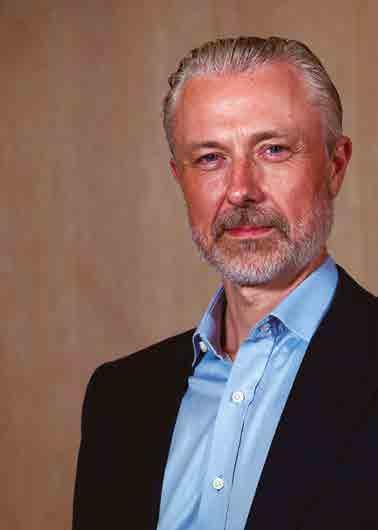
bringing a structured approach to crew recruitment, training, and retention, often supported by dedicated training centres, highend simulators and comprehensive welfare programmes that maintain performance and morale. This allows fleets to deliver on their operations, from transporting complex cargo to staffing hotel operations on cruises.
Far from being removed from the shipowner’s business, today’s top ship managers can serve as trusted partners that improve transparency, sharpen performance and ensure consistency across complex operations. In a market where agility and insight matter more than ever, professional ship managers offer a compelling solution: not just operational support, but a smarter, more resilient way to run fleets.
As maritime challenges continue to evolve, shipowners may find that the real risk isn’t in sharing the reins - it’s in sailing solo. l
In my previous SMI article, I discussed why the manager should not be named as the operator under the Certificate of Financial Responsibility (COFR), as this may lead to liabilities arising from tariffs imposed by the Office of the U.S. Trade Representative (USTR). A similar situation which can result in significant liability is the Declaration of Maritime Labour Compliance (DMLC). The DMLC is a cornerstone of the Maritime Labour Convention (MLC), setting out who is responsible for ensuring compliance with crew welfare standards. While it may seem convenient to name the ship manager as the “owner” under the DMLC, doing so can expose managers to unintended and disproportionate liabilities.
The MLC defines the “shipowner” as the entity responsible for the operation of the ship and for ensuring compliance with the convention. However, this definition does not automatically equate to the commercial owner of the vessel. In practice, the party named on the DMLC becomes the focal point for Port State Control (PSC), crew claims, and regulatory enforcement.
When a ship manager is named as the owner on the DMLC, they assume obligations that may far exceed their contractual remit. This includes responsibility for repatriation costs, unpaid wages, and other crew-related liabilities, even if these arise from decisions
made by the actual owner. In other words, the manager becomes the principal under the DMLC, despite their liability under the management agreement being clearly defined as that of an agent. As the principal, the manager may face reputational damage and regulatory scrutiny, particularly if the vessel is detained or found to be non-compliant.
From a risk management perspective, the solution is simple: the DMLC should name the actual shipowner, the entity with ultimate control and financial responsibility, as the responsible party. This ensures that liability aligns with authority and avoids placing managers in a legally precarious position. It also reflects the intent of the MLC, which is to hold accountable those who can effect change and ensure compliance. As a last resort, the manager may sign the DMLC, but only as ship manager, acting for and on behalf of the actual owner.
Managers should insist on contractual clarity and ensure that the DMLC accurately reflects operational reality. Managers are often named as joint assureds under P&I policies, and coverage may extend to certain liabilities, such as repatriation and unpaid crew wages. However, this should not be relied upon as a substitute for proper documentation. The exposure for managers as joint assureds is that they may be required to reimburse the P&I

By Robert Hodge, Director & General manager, ITIC
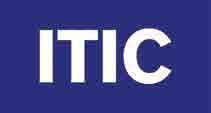
Club of costs paid out in respect for unpaid wages and repatriation.
In conclusion, naming ship managers as the owner under the DMLC is not merely a technical error, it is a strategic misstep that can have serious consequences. Shipowners, managers, and insurers must work together to ensure that the DMLC is correctly completed and that roles are clearly defined. Doing so protects all parties, upholds the integrity of the MLC, and ensures that crew welfare is managed by those with the authority and resources to do so. l
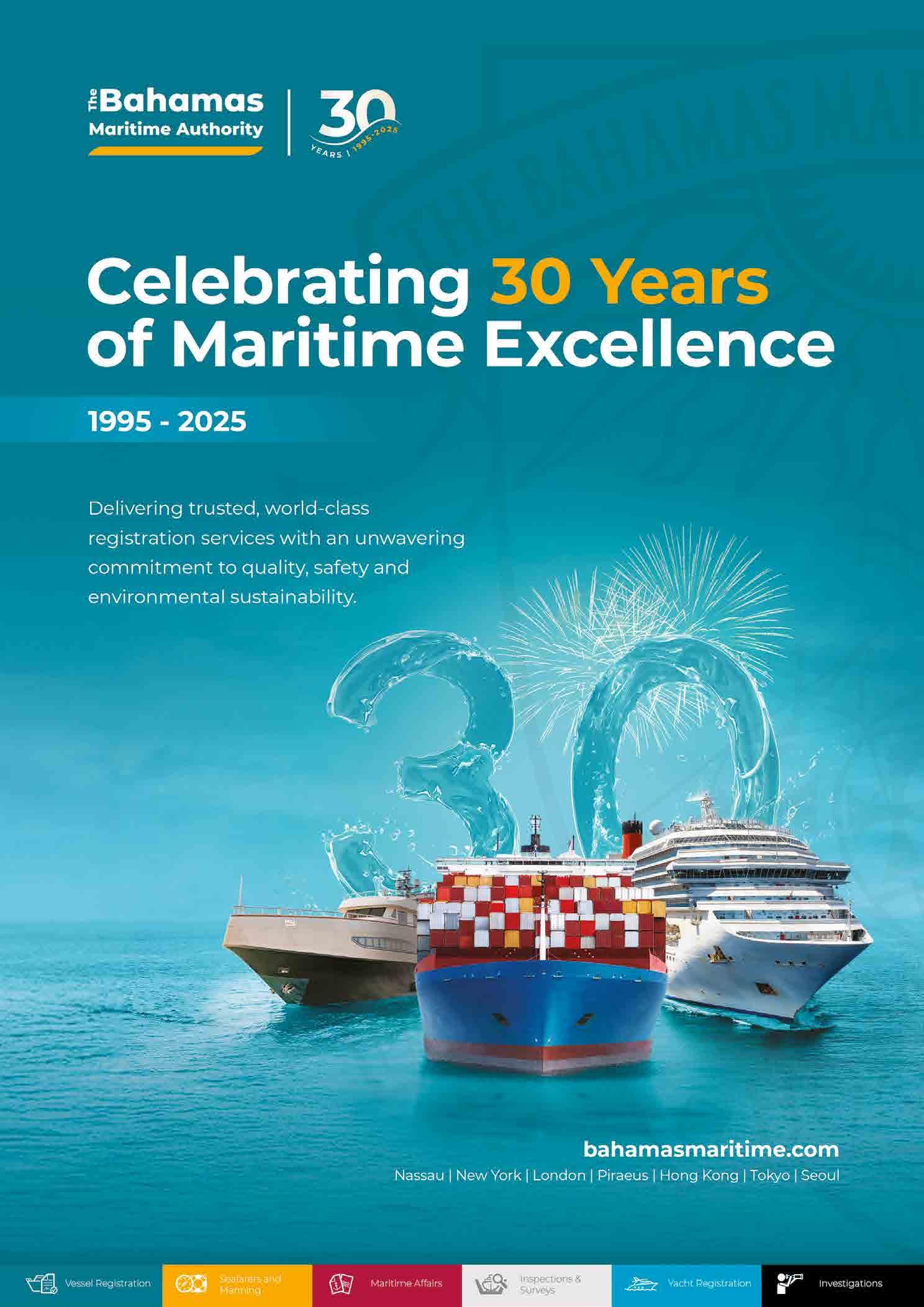
The Maritime Cyprus 2025 Conference consisted of three days of dynamic discussion under the central theme ‘Unlocking the Future of Shipping’. Building on the momentum of previous sessions, the final day’s agenda focused on the future of maritime safety, the transition toward climate resilience, and the technologies and partnerships that will define the next decade of global shipping.
The day opened with an address by H.E. Mr. Costas Kadis, European Commissioner for Fisheries and Oceans, who outlined the European Union’s commitment to supporting shipping’s green and digital transitions. He highlighted Cyprus’s leadership as a maritime services hub and its close alignment with the EU’s vision for sustainable ocean governance under the European Ocean Pact. Commissioner Kadis also announced a series of upcoming initiatives, including a European Maritime Industrial Strategy, an EU Port Strategy, and a Strategy for Coastal and Island Communities, each aimed at strengthening competitiveness, modernizing infrastructure, and accelerating investment in renewable fuels and technology. In one of the following sessions (pictured), Elaborate Communications CEO Mr. Sean Moloney guided a conversation on ‘Safeguarding Shipowners in a Rapidly Changing Environment’

that brought together Mr. Mark O’Neil, President and CEO at Columbia Shipmanagement; Mr. Dieter Rohdenburg, CEO at InterMaritime Shipmanagement Ltd; Mr. Jan Meyering, Joint Managing Director at Marlow Navigation Co. Ltd.; and Mr. Sebastian von Hardenberg, CEO at Bernhard Schulte Shipmanagement (BSM), to discuss how shipowners can navigate decarbonisation, digitalisation, and evolving geopolitical pressures.
Panellists agreed that closer integration between owners and managers is vital as compliance, data and safety demands grow. They emphasised that the future of ship management will depend on partnership-based operating models, investment in people and adaptability to new technologies. The conversation also underscored the continuing importance of seafarer welfare, training and career development, with
participants calling for the industry to present seafaring as a modern, attractive, and secure profession.
Experts then convened for the session ‘Seas of Change: Technology’s Impact on Shipping and Seafarers’, led by Ms. Despina Theodosiou, Co-CEO at Tototheo Global, with participation from Mr. Stephen Cotton, General Secretary at the International Transport Workers’ Federation (ITF); Ms. Fotini Ioannidou, Director for Waterborne Transport at the European Commission; Ms. Elpi Petraki, President at WISTA International; and Mr. Prabhat Jha, Group Managing Director and CEO at MSC Shipmanagement Ltd. The discussion examined how digitalisation and automation are reshaping seafarer welfare, training, and safety.
Here panellists agreed that technology must enhance – not replace – the human element, emphasising the importance of
standardised systems, global training frameworks and inclusive workforce development. They highlighted how innovation can improve operational efficiency and quality of life at sea, provided that stakeholders work together to ensure equitable access to technology, protect seafarers’ wellbeing, and attract a diverse next generation to the maritime profession.
Mr. Konstantinos Petropoulos, General Manager for Structured Finance and Shipping at Piraeus Bank, delivered a presentation titled ‘The Crystal Ball of Shipping: Trends, Risks, and Opportunities Ahead’. He reflected on the evolving landscape of shipping finance, highlighting how geopolitical fragmentation,
regulatory tightening, and the green transition are reshaping the industry’s access to capital. While noting the growing role of Asian lenders and alternative financing models, he emphasised that Greek and Cypriot banks continue to expand their presence, recognising shipping as a sector of strategic importance.
Mr. Petropoulos underlined that the absence of a clear and unified pathway for the green transition creates uncertainty for both shipowners and financiers, but also presents opportunities for growth in sustainable investment. He concluded by stressing that adaptability, transparency, and responsible lending will be key to maintaining financial stability
amid continued economic and geopolitical volatility.
As the Maritime Cyprus 2025 Conference drew to a close, participants reflected on three days of insightful debate, collaboration and knowledge sharing. With more than 1,000 delegates from across the global maritime community, this year’s Conference reaffirmed Cyprus’s position as a trusted voice and international centre of excellence for shipping. Speakers and delegates alike emphasised that the industry’s future success will depend on collective action through collaborative innovation and a shared commitment to shaping a sustainable and resilient global maritime sector. l
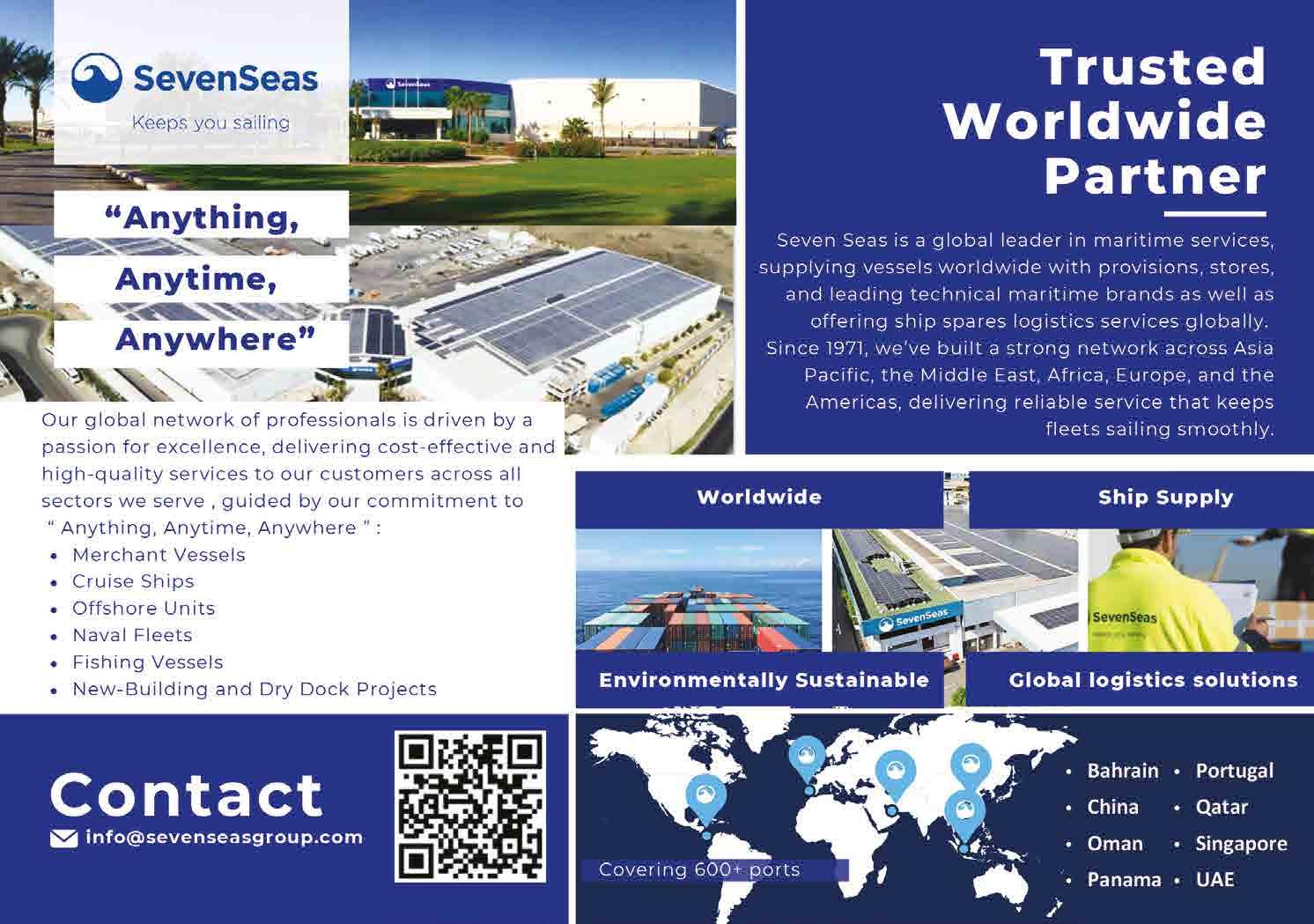

Respect is one of the basic human principles; that we treat each other with respect whoever they are, whatever their backgrounds, age, race, creed or profession, writes Kuba Szymanski, Secretary General of InterManager
‘Respect’ is a word everyone likes! It’s also one of those words overused by management-type people when it comes to how they imagine they treat employees. It’s not uncommon for mission statements to go out in company newsletters, lauding how the company treats everyone with respect and how all feedback is welcome, good bad or indifferent.
What makes this worse is that staff are obliged to say everything is fine and that there are no problems; that management is fair and kind, while processes, working hours, conditions, treatment and backup are simply perfect.
Staff operate in a culture of fear; they have to agree to the so-called ‘independently run’ surveys to safeguard their jobs and avoid being told off for daring to suggest how things could be better.
And yes this is the reality of how things are in the maritime industry. Independent surveys are anything but, and that word ‘respect’ is merely lip service.
Am I being harsh? No, I am being realistic.
Vessels have independent auditors come on board to carry out their assessments but they are more beholden to those paying for the survey to be carried out, not to the seafarers whose opinions are supposedly being sought. It is just a tick-box exercise for management to keep senior people blindly happy.
Constructive criticism is largely not welcome when it comes from bottom to top. Although in the other direction it’s expected. How is this respect?
Why are independent auditors not looking at real safety issues? Why has there been a drift away from safety? Almost every day in the maritime media we read of another accident somewhere around the world, with injuries and fatalities which could easily have been avoided.
I read an excellent blog by a respected seafarer which tells the reality of what so many of those at sea think.
He said: “Why are good seafarers leaving? They leave because the system makes them feel disposable. Because hours of rest exist only on paper. Because safety drills turn into arguments and wasted time instead of real preparation.
“Because even after more than 24 hours without proper sleep, they are still asked to do more - and then explain themselves to someone who only knows how to point fingers and demand. They leave because loyalty is repaid with inspections, sometimes even abuse, but never protection.”
If those people back in the office truly cared; if they actually respected seafarers, they would ask for, welcome and act on all feedback – and we wouldn’t have to read day after day about the latest tragic accident on a vessel.
We talked at the IMO about seafarers working long hours and how this needed to be addressed. In reality, management says: “You are your own timekeeper.” What kind of answer is that?
The answer is to offer some long-term job security – and that means permanent contracts. Only 10% of seafarers I know have a permanent work contract, the remainder are on ‘voyage’ contracts that are anything between a few months and one year and are renewed over and over again.
Seafarers get no continuity, no job security and no respect. Once we get long-term or permanent contracts as the normality, once we get fully independent surveys which lead to actions and not more meaningless words, we might be getting somewhere.
Respect needs to become more than just a word. It needs to be lived and breathed. l
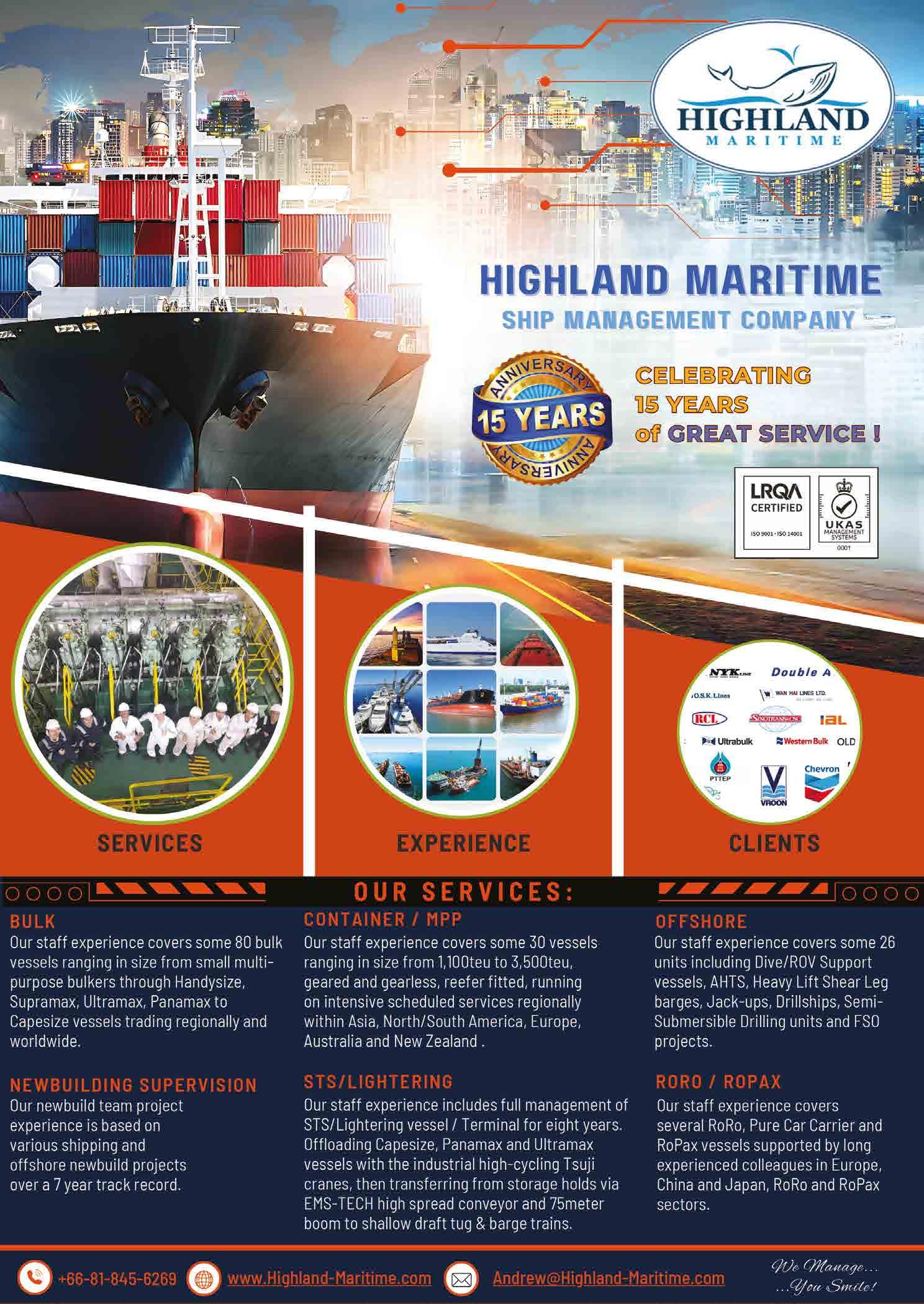
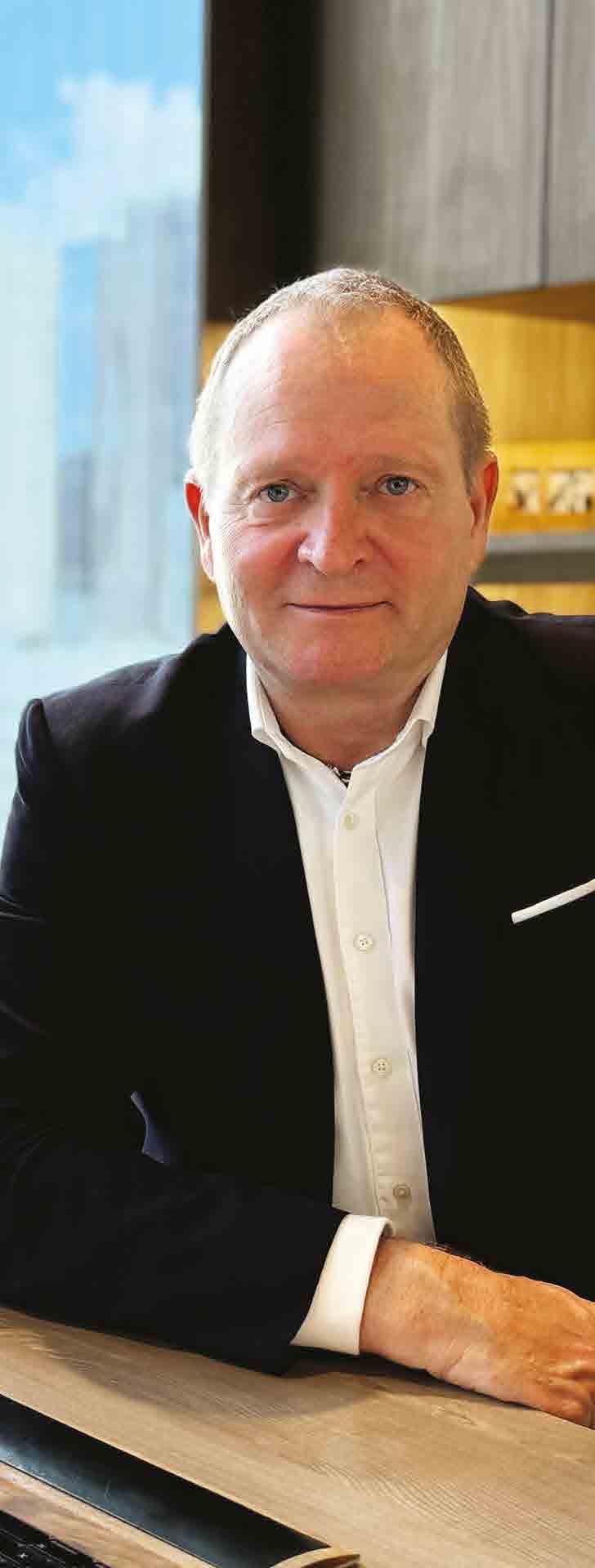
CEO of Anglo-Eastern
The following is the keynote speech delivered by Bjorn Højgaard, CEO of Anglo-Eastern, at the opening session of the International Shipowning and Shipmanagement Summit (ISSS) titled ‘Navigating the Winds of Change’, organised by SMI during London International Shipping Week 2025 in mid-September.
Good morning, I started my career scrubbing bilges. Today I lead a company with 750 ships under management. Thirty-nine thousand seafarers. And in those soon 40 years between, I’ve learned one thing: Ships may be built in steel. Propelled by engines.
But shipping is driven by people.
And people are the real winds of change.
We meet here in London at a time of shifting currents. The world is full of uncertainty.
Geopolitics. Regulation. New fuels. Digitalisation. Supply chains disrupted. It can feel like we are sailing into a headwind.
But here’s the truth: the winds will always change. We don’t control the wind. But we can adjust the sails. That is the essence of leadership in our industry. That is why we are here.
So how do we lead when the winds shift?
Let me give you three principles - three “truths” - that I live by, and that guide how I think about sail trimming in a time of uncertainty and change.
Leadership in paradox
The first truth is this: leadership means living in paradox.
We must act fast - and be patient. We must be bold - and cautious. We must deliver profit - and safeguard the planet. We must balance confidence with humility. We must look backwards to move forward.
If you hold only one side, you drift. Balance the tension, and you lead.
That’s what I call the captain’s mindset. Eyes on the horizon. Hands on the helm. Always both.
Every leader in this room knows the pressure. Move fast, but don’t break things.
Act boldly, but guard your reputation. It is uncomfortable. But in that tension is where progress lives.
Let me be concrete. When we talk about decarbonisation, some want radical action now. Others say: wait for certainty, for technology to mature. The truth is - both are right.
We must act today and prepare for tomorrow. Urgency and patience, together. That is paradox. And leadership is the art of holding it.
Years ago, when I was a young trainee on the square-rigger, the Training Ship ‘Danmark’, I was helmsman in heavy weather. The waves were bigger than the ship felt ready for. I remember gripping the wheel, water sweeping across the deck, and thinking: “Surely this ship can’t take any more.” The captain turned to me and said:
“Remember, you don’t fight the wind. You work with it.”
At that wheel, soaked to the bone, I felt small. The storm was bigger than me. Bigger than the ship. But his words gave me calm.
That lesson was seared into me as a teenager. And I’ve carried it into every leadership role since. You don’t fight the winds of change. You trim your sails, you hold your course, you keep your nerve. That is leadership in paradox.
People trump technology
The second truth is this: technology will matter - but people will matter more.
Much is said about AI and data. At Anglo-Eastern we run a Fleet Performance Centre that monitors more than 700 vessels in real time. Last year alone, we cut 63,000 tonnes of fuel and 189,000 tonnes of CO2. That’s not theory. That’s action.
But data alone doesn’t keep ships safe. People do. AI won’t replace seafarers. It will only empower them - if we invest in them.
The seafarer of the future is no longer ‘just’ an operator. He or she is a data interpreter. An environmental steward. A frontline ambassador of our values. And unless we train them, trust them, and care for them, the ships of the future won’t sail.
Think about the paradox again. We want digitalisation. But it only works if people adopt it, trust it, and use it wisely.
Technology without people is driftwood. And in our industry, driftwood doesn’t cross oceans. People do.
This is why training matters so deeply. At Anglo-Eastern we have had our own pre-sea academy since 2009, preparing to date more than 4,000 young men and women for a life at sea as officer. From a yearly pool of more than 20,000 applications, we pick 480 motivated and passionate youngsters. We prepare them like no one else, not just to tick boxes, but to build careers. From cadet, to seafarer, to superintendent, to fleet director, to senior leader. We are creating pathways, not just jobs.
And I say this not to promote our company, but to challenge the industry. We all have a responsibility. We cannot rely on others to train the next generation for us.
Because if we fail to invest in people, no digital platform, no AI algorithm, no green fuel will save us. The future belongs to those who train their crews today.
Culture is the safety net
And the third truth is this: culture is our true safety net. The greatest buffer against risk is not another checklist. It is culture. A culture where people care enough to act when no one is watching. Where they take ownership not because they’re told to - but because they believe the work matters.
In a high-risk environment, systems must be robust. But resilience is human. And resilience is built long before the storm arrives.
I think of it as a seven-step pyramid. The base has four essentials: adequate rest, good nutrition, regular exercise, and strong social ties. These are the human basics. Without them, motivation is shaky and performance suffers.
Only after building this base can you layer on top the three remaining steps: Purpose. Mastery. Autonomy.
Give people purpose - a clear sense of how their work fits into something bigger. How it serves others than themselves.
Give them mastery - the tools, training, and resources to do it well.
And give them autonomy - some freedom to figure out how to deliver, not just what to deliver.
When all seven are present, something powerful happens. People stop working like mercenaries. They start acting like missionaries. They don’t just follow the rulesthey own the result. That’s when true excellence emerges. Not just competence, but care.
And let me add this. A culture of care beats a culture of blame. When seafarers feel safe to speak up... When their experience shapes the procedures, not the other way round... When feedback flows both ways... Then we are building real safety.
Because every mariner knows: the plan does not survive first contact with the ocean. Conditions change. And in that moment, people - not protocolsmake the difference.
That’s why we must use data not to control, but to empower. That’s why culture is not a slogan, but the sum of choices we make every day.
So let me leave you with three truths.
• Leadership means balancing paradox, not choosing sides.
• Technology will matter - but people will matter more.
• Culture is our true safety net.
• When the headlines scream disruption, when regulators tighten the screws, when technology dazzles and distracts - remember: Ships may be built in steel. Propelled by engines. But shipping is driven by people. And people are the real winds of change.
Thank you. l
SMI talks to industry leaders and asks the question How do you keep up with the rigours of the shipping industry?

CEO, MacGregor
Snational Jonas Gustavsson took over as CEO of MacGregor in August this year, right after ownership of the cargo and load handling equipment provider had passed, after 20 years, from Hiab (formerly Cargotec) Group to Swedish/European based Private Equity company Triton. He succeeded the retiring Leif Bystöm in charge of a company boasting annual turnover of nearly 800 million euros and a workforce around 2,000 employees spread across 30 different countries.
Having joined the company five months earlier as Deputy President, Gustavsson was already well acquainted with the proud heritage of MacGregor – named after two brothers who invented the first steel hatch covers in Whitley Bay, near Newcastle-upon-Tyne, UK in 1929. The company’s history stretches back even further. For instance, two of the acquired and integrated companies, Pusnes and Porsgrunn, are able to trace their origins back to the 19th century, and then to
supplying an anchor winch for polar explorer Roald Amundsen’s famous ship ‘Fram’ in the 1910s.
But the new CEO, a mechanical engineer by training, has his eyes firmly set on the future.
“Triton’s business model is to try and help management improve their companies in all areas and increase value,” he explains. “They have seen that MacGregor, which operates as a standalone company under Triton’s ownership, has not yet reached the full value of what it can do.
“One area we have singled out,” he adds, “is that we can strengthen our performance as a service company in addition to being a well known supplier of new equipment like hatch covers, ramps, doors, cranes, winches and steering equipment.”
MacGregor is also active offshore equipment, he adds, like ‘walk-towork’ motion compensated gangways for support vessels servicing offshore windfarms - but not actual liquidhandling equipment like pumps.
“We want to support clients through the lifetime of products,” he continues. “Lifetime value is something our clients want as well.”
Gustavsson, 58, already has a 30year track record in industry, having worked in senior roles for major corporates like Rotax, Bombardier, ABB and Sandvik. From 2017 until early 2025 he served as CEO of AFRY, a global engineering company with some 20,000 employees active in the energy sector. He’s also on the Board of Finnish manufacturing company Valmet and energy company Fortum, as well as being
a member of the Royal Swedish Academy of Science (IVA).
“I think with my background in industry, the interest of the maritime sector was difficult to resist,” he admits. “I liked MacGregor’s history and ambition, and I was already involved in the move from hydraulic equipment to electrification, so there were many things that attracted me.”
“I’m extremely proud and excited to start as CEO at MacGregor because I think they’ve made a fantastic journey, but also that the best is still to come. Since I joined the organisation, I’m very impressed by the history and passionate people that we have.”
The maritime industry itself has also proved something of a revelation to the new CEO. “So many people have been working their whole lives in shipping there must be something dynamic in it, and after only six months I’m beginning to understand that.”
But at the same time Gustavsson believes that “coming from outside the industry, I can bring ‘fresh eyes’ on a lot of things.”
The maritime business is very global in nature, which means the new position will inevitably require

a lot of travel, to visit offices and meet clients. But having enjoyed a ‘small-town’ upbringing in rural western Sweden “where the forests meet the mountains” Gustavsson prefers the quiet life when back in Stockholm with his wife Julia and their two grown-up children, and outdoor pursuits.
Time permitting, he also still practises a wide range of outdoors sports, notably cross-country skiing, where he “once dreamed of being the best cross-country skier in the world” and competed on a semi-professional level into his early 20’s. Then there’s mountain hiking, running - where he says he “quite often” starts days with a 3-5km run, sometimes longer – and various watersports.
“I still think I’m about 28 years old,” he confides, admitting he has to stretch a lot before and afterwards. “It’s like with an old car,” he quips: “The engine is still

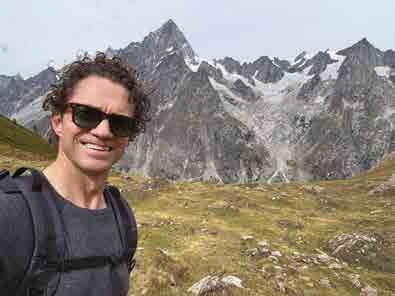
running but you have your problems with the equipment!”
The motoring analogy is apt as he also inherited his father’s passion for motorsports and says he likes to ride ‘Italian motorbikes’ such as his prized Ducati.
“Work is equally a passion,” he adds, “and at MacGregor, with its people, culture, and offering, that’s proving particularly so. But in everything, I’ve done it with a smile!
“My ambition,” he concludes, “is to lead with clarity and energy as well as deep commitment to people development. I’m dedicated to the performance of the company, believing in setting clear direction, simplifying complexity and aligning the team to deliver results that last.
“I have a strong operational focus, and I like to stay close to the customer interface and create momentum through collaboration, trust and clear execution.
“All in all, I’m really thrilled to lead our team and help take MacGregor to a new level.” l

With all main areas of shipping covered by the wealth of 200+ official events regularly held at London International Shipping Week, this year’s LISW25 edition leaned heavily into regulatory matters. All eyes were on the decisions on Greenhouse Gas (GHG) emissions reduction to be made at the special meeting of IMO’s Marine Environment Protection Committee (MEPC) the following month… and there was a mounting sense of unease as that October session approached.
Underscoring dealings at IMO is the recognition that the seas are large and potentially lawless, and need a single controlling voice. “We demonstrate why global regulation works for a global industry,” IMO Secretary-General Arsenio Dominguez said in a panel appearance at the Headline Conference of LISW25, held at the IMO Headquarters.
“I appreciate there are valid concerns about the progress we’re making [on decarbonisation],” he continued. “That’s why it’s important to reiterate to everyone the relevance of multilateralism, the global regulatory system that has served this industry for over 70 years.”
Stoking concern ahead of the MEPC meeting was the US pressuring IMO Member States to vote down the Net-Zero Framework (NZF) proposal - already pre-agreed in April – by saying it would “not hesitate to retaliate” against nations that supported it. A statement in August had read: “The Trump Administration unequivocally rejects this proposal before the IMO and will not tolerate any action that increases costs for our citizens, energy providers, shipping companies and their customers, or tourists.”

What would be the scenario, if the IMO measure doesn’t go through? SecretaryGeneral Dominguez was not prepared to countenance the possibility but others were not so circumspect.
“Proliferation. Distortion. Every country will do their own thing,” said Katharine Palmer, Shipping Lead of the Climate HighLevel Champions team, on secondment from Lloyd’s Register where she is Global Head of Sustainability. “As a sector that operates on a global basis and global scale, it will be unworkable.”
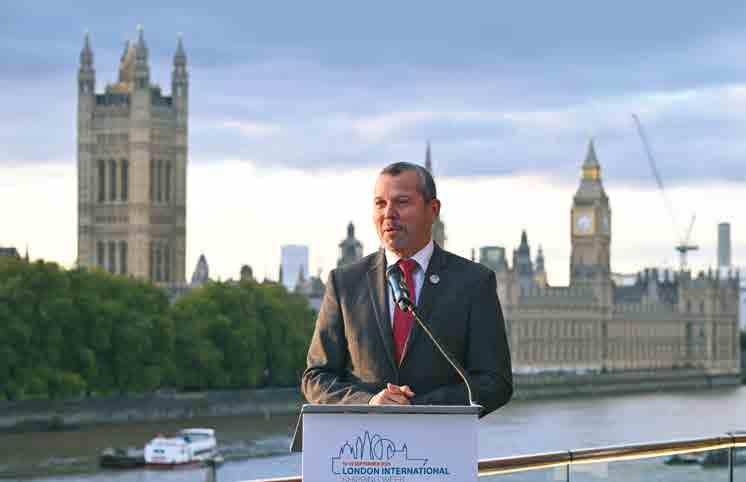
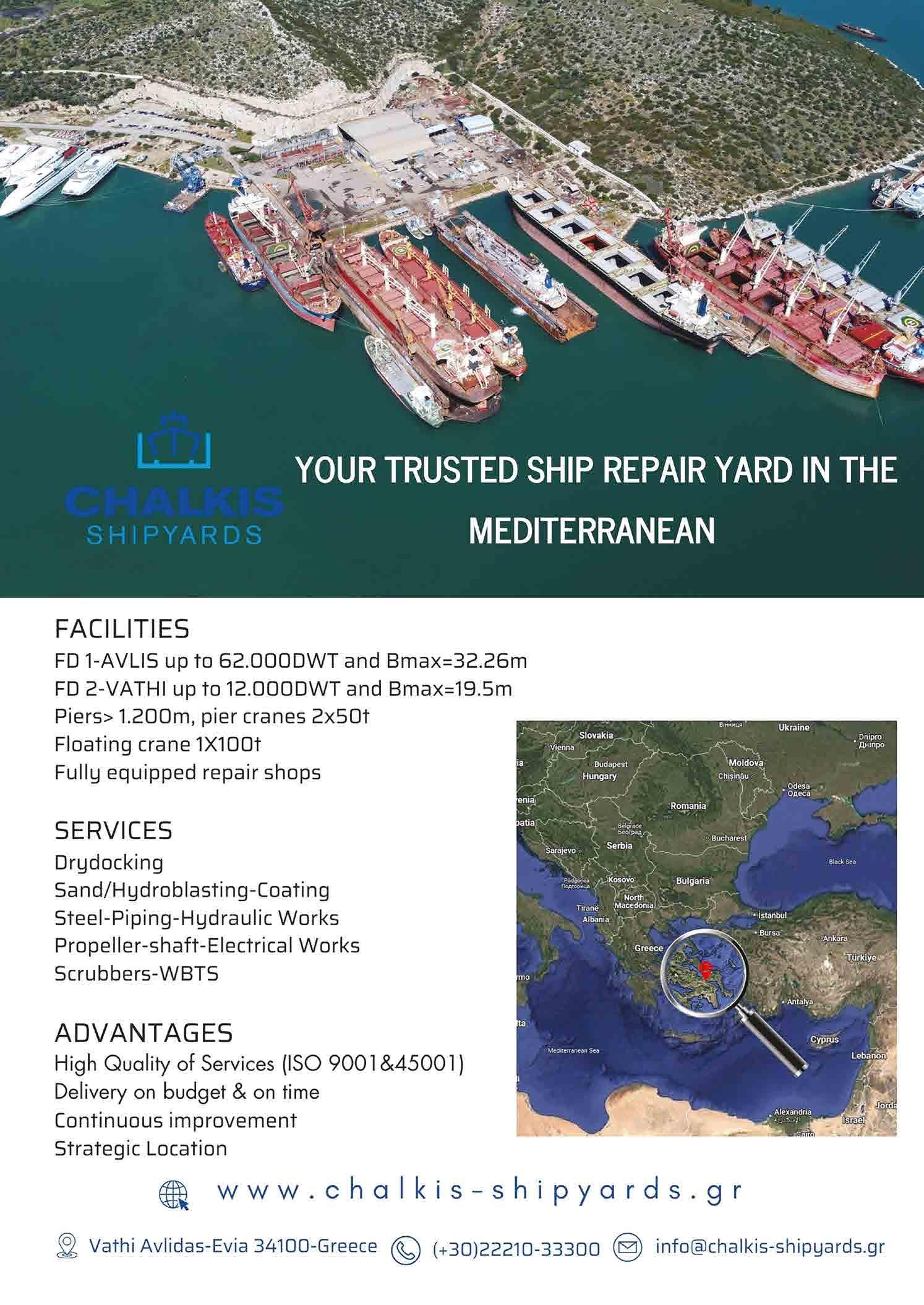
Wiernicki addressing ABS Sustainability Summit

“It will be a disaster,” said International Association of Ports and Harbors (IAPH) Managing Director Patrick Verhoeven, answering the same question on a different panel at LISW25. For him, a failure would torpedo the investment plans for his constituent ports, which are not only being expected to step up their participation in ship-call optimisation schemes, banishing hurry-up-and-wait; but to repower their operations with renewable energy, provide shore power, and become bunkering hubs for renewable fuels.
For others, contents of the NZF itself were cause for concern. ABS Chairman and CEO Chris Wiernicki dropped something of a bombshell at LISW by suggesting that the IMO might need to “pause and reconsider” its strategy. “Shipping and the IMO are on different trajectories,” he said at an ABS Sustainability Summit held in London during the week. “There is no clear pathway for green fuel availability and scalability and infrastructure support. LNG and biofuels are mission critical to any success and should not be overlooked, over penalised or discarded in the Net Zero regulation. Quite frankly, achieving net zero for shipping by 2050 looks like a wildcard.”
Others doubted that even the 5% target by 2030 could be reached. A report by UCL Energy Institute, released at LISW, predicts that shipping will need to avail itself of some 0.6 exajoules (EJ) of non-biofuel zero-emission fuel -- practically speaking, green methanol or green ammonia – to meet the targets. As it stands, UCL predicts there will only be 0.49EJ in use. “We do not see the number of ships [in the orderbook] to be able to say we’re meeting this,” said Domagoj Baresic, senior research fellow at UCL. “The real risk,” he added, “is not, not quite meeting 5% in 2030, but in losing sight of the goal entirely.”
But Nigel Topping, UK High-Level Climate Action Champion, cautioned against predicting the future with spreadsheets. “What we do influences others,” he said, “like if a bunch of cargo owners say that in the future they only want to buy zero carbon cargo services, that’s a pretty strong signal. A lot of the complex economic models which drive forecasts don’t embrace that dynamic – [it’s] difficult to model.”
Topping drew attention to one of the dominant assumptions in technology, Moore’s Law, highlighting that it is guided not by some materialist logic or natural law, but by human will. “Moore’s Law is not really a law,” Topping said. “It’s an assertion of market confidence. It is human element, a desire to shape the future.”
That future, for many at LISW, lay just around the corner, due to start with adoption of the NZF the following month.
Elsewhere at LISW25, a newfound focus on the importance and holistic needs of seafarers and the maritime workforce in general. ‘People and Sustainability’ was a new term on some people’s lips, as was the rebranding of HR as ‘Human Capital Management’.
Conferences and panel discussions on the importance of seafarers took place throughout the week [see also First Person and later Crew Conundrum feature], on a scale that had never happened at previous LISWs. A notable example was the half-day conference on ‘Human Capital Management’ hosted by Lloyd’s Register at its newly re-opened historic Fenchurch Street headquarters. The event coincided with the release of new interim training frameworks and risk-based, competency-driven models for seafarer training in the use of low carbon fuels, an initiative of the Maritime Just Transition Task Force (MJTTF), which is supported by Lloyd’s Register’s Maritime Decarbonisation Hub (The Decarb Hub).
“LR’s HCM event during LISW 2025 was a landmark moment for the industry, not just in launching the JMTTF training frameworks, but in catalysing a broader conversation about people, skills, and the future of maritime safety,” Natassa Kouvertari, Senior Lead – Human Competency at The Decarb Hub, later told SMI.
“The event demonstrated the industry’s recognition that seafarer competency is no longer a supplementary topic — it is central to the success of decarbonisation. One clear takeaway was the alignment between regulatory ambitions, technological advances, and the lived experiences of crews. Listening to seafarers’ representatives, fuel specialists, and training providers highlighted a shared urgency: to ensure people are not left behind in the energy transition.
“The formal release of the interim training frameworks also provided a tangible resource for maritime organisations to begin planning for the implementation phase. Attendees appreciated the practical detail in the deliverables, including guidance on
advanced level training and instructor handbooks, as well as potential avenues to bring shore-based personnel into the training conversation.
“Perhaps most importantly, the event reinforced the value of cross-sector collaboration and the validation that training is an area of collaboration rather than competition. By uniting the efforts of notable actors like the International Chamber of Shipping (ICS), the International Transport Federation of Seafarers (ITF), the World Maritime University (WMU) and the UN Global Compact under
the support of the IMO in a single initiative, HCM has showcased the benefits to be realised once training is perceived as a strategic imperative rather than an operational detail.
“The lesson is emphatically apparent,” Kouvetari concluded. “Human competency is the foundation of a safe transition, and we must design, deliver, and measure training systems with the same rigour as we do for any engineering solution assessed as fit for purpose in our decarbonisation trajectory towards net zero.” l
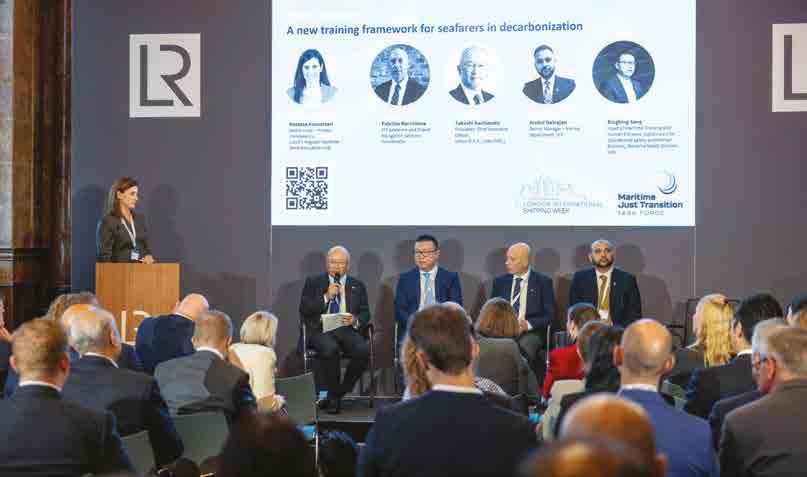
The IMO is stepping up efforts to prepare seafarers for shipping’s energy transition, to help ensure personnel are properly trained to work safely on ships using zero or near-zero emission fuels.
IMO in late September issued ‘Generic interim guidelines on training for seafarers on ships using alternative fuels and new technologies’ (STCW 7/ Circ. 25). These set out an international framework for the development and approval of training of seafarers serving on all ships using alternative fuels and new technologies.
Fuel- and technology- specific interim training guidelines - including for methyl/ethyl alcohol, ammonia, hydrogen, LPG, battery-powered ships and fuel cells - are also being developed. They will be considered by the IMO’s Sub-Committee on Human Element, Training and Watchkeeping in February 2026 (HTW 12). l

The following is an edited transcript, shortened or summarised in places for reasons of space, of the closing session of the International Shipowning and Shipmanagement Summit (ISSS) conference, titled ‘Navigating the Winds of Change’, organised by SMI during London International Shipping Week 2025.
Held at the Inmarsat Headquarters building, this session – entitled ‘The Crew Conundrum’, and examining issues around the future supply of seafarers - featured eminent panellists: Pradeep Chawla, CEO and founder of MarinePALS; Alan Croft, Business Development Manager at ISWAN; Jennifer Harrison, Vice President at ABS Training Solutions; Henrik Jensen, CEO and founder of Danica Crewing Services; Marinos Kokkinis, Managing Director of OneCare Group; Ann Pletschke, Director of Trinity Maritime; and Bjoern Sprotte, Chief People and Sustainability Officer at Bernhard Schulte Shipmanagement (BSM). Moderator was Bob Jaques, Editor of SMI.

PRADEEP CHAWLA CEO and Founder, MarinePALS

JENNIFER HARRISON Vice President, ABS Training Solutions
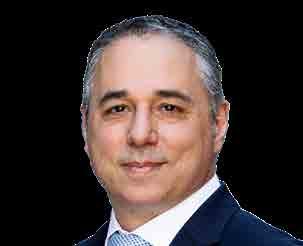
MARINOS KOKKINIS Managing Director, OneCare Group

ALAN CROFT ISWAN

HENRIK JENSEN CEO and Founder, Danica Crewing Services

ANN PLETSCHKE Director, Trinity Maritime

BJOERN SPROTTE Chief People and Sustainability Officer, BSM

Bob Jaques
Good afternoon, ladies and gentlemen, and welcome to this closing session of the ISSS, titled “The Crewing Conundrum’. Finding competent crew to drive the shipping industry as the fleet expands and new fuels & technologies are introduced is indeed a challenge for the industry, and to help us unpack the some of the many issues involved in crew management, seafarer training and onboard welfare, please welcome a uniquely qualified panel of experts, all of whom have considerable experience of the maritime industry and life at sea. To introduce each, I shall ask a brief question to help frame their contributions.
So Bjoern, turning first to you, what are the hallmarks of a responsible crew employer, and can you please explain what is meant by your job title of head of ‘People and Sustainability’?
Bjoern Sprotte
Thank you, Bob. Before I get on to ‘People and Sustainability’ let me relate that I’ve been shipping for 35 years and when I joined my first container vessel, I was actually driven to the ship by the ship owner himself. And that created a sense of belonging. Culture was formed in that moment. And whilst of course this is a bit difficult to imagine today, I think the people connections really, really matter. Our business depends so much on people and, as we have heard earlier today, you should never forget that.
If you ask me about what make a responsible company in shipping, certainly the most important thing to me is that we bring each and every seafarer home safely. I think that is what makes and breaks it.
Of course, there’s a lot of elements to that. Starting with recruitment, we receive about 50,000 applications every year. So to have a fair and transparent recruitment process is absolutely key.
Recent research suggests that about 28 % of the seafarers are still required to or asked to pay a recruitment fee to secure a job on a merchant vessel. That today in 2025 sitting here is something we should really not have any more in our industry.

Recruitment is one with fair practices. I think it is very, very important to make sure that the seafarers that get on board the ships are healthy. When it comes to bringing the people on board the ships, it is not done with just issuing a ticket and say ‘go’. When something happens along the way, you have to be there for the people on board, on the travel. When the recent flight disruptions happened across the Middle East, for example, we reached out to every one of our roughly 20 seafarers that were on planes there or stuck in Dubai and Doha. You need to extend an element of care to the people.
When it comes to planning, it doesn’t take all that much. Some people like to speak a lot about work-life balance. I think it’s more an ‘integration’ that needs to happen. Integration for the seafarers largely means that they can plan their family lives properly so that they know when they will be at home and that this is done reliably and that creates trust amongst each other. It’s very, very important for the seafarers. It’s not so difficult to do but it requires a lot of detailed work. Technology, as we have heard today, helps us a lot in doing so.
When it comes to the time onboard, living conditions are important. Seafarers ask for proper living conditions, starting with good mattresses and similar simple things like this. It’s very, very important to make sure that they are there. Give them recreational facilities… I think we all know what to do here. But it goes beyond that. It is also beyond just the hardware. It is really to build communities and to welcome those people as members of the family. BSM is a family-owned business, so we emphasise a lot on that and try to
create communities and networks for the people to engage and interact and connect with each other.
Last but not least, I think in the past we were lucky that we were not competing so much with other industries. Yes, we’ve always done that, but it’s becoming more so. We are sitting here in this fantastic building and I think we get a flavour of what a modern employment. environment can look like. It’s something that I believe we are competing with for people to like the jobs at sea. So everyone matters in this, and in the end competing with other industries also means that we should apply common HR practices in the marine part of our people business.
Returning to People and Sustainability, to me this is very, very much interconnected. While ESG is more ‘outside in’, regulatory compliance and all of this, sustainability is really what drives the business, what gives us a long-term business. It’s the ‘inside out’ approach, it’s the ‘inside out’ commitment, it’s the ‘inside out’ of how we deal with one another in a company, how we make sure that, as I said, everyone returns home safely. It’s probably not rocket science. We all know what to do, but we have to take it, as someone said earlier, bit by bit, and do those actions that matter.
Bob Jaques
Okay, thank you, Bjoern. Next Henrik Jensen, CEO of Danica Crewing Services, is also going to address the overall subject of crew management. Henrik, how serious a crew shortage the industry is facing and what can be done to attract the brightest talent to go to sea?
Henrik Jensen
Okay, thank you very much. There is a crew shortage. Well, what does it actually mean? It means there is competition for good talent. The importance of people isn’t just something that’s being talked about in conferences. Most of our clients fully understand that they need people, good people. And they also understand the consequences when they don’t have those good people.
I see a change happening here. I was in China this spring and the CEO of a company ordering vessels there was asking me to find crew for newbuild ships coming in 18 months’ time. That’s a big change because before I worked in technical management for shipowners and the first thing you did when you signed for new ships was to see what type of equipment would be on board, what maintenance would be required. But now owners are concentrating on what crew are going to run their ships, and I think that’s a big change in the industry
So coming back to your question, I think there are three phases to this. There is the immediate need for crew today, and I think here there are too many companies acting as though there were three applicants for each position. The real situation is that good and competent seafarers actually have three job offers. So they should make it a good experience for those seafarers to apply, or else they will go somewhere else.
Then there is the medium-term need, and here there’s a lot of talk about new fuels, alternative fuels. But I say that’s not going to be a problem as it’s not going to happen overnight. Okay, a lot of ships are being built with dual-fuel capability, meaning they can eventually

be converted to run ammonium or methanol etc. But there’s a growing industry that is going to be able to fix that, as well as the training centres we already have today.
But where I think there is going to be a problem, especially in Europe, is when you look long term and ask how to get young people into the industry. Not so much in Asia, where we have a lot of crew and it is still attractive to go to sea, but even here there is growing competition from tech companies and other industries. So we have to look at what young people are actually looking for. Firstly, there’s a work-life balance, which is maybe not so good at sea. And then young people are also looking at what the companies are doing in terms of their ethical policies and so forth, and that’s another area where maybe the shipping industry is a little bit behind in young people’s minds.
Coming back to the competition from other industries, when my daughter was in the eighth or ninth grade, where we live in Hamburg, she had to take a decision about what direction her career should go in. Siemens came into the school and brought Lego robots to play with. Volkswagen took the students 300 kilometres away to a design office to see how they design electrical cars. And I think that’s where the long-term problem lies - we have to get young people interested, we have to offer great jobs. Ships represent a huge centre of technology but to get that message out to young people there’s still a lot work to do.
Bob Jaques
You mentioned shortages of Asian crew not being so much of a problem, at the moment. Can you elaborate on that please?
Henrik Jensen
Yes, I think Asian ratings and maybe some officers are working nine-month contracts at sea, but if you look 10 years ahead, they too will want to reduce their time on board.
Bob Jaques
Is it time to move to fixed contracts for seafarers?
Henrik Jensen
There’s a legal problem with that, because most ships are independent companies and it’s a question of liability. Also, we hear that many seafarers are not so interested in this type of system. They just want money in their hand when they go home.
Bob Jaques
Thank you, Henrik. Let’s move on the subject of training and hear from Capt. Pradeep Chawla, CEO and Founder of MarinePALS. Pradeep, tell us please what you see as the main challenges in seafarer training.
Pradeep Chawla
Hello and thank you. I think the number of challenges are significant but let’s first look at why are there challenges. Two things are happening. Technology is changing fast. We are presently going through a phase where pace of change has never been as before. And secondly, the people that we employ are changing. Most of the ship management companies or shipping companies are likely to have basically the Millenniums and the Gen Z coming in now.
So there are certain things happening in society that are affecting what is happening out at sea. And also in the way we conduct training the technology has changed. it’s no longer such a traditional industry.
Earlier on, people were teaching engineers about touching the pipeline for the temperature and hearing the sound of the engine, etc.. But today with technology, your fundamental way to identify a problem is going to be a graph on the screen of the main engine of electronic engine rather than the way training was being done before.
The second thing is the student, what is changing in their behaviour. First of all, nobody likes to read more than one page of A4 anymore. I think all of us, including not just the youngsters, have a problem with attention span getting reduced, which is being caused by social media. We only had to watch the images and then emails, but now we have to watch LinkedIn and Twitter and Instagram and whatever else. There are lots and lots of research studies to back this up, and also showing that people are becoming more audio visual learners and they don’t want to just read text.
And if you really think about it, why don’t people like to read the Bible or the Quran or the Gita? There are no pictures in it. It’s not in a video format, right? The change is happening so fast that today, if you take someone between the age group of 12 and 25, very likely that they seek knowledge from YouTube rather than from Google. YouTube is getting 8.8 billion hits in a month now. So we now need to see that this is the world that we are in and how do we look at training these people? Can we go around doing the same thing that we were doing before? No. So what we teach, how we teach, and more importantly also, how we assess areas to change. These are the challenges for the education and learning world.

It’s not only in shipping, it’s happening in the universities too. What do we teach? Like I said, you don’t need to teach about sound and temperature, you need to see the graphs about it. How do we teach it? The learner has changed their social habits of how they learn. So the future is going to be something what generally is called blended learning. The classroom is not going away. Classroom importance has to be added on with maybe video training, gamification of training, virtual reality training. I mean, we could recreate this space with a 360-degree camera and scan it and then teach people what’s the fastest way to get out of this place in an emergency rather than the exit sign. So you can recreate the ships and seafarers become familiar with them before they come onboard.
And with alternative fuels training. Are we going to bring 800,000 people - as DNB says will need training - into the classroom? Probably not. We would like a regime whereby we are allowed to do certain trainings, which the rules do allow, on a simulator. All of these methods will need to be used in how we teach.
And the third challenge is how do we assess? This is a problem not only in Maritime but in all industries that people say that the guys coming out from the college or the training institutions are not fit for purpose. Meaning that we don’t need to retrain them in our company, in our organisation. Why does that happen? Because the education world generally is slower than the technology world in terms of changing.
You need people to be able to apply their knowledge of engineering, which they learned 15 years ago, to actually
recognise and prevent a machinery from failing. You want people to be able to do things to prevent accidents. That’s what every ship owner or manager wants in the world, for his crew not to have accidents. So application of knowledge was never being tested in the colleges.
Today, we’re modern and can use virtual reality, videos etc. Rather than giving trainees a question on you what does the PSC regulations say about such and such a thing, you can show them a video and say find out the defects on it. We actually built a game on that to make it fun. So everything which we have thought about in the past has to change and the whole education world is today challenged with dealing with the next generation of learners. Thank you.
Bob Jaques
Thank you, Pradeep. And now we turn to Ann Pletschke, who is a serving captain as well as Director of Trinity Marine. Ann, you have described seafaring as requiring a combination of “knowledge, skills and application”, so how can we ensure true competence covering all three?
Ann Pletschke
Thank you very much, Bob. I’m here with a number of different hats today. I am a director of Trinity Maritime, which is my own company, and I primarily do vetting inspections. So I see a whole spectrum of crew competence. A lot of them are in the Middle East, a lot of them are in what I call hidden fleets such as domestic cabotage ships, where competence is a real point for discussion, which we definitely don’t have time to today. A lot of what I’m going to say today is actually as a serving captain, which is why I’ve put the uniform on, just try to
differentiate some of what I want to say today in that frame.
I will also say I’m a Trustee for Maritime London Officer Cadet Scheme, so I have an interest in training cadets here in the UK, hopefully for eventual city careers as maritime professionals in the future. And I also support a maritime high school in South Africa which takes kids from the age of 14 and gives them high school subjects in maritime economics, political science, and marine sciences. So they can either go to sea or they can go into a plethora of maritime endeavours.
For me there’s two key points I think to competence. The first is probably the easier one which is that competent crews are not developed overnight and investing in competent crew of the future takes time from the high school age, with cadetships, traineeships. But that’s not enough and we know from learners coming up as well, that mentoring is a really big aspect and it’s something that maritime has traditionally been quite good at it, but it’s never really been structured and formalised. And I think the new learners coming through into the industry are expecting more of a mentoring journey, which is difficult when we have smaller crew numbers.
And if a company is relying on competence being essentially paperbased and qualifications-based, how do you ensure you get it from 20,000 applicants? You can do HR screening but it’s very difficult behind the desk to see competence, and it’s also a case of ‘what is competence?’.
And I always come back to competence being a lot more than knowledge. Maritime has been
regulated for a long time, we can see certificates and say, that person’s competent to drive a ship. There’s the knowledge, but there’s also the experience, and we can see that from seafarers; discharge books.
I was once asked to take charge of a brand new ship with azimuth propulsion, which I hadn’t used before. I made one voyage without incident but from that realised that I need to know more about how to use that technology, so I enrolled in a simulator course, at my own expense, to learn about that. That then gave me the skills, because competence is also skills, to go back on board. So even with knowledge and skills, you still need that experience built in of how a ship handles.
To conclude, we’re getting better at learning how to handle ships but that’s not enough if you don’t apply the knowledge and skills. That’s the point I would like to emphasise. Thank you.
Bob Jaques
Thank you very much, Ann, for coming here today and sharing your experience as a serving Captain. We now move on to Jennifer Harrison of ABS Technical Services. Jennifer, tell us please about some of the technologies and techniques that can be applied in successful crew training.
Jennifer Harrison
Thanks, Bob, it’s great to be here. Hi, everyone. I want to go back really quick to something we heard that Ann was doing in building her own competence. You were taking the time to invest in yourself. And you were learning and applying, and learning and applying, and learning and applying. It takes time to build that competence, right? There’s no single
training solution that’s going to solve that, there really isn’t. It’s about doing things over and over and over again. And we all know that every scenario we need isn’t going to come up every day. It’s going to take time. It may take a decade to get a well-trained seafarer, somebody said yesterday.
One of the techniques that I think we can use that we don’t leverage enough is simulation. We do it in the bridge, we do it in the engine, but why don’t we do it for just general operational safety or inspection? Why don’t we lean in, like we heard the last panel say, to what aviation and medical do? Those are also complex, high-risk jobs, and they use them all the time.
One of the things we have done is we partnered with Orka Informatics to start bringing in the ‘MetaShip’ concept. It’s a virtual ship to start training our surveyors and engineers. But what it did was it allows them a safe place to practice. You can’t do that all the time on the ships. So I think we need to lean into those immersive types of technologies, the ‘MetaShips’, if you will, and put everybody from the cadet upward in these environments that are highly realistic. You can build any scenario, any world you want, and put them through it time and time again. And by the way, to your point, Pradeep, it has assessment tools in it as well. So bring them all together, have them collect everything in one application.
Bob Jaques

I feel like I’m repeating a little bit of what we’ve heard but let seafarers train, let them learn over time and build their own confidence. At ABS, we’re really leaning in hard into that immersive space and those virtual worlds because we see that with the rapid change of technology, you’re not going to get everybody out to the scenarios they need in time to get them ready and to build their own confidence.
Thank you very much, Jennifer. Time is slightly against us so I’m going to move swiftly on to the welfare part of the discussion where I’m delighted to welcome Alan Croft from ISWAN, the International Seafarers Welfare and Assistance Network. So Alan, tell us please what seafarers themselves see as the challenges of being at sea.
Alan Croft
Thank you very much for the introduction. Much of what we hear relates to the everyday challenges of seafarer space. They tell us about the difficulties with employment terms and contracts, problems with recruitment, and issues around training and certification. Living conditions and on-board culture are also frequent concerns.
We continue to hear troubling reports of abuse, bullying, harassment, discrimination, and even violence. Many seafarers face constant fatigue, stress, isolation, and worries about family and financial pressures. The lack of shore leave and the loneliness that comes with it only make things worse. Issues related to enforced celibacy also create real challenges at sea. Sadly, we also hear from those struggling with suicidal thoughts.
These are not just statistics, they are very real human challenges.
It used to be that seafarers were shouting for employment, but today the currency seafarers seek is not just a high salary, they are seeking

competent employers. They want to know if there is a 24-7 helpline, if travel arrangements are handled with respect, avoiding unnecessary layovers as we all would prefer for ourselves. They want to know what the spaces are like on board, how is the connectivity. Like all of us, seafarers thrive when they feel respected and valued.
At ISWAN we operate a helpline 24-7 and it’s called Seafarer Help. This line handles around 600 calls per month and those calls that do come in, can range from anything starting from where is the nearest seafarer centre all the way up to I’m feeling suicidal and I need some assistance. So we’re equipped to handle these kind of cases.
And it takes real leadership in the industry and bravery. You know, aside from our charity helpline, Seafarer Help, we’re operating commissioned helplines with 26 leading ship management companies and it’s this kind of investment that is making careers sustainable at sea. Not every issue is a crisis. Like all of us on a day-to-day basis, we want to talk about what our issues are, problems with our colleagues or a difficulty with a loved one. This doesn’t mean we need to go straight to a counsellor, it just means that we need an ear. If the culture doesn’t exist on board then where do you turn? That’s exactly what ISWAN is here for. We’re here to prevent situations, difficult situations, escalating to a point of crisis. And so this is what ISWAN is all about and it’s a pleasure to be here today and I really appreciate it.
Bjoern Sprotte
Allow me a quick comment please, to what Alan just said. Prevention is
key, absolutely. And since you asked me earlier about what it takes to be a responsible employer of seafarers, I think that if something happens, then it’ so important that we look after the people that are affected, not only in that moment, but also a couple of weeks and months after. I’ve seen many examples where then there’s big, commotion around things. You do something on two or three days and you forget about it and don’t follow up on these things. We talk to the people for a longer period of time, we do follow through and we don’t stop at that time. I think that’s equally important.
Alan Croft
Thank you, Bjorn. With leadership like that, that is going to really influence the change.
Bob Jaques
Thank you, both. And then finally - last but very much not least – we turn to Marinos Kokinos, MD of OneCare Group, who is going to tell us about how he sees the importance of crew health, wellbeing and welfare as influencing the competence gap. and indeed the role that companies should play in this side of crew development.
Marinos Kokkinis
Thank you, Bob. Thanks to the organisers for the opportunity to be here. We are in the area of managing human capital and we are supporting human capital in two dimensions, health & well-being (OneCare), and learning & development (OneLearn). We try to connect the two and we believe they go hand-in hand.
We often think of competence in terms of certificates and compliance. But competence is also about the human being behind the training. A seafarer who is exhausted, unwell or
mentally distressed cannot perform at their best no matter how well trained. That’s the real crew conundrum. Competence isn’t just about certificates, it’s about human wellbeing and mental resilience.
What we see is that health and well-being are the foundation of competence. Integrated services, telemedical support, mental health, access and preventative well-being programmes help seafarers to stay fit, resilient and focused.
When companies invest in welfare, they are not just improving morale, they are directly protecting safety, performance and retention. But health alone isn’t enough. Competence must be continuously built. That’s where learning comes in, ensuring seafarers keep up with new regulations, digital tools and decarbonisation challenges. Through blended learning and adaptive pathways, we can make training accessible, practical and lifelong.
It requires, I would say, dual investment for resilient, healthy people and continuous learning opportunities. That’s how we can close the comptence gap by enabling crews not just to perform today, but to allow them to grow and lead tomorrow’s maritime industry.
Bob Jaques
Thank you, Marinos, for this food for thought, as well as something of a call to action. And thanks to all our panellists for your excellent contributions today, as well as to our audience here at Inmarsat’s headquarters. That concludes today’s International Shipowning and Shipmanagement Summit conference, where refreshments and networking opportunities now await. l
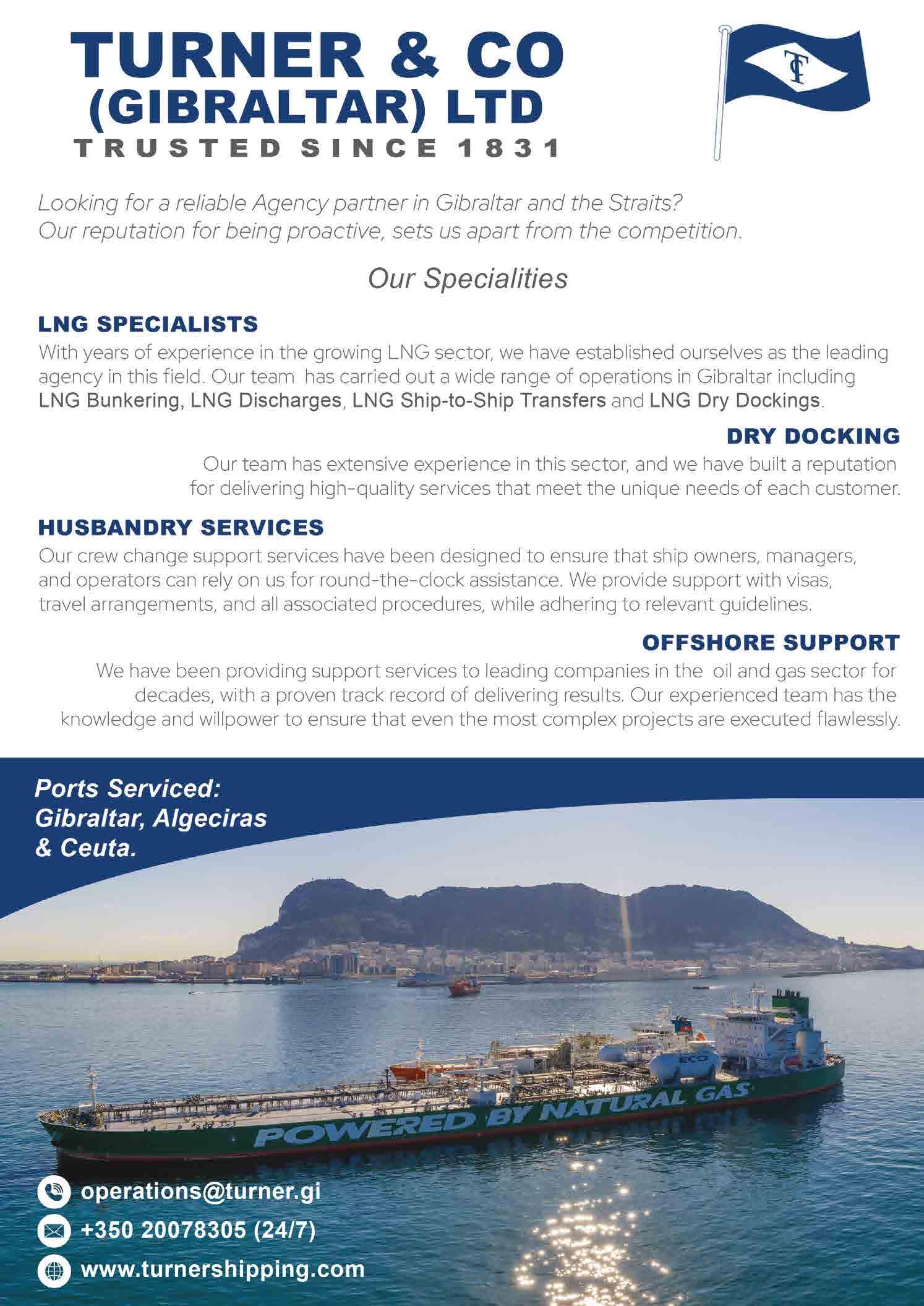
By Henrik Jensen, Founder and CEO of the Danica Crewing Specialists Group and Managing Director of Danica Maritime Services.
Crew shortages are something we have been talking about for many years; how the industry still isn’t prepared for a shortfall in people that will only get worse in the next decade.
As we know, young people leaving school, college or university have any number of choices as to what they do next. They also have different expectations from their careers compared to the generations that came before them. While their parents and grandparents might have settled into one career with one company for many decades, often with a view to protecting their pension, today’s young people may change direction completely every few years.
They also have a very different outlook on their future employer. Young people will ask about a company’s ethical and environmental performance, and they are more likely to want to work in a flatter management structure rather than a hierarchical one. They are also seeking stronger social bonds with friends, rather than being away from home for long periods of time.
The trend is backed up by hard facts: the Drewry Manning Report 2025/26 states there is currently a shortage of
8% of seafarers in actual numbers, a gap which is only expected to grow.
So what should shipping companies be doing? They need to be thinking in a modern way, the way companies outside of maritime are already thinking.
They must act in both the short and long term, and have a crewing strategy that accounts for both.
Many companies still recruit seafarers from just one or two countries they know best, the ones they have always relied on. In the past, one reason for this approach was the convenience of gathering crews at home for company conferences and training. Today, new technology such as webinars and online meetings makes it possible to bring crews together from anywhere in the world.
To mitigate the risk of a crew source running dry or being blocked by geopolitical issues, pandemics, or other disruptions, companies should spread their crew sourcing across three or four countries. Competence should matter more than the passport seafarers hold.
We are now in a global market and must be prepared to recruit from much further afield than we are used to. Africa, for example, is a rich source of young and new talent; recruiters should not shy

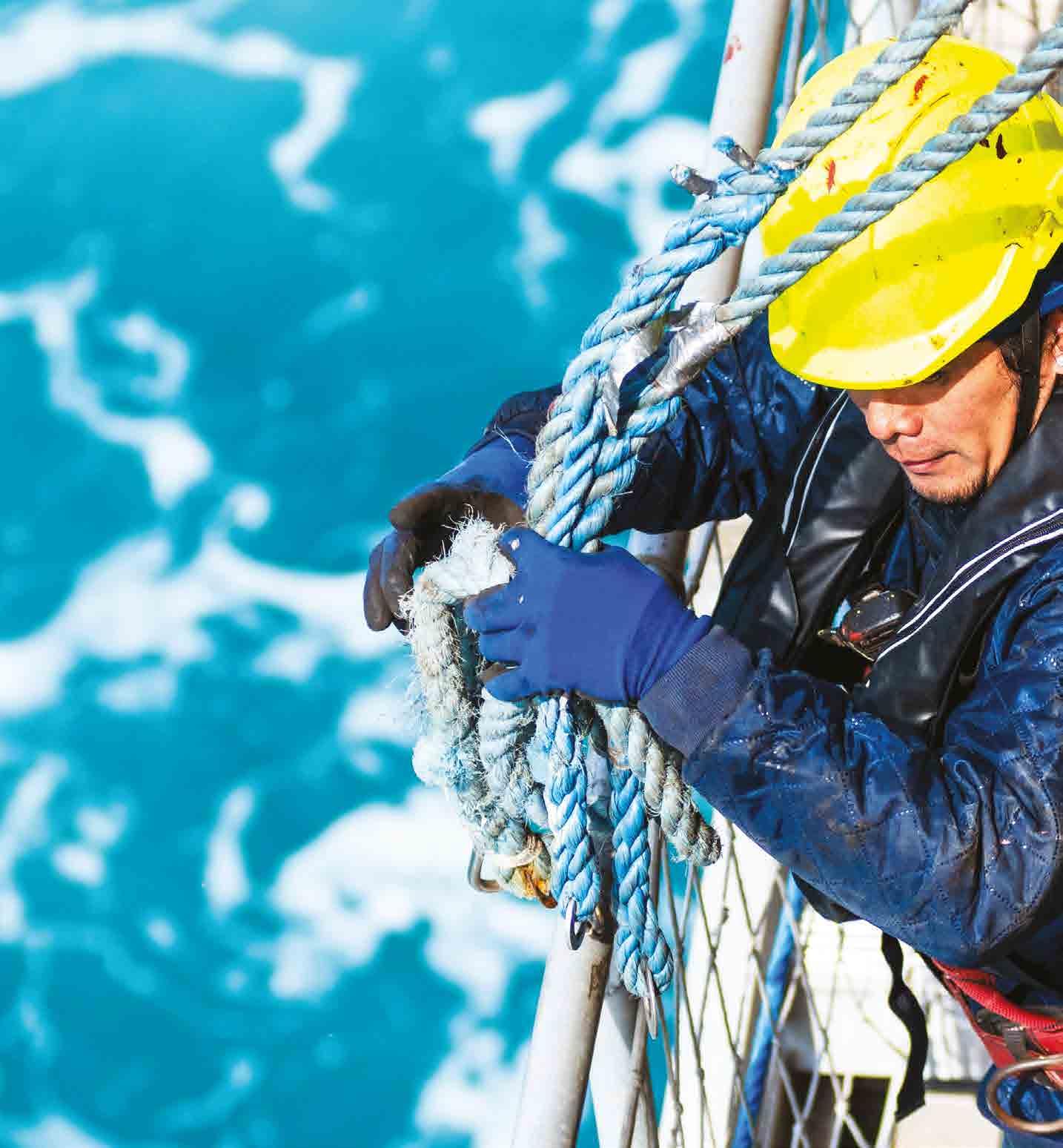
away from looking to this continent in the future.
Another way forward is to employ cadets to build your future pool of officers. This is an excellent way of securing people who will stay and grow into the sector.
Most companies act as though they have three competent candidates for each vacancy and therefore operate a long and cumbersome recruitment process. The reality is that highly competent officer applicants often have three job offers and can choose. To secure these applicants, the recruitment process must be organised in a way that gives them a much better and faster experience, of course without compromising on quality. Human nature is to take the easiest path, and applicants are no different.
Once you have them onboard, treat them with empathy and respect. Be hands-on with their development, support them, and work with them. Crew well-being and mental health are not safeguarded by hiring a consultancy and giving crew a telephone number to call if they feel distressed. True employee well-being is created through an inclusive company culture and genuine empathy. l
By Jennifer Harrison, Vice President, ABS Training Solutions
When ABS began its journey to developing an immersive training programme, the experience of handson training had become increasingly difficult during and post-Covid. Not owning any assets ourselves, and with tighter restrictions around getting surveyors onboard client assets for training, we decided to build our own virtual fleet with fully functioning components.
Across the three ships we created, we have over five years of findings embedded in our training and assessment modules. ABS surveyors do not need to wait for a specific vessel type or situation to arise in the port to learn.
And likewise, as we look towards bringing this same virtual training to others in our industry, seafarers do not need to rely on linear eLearning or videos to try and learn complex tasks.
In these virtual environments, equipment can be inspected; operations practiced, conversations held between avatars. And results may be easily assessed, discussed with the workforce and practiced until perfected; something that is very difficult to do onboard.
Simulated navigational assessments can turn flat paper-based assessments exams into realistic, better evaluating the true skills of navigators.
Pilot results show test scores dropping by an average of 30 points, taking a passing officer to a failing officer once conditions were more lifelike. That sounds counterintuitive
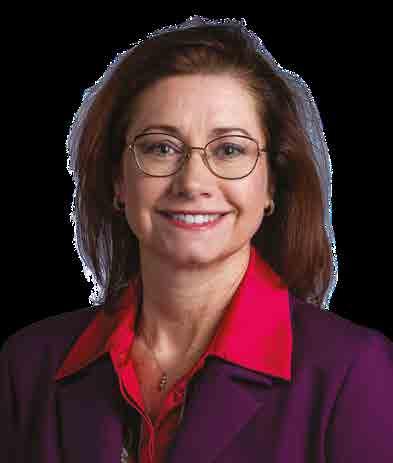

to the process, but in fact it’s critical to driving higher levels of safety.
To me, it is a great example as to why immersive training and assessment should become a new norm, not an exception in our industry.
At present, maritime is well behind the airline and medical industries in immersive training despite the parallels to safety, complexity, risk and regulation. Why is it not yet considered a form of ‘hands-on’ training for the shipping industry?
It is true that the nature of our workforce adds complications not faced by other industries. But with today’s explosion of technology and better internet access, we have the opportunity to begin using immersion more broadly – in our training schools, our offices and onboard our assets.
Our goal at ABS is to harness the value of immersion so it becomes an efficient training capability, available throughout the industry rather than an exorbitant,
expensive experience used primarily for bridge and engine simulations.
And why are we doing this? Simply put, for the safety of assets, the environment and most importantly the crew.
We believe that the true value immersion brings is confidence: confidence in our seafarers as they clock hours running through drills and scenarios, confidence in our leadership as they see assessment data that is more tied to reality than current training exams.
Training is still seen by some companies as a checkbox or a financial burden, while it is very much seen as a necessity by our seafarers.
It is great that this subject is getting more attention but we need to do more. As an industry we are responsible for creating an environment that supports a true safety culture and provide our seafarers with the effective training they need. l
A comprehensively human approach that takes account of the training and social and wellbeing needs of seafarers is the foundation for shipping’s safe transition to the sustainable future, writes Luis Benito, Business Development & Marketing Director, Wallem Group.


Over its 122 years of continuous operation, Wallem has evolved from a traditional ship manager into a provider of a broad portfolio of maritime services – including commercial and advisory services, ship agency, and Vessel IT Security and Management Services.
Nevertheless, as the foundation of everything we do, our crew strategy aligns with what our shipowners value most: safety, operational excellence, and quality service.
Today, Wallem must demonstrate that its hard-won reputation for safety excellence is reflected in its strategy to enable our industry’s transition to a new generation of fuels.
Whether operating conventionally fuelled tankers, running dual-fuel car carriers on LNG, or preparing for biofuel or ammonia propulsion, Wallem’s focus must be on ensuring that crews are safe, qualified, prepared, efficient and fully conversant with our clients’ commercial operation needs.
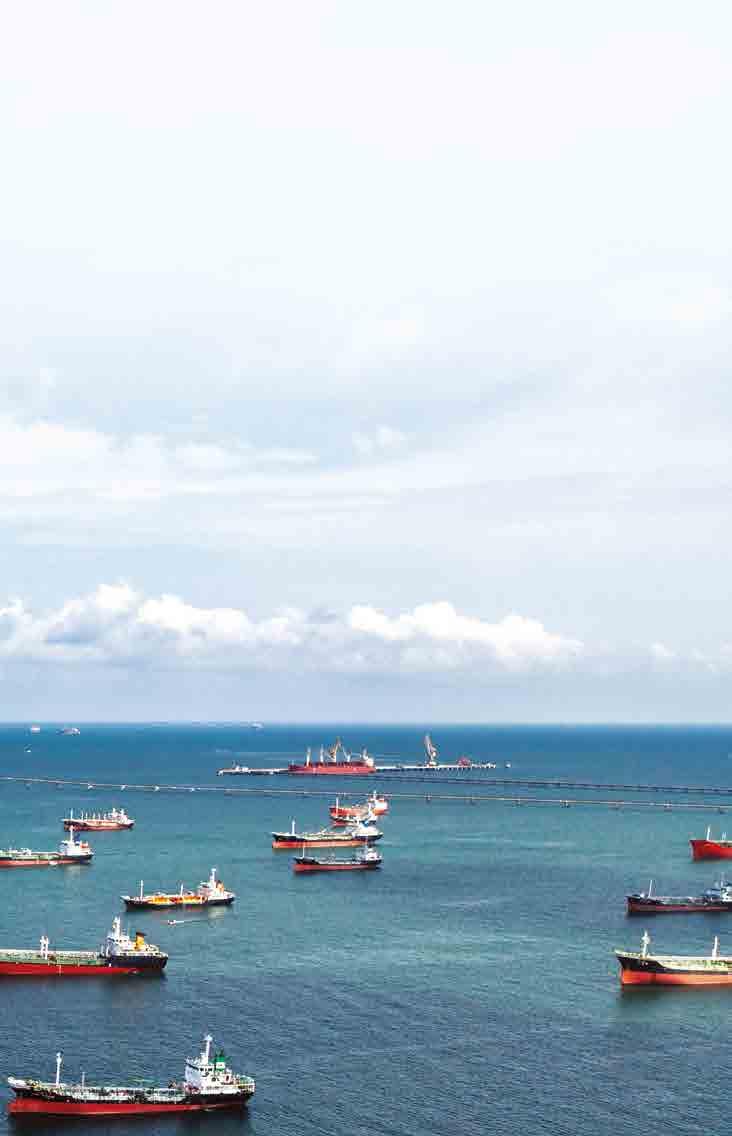
Wallem is therefore investing not only in new technology, but also in the people who will be expected to operate it, based on the conviction that a comprehensively ‘human approach’ is the most effective way of embedding a safety culture.
After all, while the right technical training is essential, attitudes to upholding safety standards benefit when seafarers know they are being listened to and can expect career development, family engagement, accessible connectivity and support with mental wellbeing.
From the technical perspective, Wallem aims to prepare ahead of clients’ needs. In 2022, we began classroom training for LNG-fuelled operations, expanding into onboard sessions the following year when we also initiated training for methanol. Earlier this year, Wallem published a best practice guide for biofuel use, while we have also started certification for ammonia.
In short, Wallem is preparing our crews for safe operation of all likely future ship fuels.
But new fuels are only one aspect of the technical challenges facing shipping. Last year, of 44,000 hours of technical training undertaken by Wallem crew, 10,000 hours was taken up by digital platform instruction, while 1,100 hours was dedicated to cybersecurity.
Furthermore, for Wallem, the broader topic of building seafarers’ resilience is a priority: having the ability to withstand difficulty and recover quickly in unpredictable environments is critical.
Every ship under our management carries a Mental Health Wellbeing Champion to prevent isolation and stress escalating, and 26 First Aiders are embedded across the fleet. Furthermore, Wallem delivered more than 7,000 hours of wellbeing training as part of our WELLNESS@SEA programme in 2024 - including 450 hours dedicated to diversity and inclusion.
As noted, career opportunities can also be a key influence on attitudes and levels of commitment. And, at Wallem, many cadets have risen to become Masters, Chief Engineers, and even shore-based Directors in technical and safety roles. We take understandable pride in the fact that our continuous personal and professional improvement translates to loyalty –with the seafarer retention rate at Wallem achieving 97%.
As part of our efforts to let seafarers co-shape future services, Wallem also holds annual Officers and Ratings Meetings across different regions, including China, India, Indonesia, Philippines and Eastern Europe, to foster collaboration between crews, executives, and shore staff. We are focusing on Indonesia as a growth market for crewing and clients alike.
When seafarers are onboard ship, Wallem also offers support to their families through its Women of Wallem (WoW) scheme - which offers practical help and social connection while they are away on long voyages.
Investment in seafarers also delivers on a broader mission: to serve society. As the world becomes more dependent on maritime trade, the resilience and wellbeing of those who move goods across oceans becomes everyone’s concern.
The maritime industry is changing fast through digitalisation and decarbonisation, but as a 122-year-old organisation, Wallem has shown how it can adapt by continuing to put people first. We do so based on the firm belief that the performance, efficiency and safety of ships of the future will only be as good as the seafarers who sail them. l
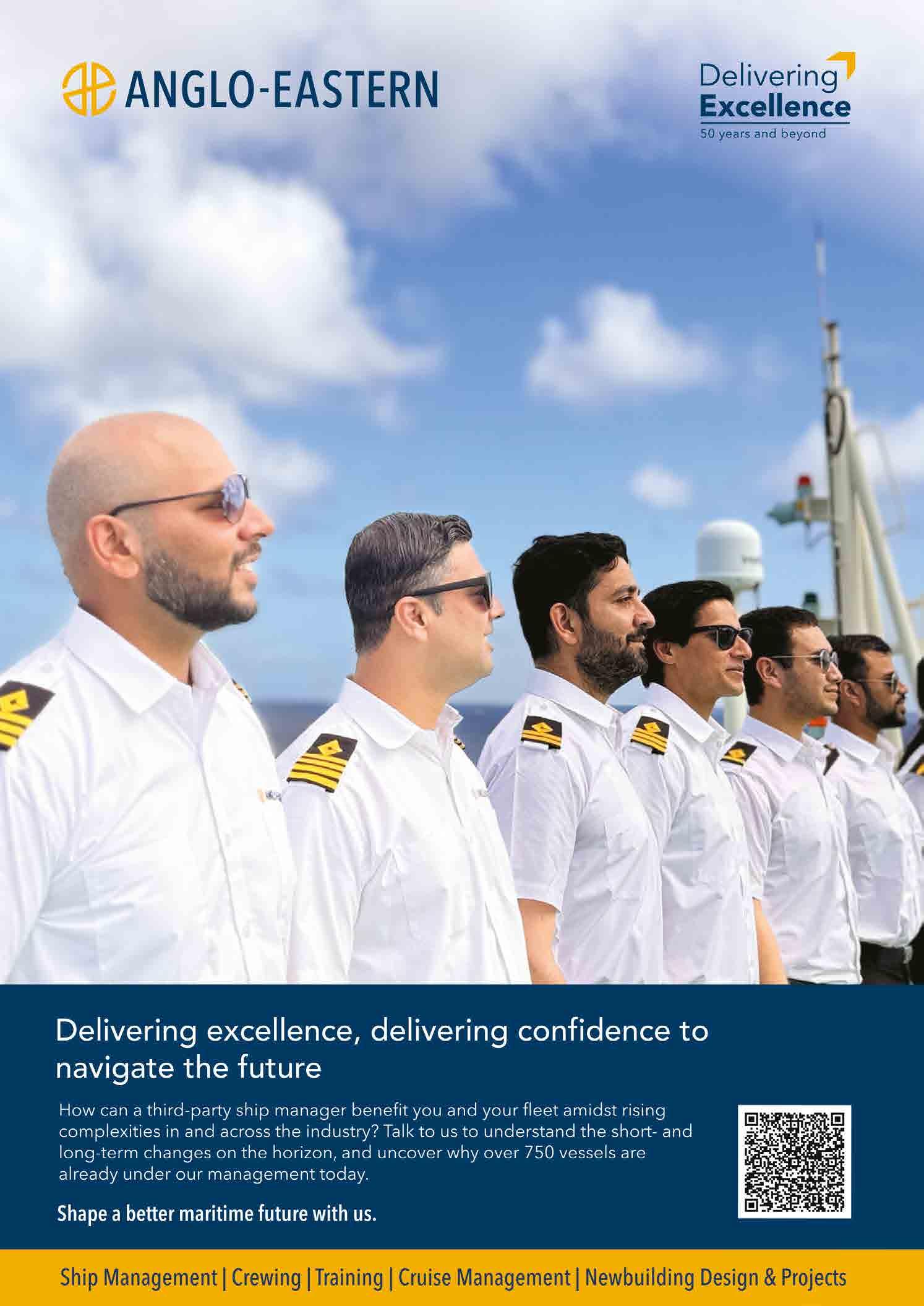
By Nikos Gazelidis, Chief Commercial Officer, ATPI Marine Travel

Most shipping professionals acknowledge that seafarer wellbeing is vital to vessel safety, operational efficiency, and long-term workforce stability. Yet, the journey to and from the vessel, the commute taken on by millions of seafarers every year, remains one of the most overlooked contributing factors to crew welfare, and job satisfaction.
Wallem is therefore investing not only in new technology, but also in the people who will be expected to operate it, based on the conviction that a comprehensively ‘human approach’ is the most effective way of embedding a safety culture.
After all, while the right technical training is essential, attitudes to upholding safety standards benefit when seafarers know they are being listened to and can expect career development, family engagement, accessible connectivity and support with mental wellbeing.
From the technical perspective, Wallem aims to prepare ahead of clients’ needs. In 2022, we began classroom training for LNG-fuelled operations, expanding into onboard sessions the following year when we also initiated training for methanol. Earlier this year,

Wallem published a best practice guide for biofuel use, while we have also started certification for ammonia.
In short, Wallem is preparing our crews for safe operation of all likely future ship fuels.
But new fuels are only one aspect of the technical challenges facing shipping. Last year, of 44,000 hours of technical training undertaken by Wallem crew, 10,000 hours was taken up by digital platform instruction, while 1,100 hours was dedicated to cybersecurity.
Furthermore, for Wallem, the broader topic of building seafarers’ resilience is a priority: having the ability to withstand difficulty and recover quickly in unpredictable environments is critical.
Every ship under our management carries a Mental Health Wellbeing Champion to prevent isolation and stress escalating, and 26 First Aiders are embedded across the fleet. Furthermore, Wallem delivered more than 7,000 hours of wellbeing training as part of our WELLNESS@SEA programme in 2024including 450 hours dedicated to diversity and inclusion.
As noted, career opportunities can also be a key influence on attitudes and levels of commitment. And, at Wallem, many cadets have risen to become Masters, Chief Engineers, and even shore-based Directors in technical and safety roles. We take understandable pride in the fact that our continuous
personal and professional improvement translates to loyalty – with the seafarer retention rate at Wallem achieving 97%.
As part of our efforts to let seafarers co-shape future services, Wallem also holds annual Officers and Ratings Meetings across different regions, including China, India, Indonesia, Philippines and Eastern Europe, to foster collaboration between crews, executives, and shore staff. We are focusing on Indonesia as a growth market for crewing and clients alike.
When seafarers are onboard ship, Wallem also offers support to their families through its Women of Wallem (WoW) scheme - which offers practical help and social connection while they are away on long voyages.
Investment in seafarers also delivers on a broader mission: to serve society. As the world becomes more dependent on maritime trade, the resilience and wellbeing of those who move goods across oceans becomes everyone’s concern.
The maritime industry is changing fast through digitalisation and decarbonisation, but as a 122-yearold organisation, Wallem has shown how it can adapt by continuing to put people first. We do so based on the firm belief that the performance, efficiency and safety of ships of the future will only be as good as the seafarers who sail them. l

New data from global maritime healthcare provider VIKAND reveals a clear picture of the medical challenges faced by crews onboard and underscores why the industry must rethink healthcare at sea.
Since August 2024, VIKAND’s OneHealth’s telehealth service has tracked initial medical encounters and follow-ups, providing a unique, data-driven insight into crew health.
Respiratory illnesses accounted for 14.1% of cases, genitourinary issues 13.6%, dermatological conditions 12.7%, Eye, Ear, Nose, and Throat (EENT) complaints 11.2%, musculoskeletal injuries 10.6%, while dental and oral health problems – which frequently go undetected in pre-employment medical exams – account for another 10%. These are not rare or extraordinary conditions, but everyday health issues that are magnified by life onboard.
The causes of these conditions are deeply connected to life onboard a vessel. Confined spaces and shared air allow infections to spread rapidly, while heat, humidity, and protective gear create the perfect environment for skin irritations and infections. Long shifts of lifting and climbing without ergonomic

safeguards lead to musculoskeletal strain, while limited access to fresh food and high-sodium meals contributes to urinary tract infections and dental deterioration. Irregular sleep patterns weaken immunity and slow recovery, compounding other health risks.
OneHealth data shows that healthcare at sea cannot remain reactive as treating a sick crew member or responding to a crisis is costly and disruptive. Instead, proactive, preventative, and ultimately predictive approaches are required.
As Ronald Spithout (pictured right), Managing Director OneHealth by VIKAND, states: “Predictable means preventable. But left unchecked, these health issues become operational vulnerabilities that cause lost workdays, and costly medical evacuations and voyage diversions.”
Every OneHealth consultation is tailored to the realities of life onboard, addressing hydration, posture, rest, and nutrition and while these recommendations may sound simple, they are practical and powerful in the context of long shifts and limited resources. More than a thousand follow-up consultations demonstrate that continuity of care is possible even far from shore, fostering a culture of prevention rather than crisis management.
The intelligence gathered through OneHealth also allows operators to address systemic gaps such as the prevalence of dental problems highlights
weaknesses in PEME screenings. By improving medical checks, providing dietary guidance, and educating crews, operators can prevent disruptions before they occur. Telehealth, therefore, serves a dual purpose: it delivers immediate care while generating actionable insights that inform broader operational strategies.
For shipowners and operators, proactive healthcare offers tangible business advantages. Fewer diversions and evacuations reduce costs, while improved crew morale strengthens retention and recruitment in an industry facing a shortage of skilled seafarers. A commitment to crew welfare also resonates with regulators and charterers, and enhances overall safety and compliance, and healthy crews are more productive and reliable, translating into measurable outcomes that affect the bottom line.
“The OneHealth data makes one point unmistakably clear: the most common health challenges at sea follow predictable patterns,” added Mr Spithout. “By acting on this insight, maritime companies can shift from reactive emergency care to proactive asset management, ultimately safeguarding both human and commercial resources.” l


Circle
DV Founder and CEO Meei Wong outlines how technology can empower seafarers and create a sustainable work/life balance
Life at sea is not for the faint hearted. Long periods away from home, demanding physical work, and the isolation of being hundreds of miles from the nearest hospital or bank are part of the job. But as shipping undergoes its digital transformation, emerging new technology can make life safer, healthier, and more secure for the world’s estimated 1.9 million merchant seafarers.
From telehealth platforms to digital wallets and wearable devices, new technology is becoming a lifeline, not just for operational efficiency, but for the people delivering global trade.
Medical emergencies at sea remain a major challenge. A sudden illness or accident can lead to costly vessel diversions and significant risk for both ship and crew. Telehealth, with doctors on call 24/7, is changing that dynamic. With video consultations, remote diagnostics, and digital health records available online, crews can now access professional medical advice at any time, from anywhere.
Telemedicine gives seafarers peace of mind being able to connect instantly to a doctor, often avoiding situations that can escalate into medical emergencies. Regular check-ups via telehealth also make preventive care more feasible, an important step towards reducing the industry’s reliance on reactive, crisis-driven healthcare.
Recent studies such as those by Yale University have identified that seafarers’ mental health is adversely affected by different factors including
extended work hours, interrupted sleep patterns and exposure to hazardous conditions. A recent study (Svetina et al, 2024) identified an alarming increase in the number of self-harm and suicide concerns among crew members with 2530% reporting symptoms of depression and anxiety higher than the general population. This has led some ship operators to seek specialist helplines with trained mental health professions to address this growing problem.
Smart watches and biometric sensors aren’t just consumer gadgets anymore, as they’re finding their way onto vessels as part of broader safety initiatives. Wearables can monitor vital signs such as heart rate, stress levels, or fatigue, and trigger alerts if readings show signs of risk.
Some devices are even being trialled to detect falls or man-overboard incidents, automatically notifying the bridge. In addition, the aggregated data can inform ship operators for better scheduling and fatigue management. For seafarers, it’s a layer of reassurance that their health is actively being monitored in real time.
Financial control is also now possible from anywhere with digital wallets. Managing money at sea has always been fraught with payment delays and high transaction costs. Digital wallets are now giving seafarers a way to store, transfer, and spend money securely, regardless of where they are in the world.
The impact goes beyond convenience. Faster remittances mean families at home have more financial stability, and seafarers themselves no longer need to rely on cumbersome cash payments or wait weeks for salaries to clear. For many seafarers living in remote locations without access to banks, digital wallets are also opening doors to greater financial inclusion.
Taken together, these innovations are reshaping the lived experiences of seafarers. Crew members who can monitor their health with a wearable, consult a doctor via telehealth, see specialist mental health support and send money home instantly through digital wallets, are not just safer and healthier but feel more empowered and in control leading to better onboard morale and consequently higher productivity. l
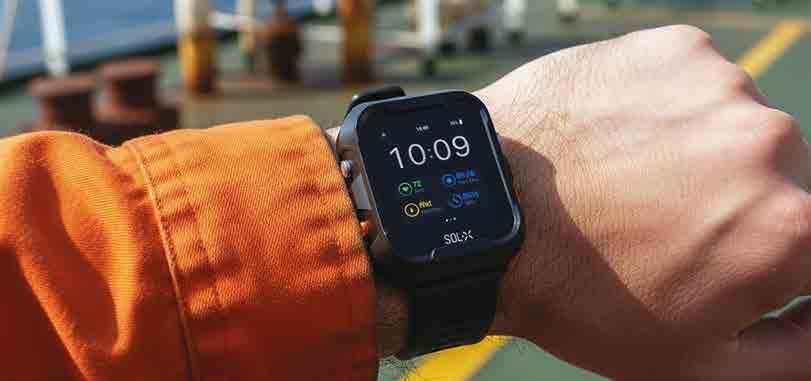
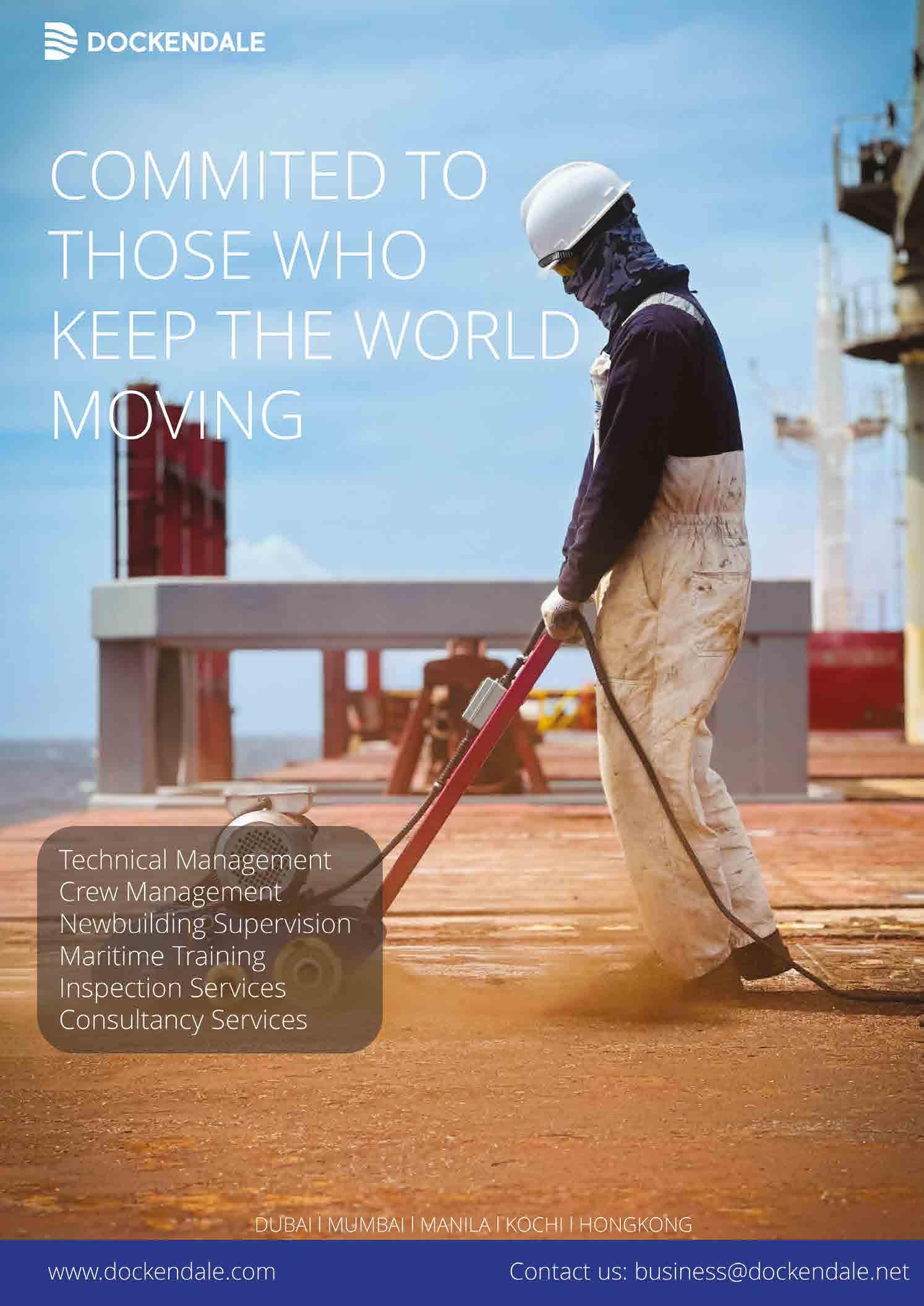
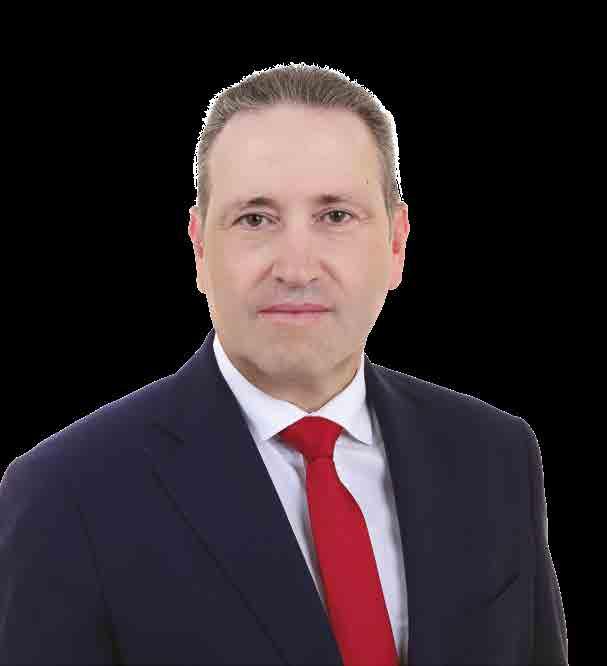
By Yannis Petrakis, MD, BSM Catering Services
Addressing these challenges requires a combination of better provisioning practices, crew education on nutrition, improved onboard storage solutions, and company-level commitment to prioritizing seafarers’ well-being through diet.
Q) What measures do you take to adapt to the diverse dietary and cultural needs of multinational crews?
Yannis Petrakis: Working with multinational crews requires a respectful and thoughtful approach to food preparation and menu planning. We always start by familiarising ourselves with the cultural and religious backgrounds of the crew members — understanding key dietary restrictions such as halal, vegetarian, or non-pork preferences is essential. Where possible, we request this information in advance or during onboarding so we can prepare accordingly.
Q) What are the key challenges seafarers face in maintaining a healthy, balanced, and high-quality diet while onboard?
Yannis Petrakis: Seafarers face several challenges when it comes to maintaining a healthy, balanced, and high-quality diet at sea. One of the primary issues is limited access to fresh food, especially fruits and vegetables. Since voyages can last for weeks, it’s difficult to consistently store or replenish perishable items, and preserved or processed foods often become the default.
Another significant challenge is the lack of variety. Menus tend to be repetitive, especially on smaller vessels, which can lead to nutritional gaps and food fatigue. This can negatively impact morale and may lead crew members to opt for comfort foods that are often high in salt, sugar, and fat.
Work schedules also play a role. Seafarers often work long and irregular hours, which can lead to skipping meals or eating at odd times—this disrupts metabolism and healthy eating patterns. In some cases, the availability of healthy options during night shifts is limited.
Additionally, not all crew members may be fully aware of nutritional best practices, and some vessels may lack trained cooks or sufficient dietary planning. Budget constraints can also impact the quality and diversity of food supplied.
We also make an effort to rotate dishes from different cuisines throughout the week, so everyone feels represented. For example, incorporating Asian dishes, European meals, and traditional Filipino or Indian recipes based on the crew’s composition not only caters to their preferences but also boosts morale and a sense of inclusion.
Another important measure is maintaining clear communication with the crew. We regularly ask for feedback on meals, and we are always open to suggestions. This helps us make small adjustments that go a long way — whether

it’s offering spicier options, reducing salt, or preparing rice in a preferred way.
Additionally, we try to balance cultural preferences with nutritional needs, ensuring that regardless of the dish’s origin, the meals are wholesome and varied — with sufficient proteins, vegetables, and fiber.
Ultimately, it’s about creating an inclusive and respectful food environment where crew members feel considered and cared for. This promotes not only physical health but also a positive atmosphere onboard.
Q) Shipowners often see catering as a cost, but it can also be an investment in crew performance. Can you share examples where your nutrition programs directly improved crew retention or operational efficiency?
Yannis Petrakis: Absolutely — we strongly believe that quality catering is not just a cost but a strategic investment in crew well-being, retention, and operational efficiency.
One example comes from a long-term contract we had with a large shipping company that had been experiencing high crew turnover and low morale — especially among multinational crews with diverse dietary needs. After we implemented our targeted nutrition program, which included culturally inclusive menus, regular rotation of dishes, and fresh produce provisioning at key ports, the shipowner reported a noticeable drop in turnover within two rotations. Crew feedback improved dramatically, with many citing food quality and variety as key reasons for staying onboard longer.
In another case, we introduced nutritionally balanced meal planning and onboard training for galley staff focused on portion control, hydration, and energybalanced meals — especially important on vessels with physically demanding work environments. Over the course of several months, captains and superintendents began reporting fewer fatigue-related complaints, better focus during critical operations, and even a reduction in minor

onboard incidents, which they partially attributed to improved diet and alertness.
We’ve also seen the value of investing in digital meal planning tools and crew feedback platforms, which allow us to adjust menus in real-time based on preferences, dietary restrictions, and operational schedules. This not only cuts food waste and optimises costs but also shows crews that their input is valued — reinforcing trust and long-term engagement.
Ultimately, these examples confirm what we’ve always known: a well-fed crew is a more productive, loyal, and safer crew. When shipowners understand that catering impacts everything from health to retention and even compliance, it shifts the conversation from cost to value.
Q) What key message would you like to leave with the maritime industry and the global community about the importance of seafarers’ nutrition and well-being?
Yannis Petrakis: Good nutrition at sea is not just about food — it’s about safety, focus, morale, and performance. A well-fed crew is not only healthier but more alert, more resilient, and more motivated. We’ve seen time and again how thoughtful, balanced catering can directly impact retention rates, teamwork, and even operational efficiency onboard.
If there’s one message I would like to leave with the maritime industry and the wider global community, it’s this: investing in seafarers’ nutrition and wellbeing is not a luxury — it’s a necessity. These men and women are the backbone of global trade. They endure long periods at sea, often under physically and mentally demanding conditions, and the least we can do is ensure they are properly nourished, cared for, and respected.
In an industry that rightly places growing emphasis on ESG principles, crew wellbeing must be a central pillar of the ‘social’ component. The global community often overlooks seafarers, yet they ensure that supply chains — including the very food we eat — continue moving. They deserve better than minimum standards.
At our company, we take pride in delivering not just provisions, but purpose-driven catering solutions that reflect cultural diversity, nutritional science, and deep respect for the people we serve. By doing this we help shipping companies foster healthier, happier crews—and that translates into safer operations, stronger retention, and a more sustainable industry.
My message is simple: if we expect professionalism, endurance, and excellence from our crews, we must meet them with the same standards of care, starting with what’s on their plate. The maritime world must recognise that behind every shipment delivered, there’s a human story. Let’s honour that story by ensuring our seafarers are nourished, supported, and valued—not just as workers, but as people. l
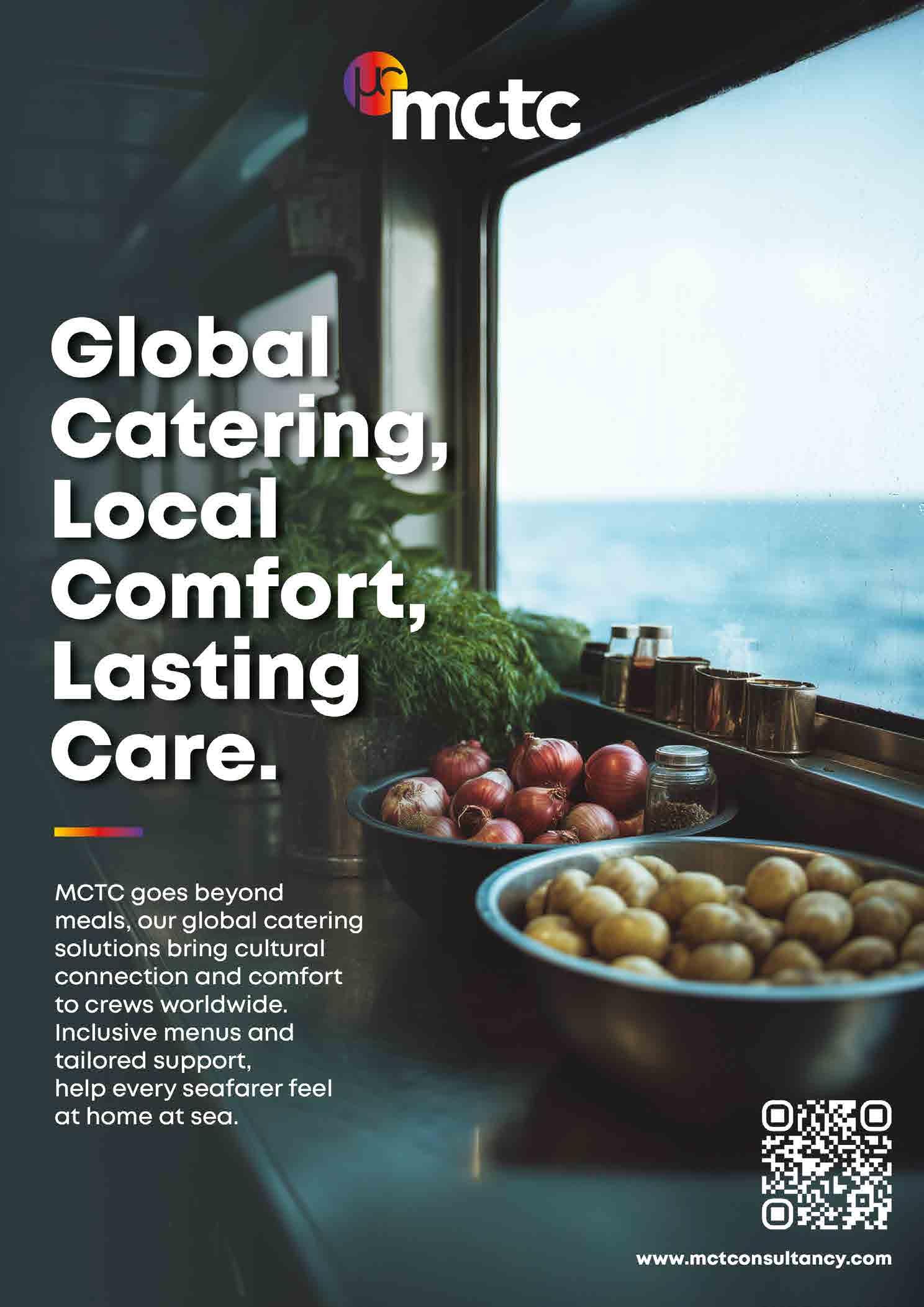
In today’s global maritime industry, vessels often bring together crew members from a wide range of nationalities, cultures, and languages. This diversity enriches life at sea, but it also presents complex well-being challenges that can affect morale, teamwork, and operational efficiency.
Recognising that crew welfare and environmental responsibility go hand in hand, MCTC has introduced two groundbreaking digital tools, the Nutritional Values Report and the Carbon Emissions Report, designed to elevate both crew well-being and sustainability in maritime catering.
Nutrition has always been at the heart of seafarer well-being. Yet dissatisfaction with onboard meals has long been a common concern, with crews citing a lack of variety, poor nutritional balance, and repetitive menus.
MCTC’s Nutritional Values Report changes that. The digital platform enables Chief Cooks to track calorie intake and nutritional breakdowns across daily, monthly, and yearly periods, benchmarking them against internationally recognised Reference Daily Intake (RDI) standards.
By providing detailed insights into macro and micronutrients per meal and per person, the system empowers catering teams to design balanced menus that meet diverse cultural and dietary needs. On mixed-nationality vessels, this is particularly vital, food

By Christian Ioannou, CEO, MCTC
is fuel, it is identity, comfort, and it’s a vital link to home.
Including culturally inspired dishes alongside nutritional transparency ensures every crew member feels represented and cared for, the foundation of morale, inclusion, and teamwork.
Language barriers, cultural differences, and perceptions of favouritism can all affect harmony on board. When meal planning is supported by objective nutritional data, trust replaces guesswork.
MCTC’s transparent approach ensures food choices are driven by health metrics, not personal preferences or bias. This data-led fairness enhances confidence and promotes a shared sense of accountability for health and well-being.
Health and sustainability are now two sides of the same coin. Through
its Carbon Emissions Report, MCTC enables ships to monitor the CO2 footprint of every provisioned item. Using weighted global averages that factor in production methods, transport, and land use, the system identifies emission hotspots and suggests lower-impact alternatives.
This empowers cooks and procurement teams to make environmentally conscious substitutions without compromising quality or cultural variety, supporting clients’ ESG and Scope 3 reporting goals.
By combining health-focused catering with sustainability analytics, MCTC is redefining care at sea. As Group CEO Christian Ioannou notes,
Efficient galley operations can go hand in hand with crew wellbeing and environmental responsibility. This is maritime catering with impact, measurable, meaningful, and made for the future.
Through innovation, transparency, and respect for diversity, MCTC is proving that nourishing people and protecting the planet can truly sail side by side. l

by Felicity Landon
Sometimes, after years of persistent lobbying and campaigning, an industry sector does finally get what it wants. In Malta’s case, the prize at hand is a national Maritime Transport Strategy, announced by the Maltese government towards the end of 2024 and now progressing towards the consultation phase.
The creation of a dedicated government ministry for maritime, long called for by stakeholders, remains on the wish list for now – but nevertheless, they have welcomed the prospect of a specific blueprint for the maritime industry, which will fit into the nation’s new economic strategy, ‘Malta Vision 2050’.
Malta’s strengths as a maritime hub in the middle of the Mediterranean are inextricably linked to its ship register; the Maltese flag is the largest in Europe, and sixth largest in the world. However, Malta must look beyond its flag and use its breadth of maritime activities – transhipment, import/export, cruise, training, shiprepair, legal services, ship agency, bunkering and others – to attract new investment, says Godwin Xerri, Chairman of the Malta Maritime Forum (MMF).
He hopes – perhaps optimistically – to see the strategy in place by the end of 2025. “The industry has become so dynamic that we cannot afford to procrastinate and delay. There is so much to be done,” he says. “The need for a maritime strategy has been on our agenda for quite

a number of years, and we were very pleased when the government launched it and appointed Karmenu Vella, the former European commissioner, as coordinator.”
With the framework agreed upon, the next phase is the consultancy period. “We must make sure that every sector is involved in order to take into account the challenges and aspirations of each,” says Xerri. “We have agreed in principle that it will not be a report but an action plan with KPIs (Key Performance Indicators), revisable every year or so – because what we are after is a working document, not a report to be put on a shelf somewhere.”
Among the developments the MMF would like to see is the establishment of a Free Zone area, probably located between the Malta Freeport Terminals transhipment hub and the airport. This would provide for the handling of groupage cargo, project cargo and sea-to-air and sea-to-land logistics, says Xerri. “Fortunately, the Customs department is in a phase of modernising its systems – and we would need to depart from certain Customs practices and adopt more IT tools to facilitate their work and reduce bureaucracy
and costs. We already have the Malta Free Zones Act, under which the authorities can declare any area in Malta as a Free Zone.”
Politics comes into this – as things stand, handling costs for domestic cargo are “much more expensive” than those for transhipment cargo, he says.
“It is an anomaly – normally, charity begins at home, but since transhipment is a competitive industry, one has to be in line with other competitors. For cargo discharged in Malta, there is a different type of tariff. We have to look at this activity of the Free Zone differently, because that is also something we need to compete for.”
This requires stakeholders all along the supply chain – including ship agents, stevedores, hauliers and others – to be “bold enough to let go” in order to increase activity and attract new business, says Xerri.
There are also discussions about ways to bring more ship finance and ship management activities to Malta, and to attract more investment into the maritime sector.
“We have the right legislation, we have the flag, we have the expertise of the transport authority
– we have what we need to attract ship management to Malta,” continues Xerri. “Tied to that would be the crewing aspect. Malta stands to benefit particularly by creating its own niche for the management of superyachts, including training and crewing. The registration of yachts under the Malta flag has gone through the roof since Covid and creates a window of opportunity.
“And that brings us to another area which Malta should take up – education and training for the maritime sector,” he adds. “Whether university, college or the private sector like MaritimeMT, we have the facilities for maritime training. To attract people to come to Malta to be trained, qualified and certificated, we need to ensure that at the end of the tunnel they have the possibility of employment.”
The MMF wants to see a clear policy and strategy to attract investment into the maritime sector, and a positive aspect is that the Bank of Valletta is looking at entering into ship finance, says Xerri. “We have a very good rapport with the Bank of Valletta. We invite them to our meetings, and they assist us by way of sponsorship. We have also had meetings to discuss risks in the maritime sector and explain various aspects of ship finance.”
The latest stats from Malta Ship Registry, issued at the end of August, show 1,999 ships flying the Maltese flag, adding up to a total 90.04m GT. In addition, 6,150 yachts under 24 metres totalling 102,770 GT (mostly local craft) and 1,298 superyachts over 24 metres amounting to 394,501 GT were registered. The fleet also includes 727 fishing vessels totalling 8,010 GT, and 242 others such as
survey vessels, tugs, towing vessels and service craft, with a combined 946,726 GT.
The registry has embarked on a digital transformation which has included the introduction of an e-certification system, replacing traditional paper certificates with digital copies. A digital platform will integrate all registry services, enabling clients to apply for services and complete payments online.
Maritime is one of the most important pillars of the Maltese economy and a clear maritime strategy is fundamental for the community, says Ann Fenech, Partner and Head of Marine Litigation at Fenech & Fenech Advocates in Valletta. “There are many people out there who think of Malta as the largest flag of Europe – which is true, and we are very happy about that – but frankly that is just one aspect of Malta maritime, because this rock in the middle of the Mediterranean represents every single conceivable aspect of the maritime space – shiprepair, transhipment, bunkering, cruise lines, maritime education, towage, pilotage, and so on,” she says. “The maritime strategy is a work in progress. I am appreciative of the fact that they are meeting with various people in the sector and hope that when it is finalised, it will set us in good stead.”
Happily for the sector, there is consensus across government and opposition as to the importance of maritime, she adds. “That leads to certainty, clarity and stability – which is what investors want, and sets us apart from our competitors in other jurisdictions.”
An important step forward will be the creation of specialised courts to hear maritime law cases, according to Fenech. “We have been working on this for a number of years. We are not going to have a maritime

court per se, but amendments are before parliament for the creation of a dedicated commercial court, within which there can be judges specialising in maritime cases. That will lend itself to more efficiency and a superior product. Our judges have always risen to the occasion and given us good judgments. However, we are not generic lawyers but very specialised, and it is unfair to expect generic judges to handle very specialised cases.”
As President of the Comité Maritime International (CMI), Fenech is delighted that the Beijing Convention on the Judicial Sale of Ships has been adopted and UNCITRAL has announced it will enter into force in February 2026. After the Convention was signed off in Beijing, a second signing ceremony was held in Malta, a popular location for judicial sales. The Convention establishes a harmonised international framework for the judicial sale of ships, protecting the rights of purchasers and creditors.
“For Malta, this is important. One of the big advantages of registering ships under the Malta flag is that the financiers of mortgages have an executive title which means that
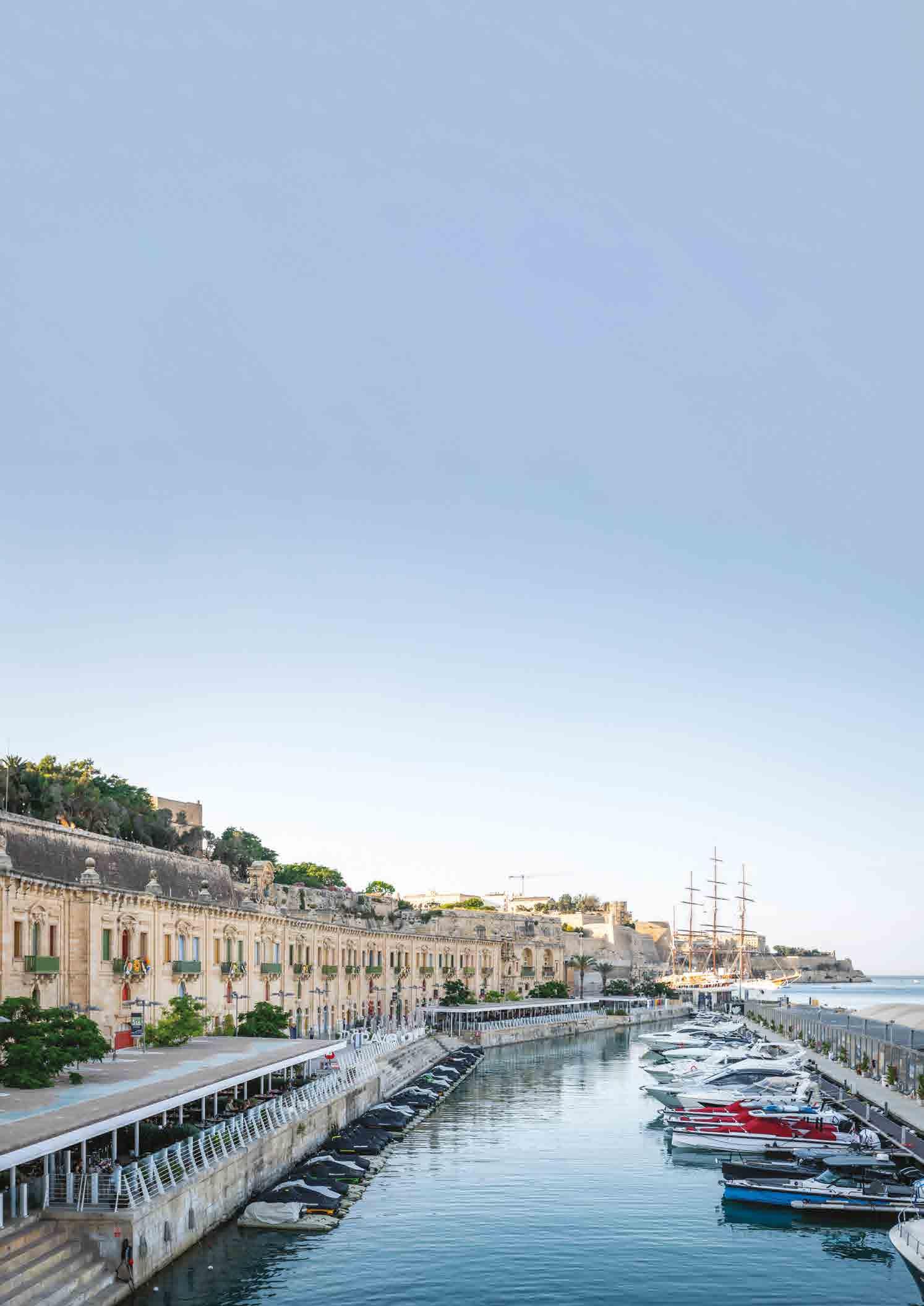
if ships default, they can go straight to a judicial sale, with the vessel sold free and unencumbered. The new Convention confirms that such judicial sales will be honoured and given full effect,” says Fenech.
“The Convention ensures that when a buyer buys a ship in judicial sale, that ship is free and unencumbered and can go anywhere in the world without fear of arrest. Ship financiers will be happy, because the last thing they want is to extend finance to a ship in a judicial sale only to face creditors further down the line.”
Matthew Attard, Partner at Ganado Advocates and President of the Malta Maritime Law Association (MMLA), says: “The Malta flag continues to grow in terms of its tonnage and importance. For commercial ships, the growth has been less intense than previous years – that isn’t to do with competition alone but to do with the changing dynamics of shipping. Nevertheless, we are still a growing flag. There has been much more success in the past five years in yachts – the register has grown exponentially.”
The MMLA has been assisting in the move towards digitalising the ship registry, said
Attard. “This has been a slow and arduous task – it was important to get it right. Digitalisation often gets misinterpreted. The project was not only to start digitalised certificates of registry – obviously welcomed by the industry – but was much bigger, in terms of modernising the registry and its administration. Much of the impact is to streamline the administration’s processes, modernising the way it operates internally to increase the quality of the product offered.”
Ganado Advocates has grown to more than 100 lawyers, and maritime is one of the pillars for the firm, explains Attard. “Our maritime team – of lawyers and supporting staff – has expanded over the past five years, a reflection of the importance of maritime law in Malta.
He looks ahead with positivity. “We still have many opportunities in front of us but we need to know how to grasp them and have a strategy in order to do so. There is an appetite for growth in this sector and now we need to take it to the next notch. We have a large flag, all the expertise and a few international shipmanagers in Malta but I would like to see a bit of momentum to create an actual ecosystem of the onshore professions and a more tangible presence of the larger players. One
problem perhaps keeping new people from establishing shop in Malta is that we don’t yet have enough people to create a pool – anybody who has started up most of the time has had to import the workforce. But as more of these companies come, it stands to reason that you create a bigger pool of talent.”
Malta Freeport Terminals’ (MFT) Terminal Two expansion, known as the ‘Squaring Off Project’, is the first expansion to take place at MFT in two decades. The €56m land reclamation project, now progressing, will extend the North Quay by 176 metres to a total 688 metres and the West Quay by 195 metres to 313 metres. The North Quay will be equipped with six quay cranes with 25-box outreach. The project is aimed at futureproofing MFT’s operations while enhancing its competitive edge in the region, says a spokesperson, and will increase capacity from 3.6m to 4m teu. “This development will boost the terminal’s operational efficiency and streamline vessel turnaround times, which are critical for sustaining high service standards and effectively managing peak periods.”
So far, eight caissons have been fully cast and six have been positioned – these form part of the 11-caisson containment that will shape the perimeter of the extension. Each caisson is being constructed through a continuous process – the base is first reinforced, then the slip-form is positioned and filled with concrete, mixed at Terminal One and transferred to Terminal Two. As the concrete sets and strengthens, the slip-form is gradually raised, and the finished caisson is floated into the sea and aligned into place.
In 2024, MFT handled 2.86m teu from 1,564 ship calls. Services link Malta with more than 110 ports, more than 60 of these in the Mediterranean.
The Ocean Alliance uses the terminal as its Mediterranean transhipment hub; outside the alliance, CMA CGM and MSC are the major callers.
MFT is implementing digitalisation projects and is the first terminal within the CMA CGM Group to deploy NextPort, which uses AI and digital twin technology to streamline port and terminal operations.
“This cutting-edge solution creates a real-time virtual model of the entire terminal, enabling us to visualise equipment status and movement, detect potential delays and identify operational bottlenecks,” says the spokesperson.
Meanwhile, MFT has acquired a GlobalSim crane simulator to provide in-house training on quay cranes and RTG cranes, introduced four fully electric tractors into the containerhandling fleet and invested in its first electric empty container handler. Additional reefer slots have been provided to meet the rising demand for temperature-controlled cargo –MFT is a hub for perishable goods in the Mediterranean.
The multipurpose Valletta Gateway Terminal (VGT) handled more than 54,000 trailers last year, and volumes this year have remained in line with 2024. There has been new car transhipment business since 2024 due to the impact of the Red Sea turmoil, says CEO Nicholas Tan. VGT is happy to be able to support the diversion of these car carrier ro-ro services heading around the Cape of Good Hope and through the Strait of Gibraltar, he says – but the increased activity has added further pressure to the already squeezed Laboratory Wharf.
“There is a need to increase external yard space to support the growth of the port which is, in turn, related to the growth in the consumption of Malta’s economy,” says Tan. “The government needs
to work together with VGT and the related stakeholders to plan for space. There is also a need to rehabilitate and organise the area in the immediate vicinity of VGT’s terminal to accommodate the trailer operators and ro-ro activities – namely, maintenance of road and provision of parking space.”
In June (2025) the government started the construction of onshore power supply facilities at VGT. This work has taken up more than 5,000 sq m at Laboratory Wharf, putting even more pressure on capacity and creating further need for yard space outside the terminal, adds Tan.
At the beginning of 2025, the government, through Infrastructure Malta, started works on the rehabilitation of Deep Water Quay’s 100-metre quay – these works are expected to be finished by the first quarter 2026.
VGT will take delivery of two new Terberg tugmasters at the end of this year to support its ro-ro activities; these bring the fleet to 13, and there are plans to add three more. From July, Grimaldi, one of VGT’s major clients, has deployed the hybrid ro-ro vessels Eco Barcelona and Eco Napoli on its Malta routes, replacing older vessels.
Adjacent to VGT, a €65m new deepwater quay was due to for completion two years ago – but this year Infrastructure Malta cancelled its agreement with the contractor due to significant delays. It is understood that there will be a new tender issued. EU Cohesion Fund money provided is secure until 2029. Malta Maritime Forum and others have emphasised the need for the revised development to provide a dedicated ro-ro berth rather than the previously proposed floating ro-ro ramp.
The new terminal will be directly connected to VGT’s facilities in Laboratory Wharf and therefore it is in VGT’s strong interest to be able to manage the new terminal so that
a comprehensive long-term strategy can be developed for both, according to Tan. “Our existing capabilities and presence would bring value-add to the project with already existing investment in place to support the cargo handling capabilities for the local economy within the Grand Harbour. No decisions have been made on how the new facility might be managed or handled,” he says. “VGT will express our intentions to contribute to or be part of this project.”
There is also speculation about some changes ahead for the Mediterranean Maritime Hub (MMH), which took up a 65-year concession at the Marsa shipbuilding site in 2016, focusing on the oil and gas industry. Since then, it has also used the site for yacht servicing, as a convention centre and for other activities.
However, Angelique Abela, Executive Chairperson, says: “It’s business as usual at MMH. Oil and gas activity is picking up and going strong, with our facility continuing to serve as a true hub for the sector.
“Meanwhile, our yacht maintenance and repair operations are also growing steadily year after year. Over these last two years we upgraded the sheds with new roofs, new doors and lighting system and we invested in a dry marina structure.”
There will be no issue of a new concession – MMH holds the title to the land, she says. “Should there be any investor onboarding, this will be announced through official channels. Our focus remains on growth and continued development across all our business segments.”
A record number of cruise passengers visited Malta in 2024, surpassing the pre-pandemic peak.
More than 940,000 passenger movements were registered at the Valletta Cruise Port last year, a 4% increase on the previous record year of 2019. The Grand Harbour received 357 cruise ship calls.
It is estimated that cruise ships berthing in the Grand Harbour contribute circa €88m to Malta’s economy each year – made up of €38m in spending by passengers and €50m by the cruise lines.
Recent investment in onshore power infrastructure has provided the capacity to power up to five cruise ships simultaneously.
The call for a dedicated Maritime Minister (or Ministry) is nothing new in Malta – and the sector hasn’t given up on this. Matthew Attard says: “The industry is calling out for a Minister for maritime matters. The current structure is based on the Minister of Transport and Infrastructure dealing with maritime
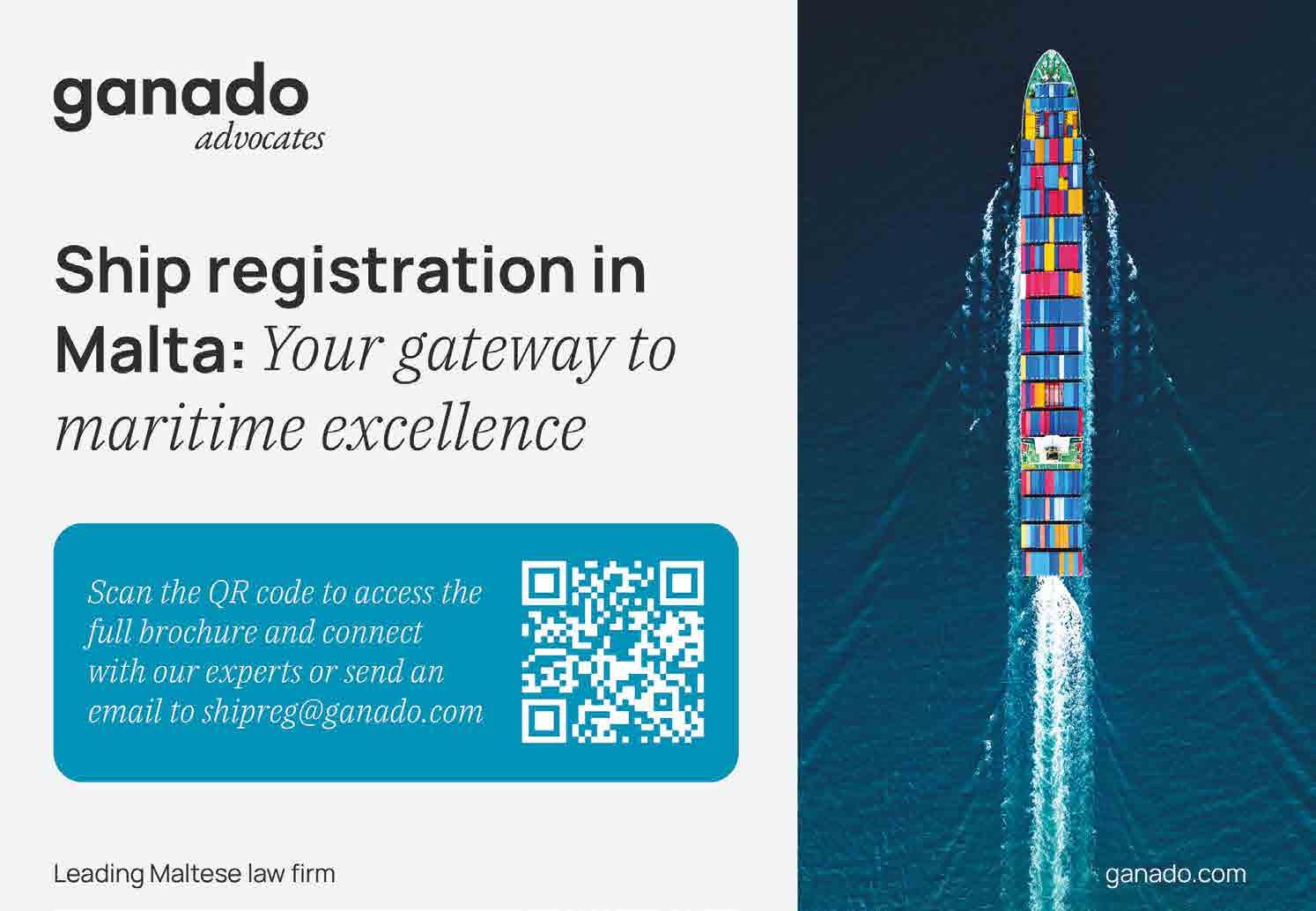
matters as well. Although he has done a very good job, his portfolio is very intense. We have the same minister handling the roads, public transport and infrastructure, and the maritime segment is just an added element.”
He acknowledges that Malta already has a large parliament in proportion to its population, so the counter argument could be the costs associated with creating a new ministry. “But we believe it is still something to consider, especially after the Maritime Transport Strategy study will reveal effectively how important the industry really is to us as a nation.”
Godwin Xerri says: “There is so much happening on the maritime scene. With all due respect to incumbent ministers and chief executives, a real focus is required from the public sector to drive this industry, especially today because of the complexities and many contradictory vibes coming out of the EU as far as shipping is concerned. We need the political force behind us to drive home the reality of the situation that maritime Malta faces.”
He is particularly referring to the EU Emissions Trading System (ETS). “It is beyond any doubt that the ETS has been detrimental to Malta and the sooner the EU adjusts its policy either with an IMO ETS or to review the existing ETS, the better.”
Xerri relates that when the ETS was being introduced, “we were being challenged by people from Brussels to prove that Malta would be at the losing end of this. Today, we do have the proof from shipowners who tell us very bluntly – ‘No, we can’t call at Malta because we have to pay the tax, so we will call at a non-EU port’. If any proof is required, only look at what has been happening in neighbouring countries like Egypt and Morocco, where terminals have been mushrooming. The fact that today there are so many terminals in these countries undertaking transhipment activities, proves that this is all business taken away from European ports.”
Malta has also found itself in a difficult situation where the EU has announced sanctions against Russia, he adds. “Malta is obliged to follow these sanctions, but by adopting them, the flag became less attractive because others – Liberia, Marshall Islands – did not adopt them. Malta is only one voice out of 27 [in the EU]. It needs to take a more proactive approach and coordinate with other Mediterranean countries to make sure that in Brussels, we are heard and we are heeded.”
The Malta registry has over the past ten years adopted increasingly rigorous KYC (Know Your Customer) standards, says Attard. “Whenever
there are new sanctions introduced, we are very quick to respond because we have the data on who are the beneficial owners of the ships operating under the flag. That it is very different to some flags that don’t provide this level of scrutiny. What is very unfair – and we assisted the government in rebutting – is when there are articles that claim, with no evidence, that Malta is supporting the dark fleet to evade sanctions. That is not simply not the case.”
The international geopolitical and European law realities Malta is facing are beyond its control, he points out. “We do face challenges such as the EU taking a proactive approach on sanctions that are not in line with what the rest of the international community is adhering to. The EU has – as the ETS has shown us – a tendency of wanting to set environmental standards without sometimes understanding that there are loopholes for customers and companies to relocate their business elsewhere because of the costs of being environmentally friendly. That leads to us being less competitive than others.”
As Ann Fenech points out, this can even lead to more carbon emissions as vessels deviate from their normal route to avoid the ETS regime, increasing the length of voyages. “Anything which is regional simply shifts the problem,” she maintains. l
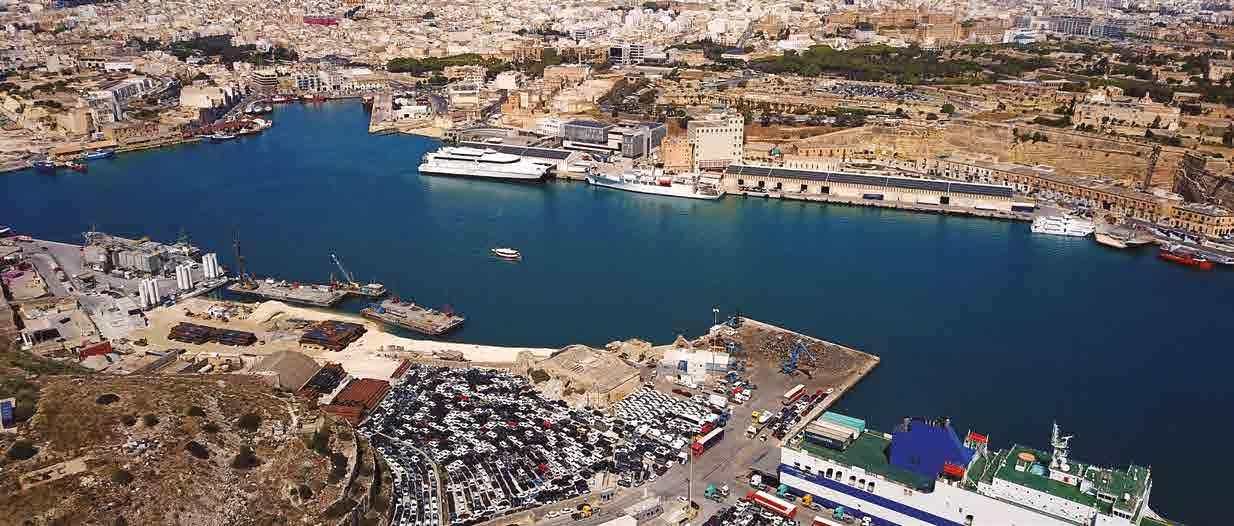
Fleet Management Limited, a part of The Caravel Group, is expanding its presence in the Philippines to strengthen training capacity, support Filipino seafarers and enable continued global growth.
The company says its investment in a new office and training hub in Manila reflects its deep commitment to the Philippines, dating back to 1997. Today Fleet employs a thriving community of more than 4,000 Filipino seafarers serving on more than 150 ships.

Located in Pasay City, the expanded facility in Manila (office team pictured) benefits from advanced simulators and upgraded infrastructure, and will deliver over 14,000 training sessions annually, as well as serving as a hub to support local seafarers and their families.
Training equipment includes a full mission bridge simulator and engine room simulator, creating immersive environments for complex vessel operations, dual-fuel readiness, and training on future fuels. l
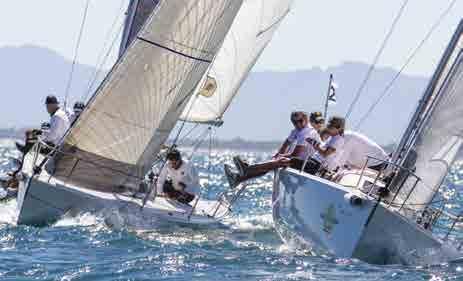
The first MSC Sailing Cup took place at the Real Club Náutico of Valencia in September, bringing together teams from MSC’s head office in Geneva and MSC Spain with key partners from the maritime and logistics industry for two days of racing on j80 boats, teamwork and coastal celebration.
MSC says the event perfectly reflected its core values – respect for the sea, resilience, precision and passion. Sailing teams from local partners included Grupo Alonso, Grupo Caliche, Noatum Logistics and Pérez y Cía.
At the end of two intense days on the water, the MSC Geneva 2 team emerged victorious, led by skipper Kilian Wager with a crew of Massimiliano Venezian (SVP Liner, MSC Geneva), Ginevra Smoquina (M&A lawyer, MSC), Jean-Charles Siraudin (HRIS Program Manager, MSC) and Jessica Aceves (Asset Management Manager, TiL)
The awards ceremony was followed by music and a traditional Spanish tardeo – an early evening gathering with drinks and entertainment. l
DP World has announced the expansion of its global Clubhouse initiative to India, continuing its mission to make the game more accessible by providing purpose-built facilities to underserved youth around the world.
As an extension of its association with the DP World India Championship, a Clubhouse was provided to the ZEN GOLF Range & Academy – a community driven organisation based in Gurugram, India, committed to making golf more inclusive and accessible to local youth.

The launch marks the second milestone in the programme following the inaugural Clubhouse opening in Cape Town, South Africa earlier this year, which was delivered to the Sally Little Golf Trust.
Leveraging DP World’s smart logistics capabilities, each Clubhouse is built using repurposed shipping containers and tailored to the needs of the local community, providing golf equipment, sheltered training areas and a safe space for young talent to develop both their sporting and life skills. l
An estimated 30,000 top industry leaders attended over 350 events during the highly successful London International Shipping Week in September, with CEOs rubbing shoulders with Royalty as well as Government Ministers from 47 countries during the week-long event.

Some of London’s finest venues were used as event organisers drawn from over 120 International trade associations and 90+ sponsors entertained and informed leaders from global shipping.
Her Royal Highness, Princess Anne, The Princess Royal, was guest of honour at the Mansion House on the Tuesday evening to welcome 600 VIPs to the official LISW25 Government and industry reception, while 700 industry leaders piled into the plenary hall of the IMO later in the week to listen to the latest views and commentary of issues facing global shipping (pictured). During the week, HRH also officially re-opened Lloyd’s Register’s historic Headquarters building at 71 Fenchurch Street after a sixyear restoration project (pictured).
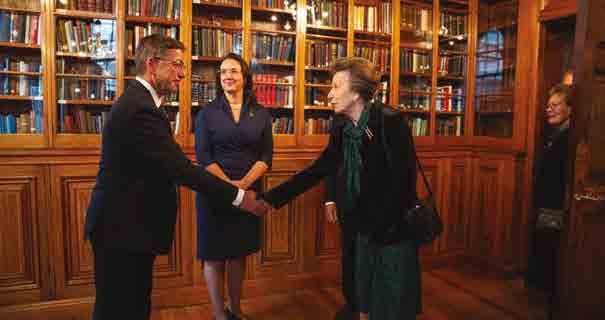
It was standing room only for the 800 or so attending the LISW25 Bunker Party and shipowners and charterers were out in style at the Charterers party, both held at the iconic Steelyard venue near Monument. The Isle of Man Maritime event, held on the Wednesday night at the London Aquarium, was singled out as it had over 800 on its waiting list.
But the biggest ‘WOW factor’ was left to the LISW25 Headline Gala Dinner, where 1700 guests socialised and networked at the amazing Evolution London venue in London’s Battersea Park. l
This year’s Maritime Cyprus 2025 Conference [ see also pp.16-7] took place in Limassol from October 6-8, preceded by the traditional Cyprus Shipping Chamber (CSC) opening reception attended by some 800 guests at the Amathus Beach Hotel.

In his welcome address, CSC President Andreas Neophytou pointed out since the Conference’s establishment in 1989, Cyprus had grown into a trusted home for some 200 shipping-related companies managing or providing services to 2,800 ships with approximately 80,000 seafarers onboard at any given time.
The opening day saw the presentation of the Cyprus Maritime Awards 2025. The Personality Award went to Dr. John Coustas, President & CEO of Danaos Shipping Company, for his longstanding support for the Cyprus Ship Registry, while the Industry Award was bestowed on MSC Shipmanagement Ltd. for its role in the growth of Cyprus’s maritime cluster and national economy.
The week’s standout social event was undoubtedly the 30th anniversary celebration of insurance broker Aphentrica, held at the ‘Graeco-Roman ‘Ancient Kourion Amphitheatre’ dating from the 2nd century BCE and overlooking the sea (near where where goddess Aphrodite/Venus is meant to have risen from the waves). Here contemporary orchestra Symphonic Rebetiko treated an audience of 400+ to an unforgettable evening’s entertainment under the stars. l

Amid increasing US-led international sanctions on trade with countries like Russia, Iran and Venezuela, and a growing ‘shadow fleet’ of ships carrying on doing so in opaque fashion, Panama has been making concerted efforts this year to ensure its vessels are not flouting these prohibitions.
Back in late March, the Panama Maritime Authority (PMA) announced that it had expedited the de-registration of some 125 vessels listed under international sanctions – a number it updated by June to over 200. It also said it was tightening pre-registration checks by looking into not only a vessel’s technical criteria but also the background and operational history of its owner and operator.
Then in May the PMA announced it was strengthening its requirements for ship-to-ship (STS) oil transfer operations involving tankers registered
under its flag, in order to “shut the door on the so-called ‘shadow fleet’ and reinforce the country’s standing as a responsible flag State.” Effective immediately. all Panama-flagged vessels with a gross tonnage of 150 or more had to notify the Flag State at least 48 hours in advance of any planned STS operation, providing detailed technical, logistical, and operational information.
This was followed in August by the statement that the Panama Ship Registry will no longer register oil tankers and bulk carriers older than 15 years. This move was prompted by a desire to

optimise the operational performance of its fleet and minimise the risk of detentions, it said, since analysis showed that such older bulk vessels had accounted for 71% of its fleet detentions between 2023 and H1 2035 - as well as to prevent the entry of vessels typically used in the ‘shadow fleet’ onto the Panama Ship Registry.
Additional quarterly inspections of Panama-flagged ships by the Recognised Organisations that issued their statutory certificates was promised, as well as enhanced verification of SMS (Safety Management System) Certificates.

In this way, the Panama Ship Registry was “prioritising quality over quantity,” the PMA said, “and implementing more rigorous oversight mechanisms to ensure that the Panamanian fleet complies with the most demanding international regulations, thus contributing to a safer and more sustainable industry.”
“Our vision,” resumed Rina Berrocal, Director General of the Merchant Marine, “is to have a renewed fleet, with younger vessels that use cleaner energy; the implementation of regulations that establish more expeditious procedures for cancelling the registration of vessels that are in violation of regulations, polluting vessels, or those with opaque records; greater fleet monitoring; and updating the data on Panamanianflagged vessels.”
In parallel with this effort to upgrade its fleet, the PMA points out that it has also been reinforcing its commitment to the comprehensive protection of seafarers, by promoting concrete actions to eradicate harassment onboard, improve working conditions and strengthen respect for the human rights of seafarers working on Panamanianflagged vessels.
For example, Panama was an active supporter of this year’s new amendments to the Maritime Labour Convention (MLC) that strengthen labour protection for seafarers, covering aspects such as the right to go ashore, combatting violence and harassment, and international cooperation for their repatriation.
In addition, the employment of Panamanian nationals on Panamaflagged ships is on the rise, with 593 employment contracts signed between January and September 2025, an 11% increase on the comparable 2024 period, thanks to the efforts of the PMA’s Labour Affairs Department.
Gender equality is likewise being promoted, with the PMA having hosted a forum on ‘Empowering Women in the Maritime Sector: A Call to Action
on Training, Visibility, and Recognition for Sustainable Development” in late August. This was attended by PMA ‘old boy’ Arsenio Dominguez on his first official visit back to his home country since assuming the position of IMO Secretary-General in January 2024. Panama remains a Category A member of the IMO Council, giving it a seat at the ‘top table’ of shipping’s global regulatory body, and is currently undergoing the IMO Member State Audit Scheme (IMSAS) designed to ensure that countries uniformly implement and enforce international maritime instruments. The country is also drawing up a plan for the implementation of decarbonisation in keeping with IMO guidelines, expected to be ready in early 2026, Acting Administrator of the PMA Alexander De Gracia announced in September.
During his visit, IMO SecretaryGeneral Dominguez also visited the Panama Canal Authority (PCA), which had every reason to be in chipper mood. Two months later, the PMA issued unaudited figures showing that revenues in the financial year to endSeptember had risen nearly 15% over the comparable 2024, period to reach $5.7bn, on 12,403 vessel transits up nigh on 20% over the previous droughtstricken year.
The PCA has also announced a 10year roadmap, which it said is designed to ‘reinforce its strategic role in global trade, safeguard long-term sustainability,
and deliver tangible benefits to the nation’. This include increasing water storage capacity, both for canal operation and human consumption, as well as diversification of business activities and expanding transport activities without increasing water consumption.
With this vision, the Panama Canal says it plans to develop into a fully-fledged logistics hub, thereby strengthening Panama’s competitive edge in world commerce.
The year has not been without its headaches for the Canal, however, as back in the spring incoming President Trump launched a verbal attack on alleged Chinese ‘control’ of the waterway by virtue of Hong Kong-based Hutchison operating ports either end, via its Panama Ports Company (PPC). An audit of PPC activities followed, eventually leading to the planned divestment of all Hutchison’s nonChinese port assets to a consortium of MSC and New York-based multinational investment company BlackRock.
It has been reported that BlackRock would take control of the former PPC terminals while MSC, via its port operations arm Terminal Investment Limited (TIL), would assume majority ownership of the remaining 41 facilities worldwide. Beijing is opposing the deal in its current form, however, with Chinese shipping giant COSCO believed to be seeking either to enter the nonPPC part of deal with a 20-30% stake or veto the sale altogether; CMA CGM is also said to be trying to secure a piece of the carve-up. l

SMI asks Cyprus-based Sylvia A. Loizides, Board Member and Head of Shipping at professional services firm KPMG, on the advice that is being given to shipping companies on decarbonisation – especially in light of the postponement of any adoption of IMO’s proposed Net-Zero Framework – and other pressing issues of business strategy.
Q) Please describe the scope of KPMG’s maritime consulting services in Cyprus and elsewhere. How big a part is played by advising on decarbonisation strategies?
A) KPMG’s maritime consulting services cover a broad range of financial, regulatory, and strategic support to shipowning and shipmanagement companies in Cyprus and internationally. We help clients manage compliance, optimise performance, and adapt to evolving regulatory and sustainability expectations.
In Cyprus, KPMG supports shipowners and managers across audit and assurance, tax, corporate structuring, risk management, and governance. Increasingly, we also advise on cyber resilience, ESG integration, and sustainability reporting, areas now central to both compliance and stakeholder confidence.
Across KPMG’s global network, maritime work spans financial and operational advisory, digital transformation, and support for clients navigating new regulatory, environmental, and reporting frameworks.
Within this broader offering, decarbonisation is a growing area of attention, although much of the industry is still developing the frameworks, data, and systems needed to support long-term transition. KPMG primarily assists clients in understanding new
regulatory requirements and integrating sustainability considerations into governance, reporting, and financial decision-making.
Overall, while decarbonisation is not the sole focus, it now runs through most client discussions influencing decisions on investment, compliance, and longterm competitiveness.
Q) How important a factor do you see IMO’s adoption of a net-zero plan in influencing shipowner and shipmanager cstrategy? Does the recent delay change the advice you are giving clients in any way?
The IMO’s proposed Net-Zero Framework (NZF) represented a potentially defining shift in global shipping, moving beyond efficiency measures such as EEXI and CII toward full decarbonisation by or around 2050.
However, the recent decision to postpone its adoption reflects the difficulty of achieving consensus in a sector that is global by nature and highly diverse in scale and capability. Many, including the Cyprus Union of Shipowners, have cautioned that the proposal in its current form risks imposing unfair and ineffective multi-billion-euro taxation schemes, without clear processes for how the proceeds would be used.
Cyprus, as a major maritime nation, has instead called for a global
decarbonisation incentive scheme under the IMO; one that reinvests funds in research, technology, and sustainable shipping infrastructure. This more pragmatic approach, which I share, recognises that genuine environmental progress requires both fairness and technological readiness.
From KPMG’s perspective, the postponement does not reduce the strategic importance of the transition. It simply adds uncertainty to its pace and implementation. Our focus is on helping clients strengthen their governance, reporting, and financing readiness for the transition, ensuring they can demonstrate compliance, transparency, and credibility as the regulatory framework evolves into a more balanced, global form.
Q) There seems to have been some cooling or backtracking of the commitment to ‘net zero’ among certain countries, notably the USA under President Trump. How serious a ‘brake’ on the momentum of decarbonisation do you see this as posing, if at all?
Political shifts can influence the pace of decarbonisation, and the IMO’s recent postponement shows how divergent national interests can slow collective progress. Even if some governments, notably the United States under President Trump or any future
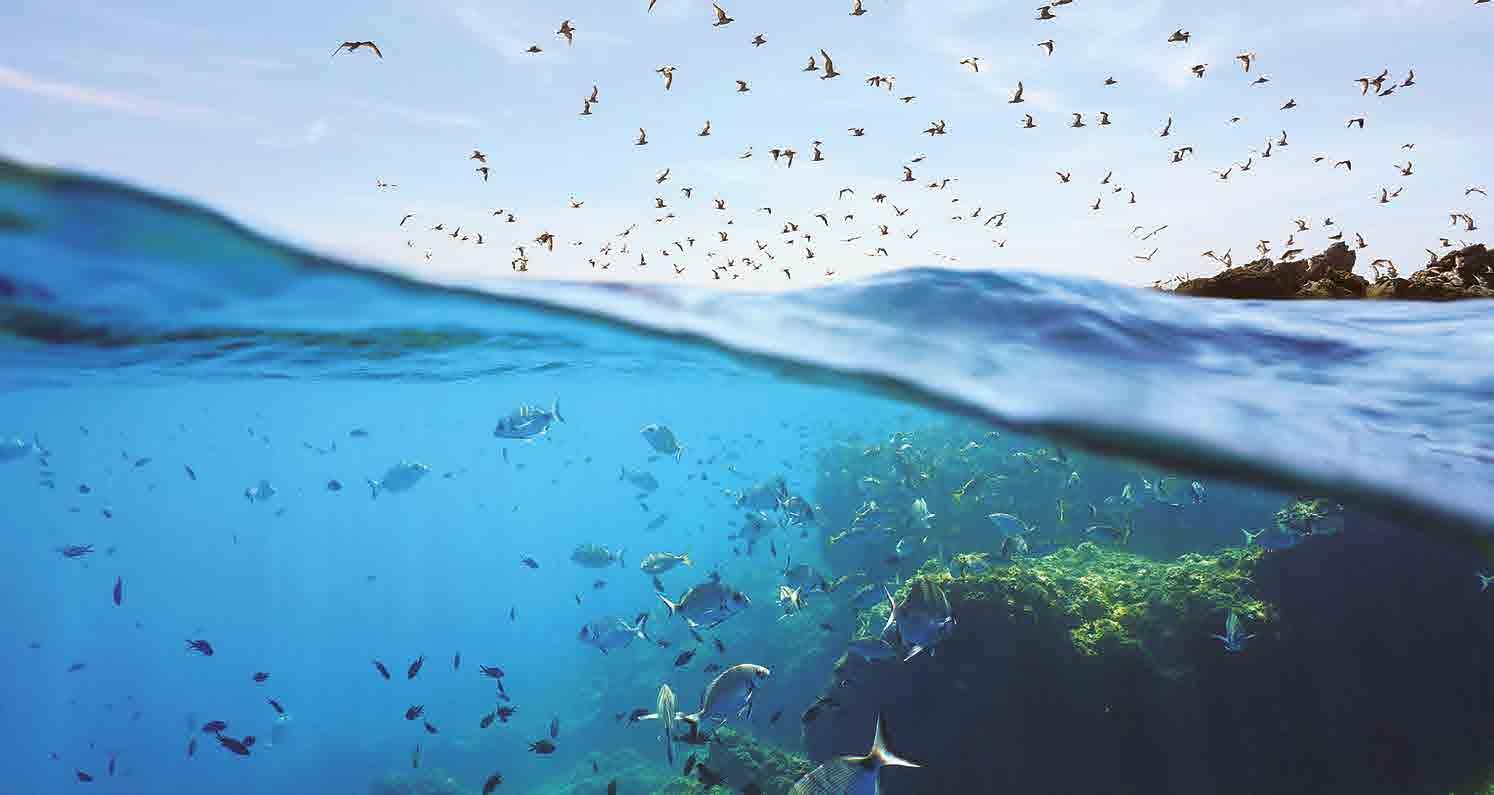

administration, take a less supportive stance on ‘net zero’, the underlying direction of travel remains unchanged.
At the same time, the concerns expressed by industry leaders highlight valid economic and structural issues. Many argue that the current version of the NZF could place disproportionate burdens on small and mid-sized companies, the backbone of European shipping, while raising costs for consumers without materially reducing emissions. The challenge, as they rightly emphasise, is to ensure a green transition that is fair, effective, and inclusive, safeguarding both competitiveness and energy security.
This perspective does not reject decarbonisation. It calls for realistic, science-based solutions that build genuine consensus within the IMO and include all major maritime nations. The goal should be a framework that achieves real emissions reductions without destabilising economies or trade flows.
So, while policy direction and regulatory timing may fluctuate, the long-term transition remains intact. Market forces, technological progress, and investor expectations continue to drive shipping toward lower emissions, ideally through a global, coordinated mechanism rather than fragmented regional regimes.
Q) Please outline any other issues that KPMG’s maritime clients see as particularly pressing and why?
Beyond decarbonisation, maritime clients face several interlinked
pressures reshaping the industry’s economics and governance.
Regulatory complexity is a major concern. Companies must manage overlapping environmental, sanctions, ESG, and cybersecurity rules.
Coordinating compliance across global operations requires stronger governance and better data systems.
Financing and capital access are also critical. Traditional shipping finance has tightened, while sustainability-linked and alternative finance models are still evolving. Clients are seeking to align investment strategies with lenders’ green criteria without undermining flexibility.
Digitalisation and cyber risk form another key theme. Increased connectivity and data use bring efficiency gains but also new vulnerabilities, particularly for shipmanagement companies responsible for large, dispersed fleets.
Finally, workforce challenges are becoming acute. The industry faces an ageing shore-based workforce, evolving crewing dynamics, and a growing scarcity of qualified marine engineers and technical professionals. At the same time, new competencies are needed to support digitalisation, alternative fuels, and advanced vessel systems. Retaining and reskilling people is becoming as vital as hardware investment.
Taken together, these issues illustrate an industry in transformation, moving from a traditionally assetdriven model to one defined by governance, technology, and sustainability readiness.
Q) Do you have any other points that you would like to share with the readers of SMI?
Shipping has already entered a decisive decade. Regulatory, technological, and financial shifts are reshaping how vessels are built, financed, and operated, but they also create space for genuine innovation and renewal.
For many companies, the challenge lies in managing uncertainty rather than resisting change: regulatory timelines are fluid, fuel pathways remain unsettled, and access to capital depends increasingly on sustainability credentials. Despite this, the sector’s resilience and adaptability continue to stand out. Shipping has always evolved: from safety reforms to digitalisation, and it will do so again as the decarbonisation agenda continues to evolve.
What is clear, however, is that the responsibility for progress cannot rest solely with shipowners. Shipyards, equipment manufacturers, and fuel suppliers must also innovate more decisively, providing commercially viable solutions that make the transition technically and economically achievable. Only through this collective effort can regulatory ambition translate into realworld progress.
The years ahead will test the industry’s ability to align policy, technology, and finance in practical ways. Progress will depend as much on collaboration and informed investment as on regulation itself. l
By Ian Cochran
The drybulk market enjoyed the fair summer weather by mid-August, despite some softening of vessel benchmark levels from the late July peaks.
By the middle of August, gearless Baltic benchmarks had softened, while geared segments had attained high levels, independent shipping market research company, MSI said.
After hitting $31,700 per day in late July, Capesize rates averaged around $27,000 per day a few weeks later.
Demand for Panamaxes fell slightly from the East Coast of South America (ECSA), as the soybean trade passed its seasonal peak. However, pockets of support emerged in the Pacific basin, for example, a rise in coal imports in Japan, South Korea, and Taiwan, driven by increased electricity demand for air conditioning during the heatwaves.

Costa
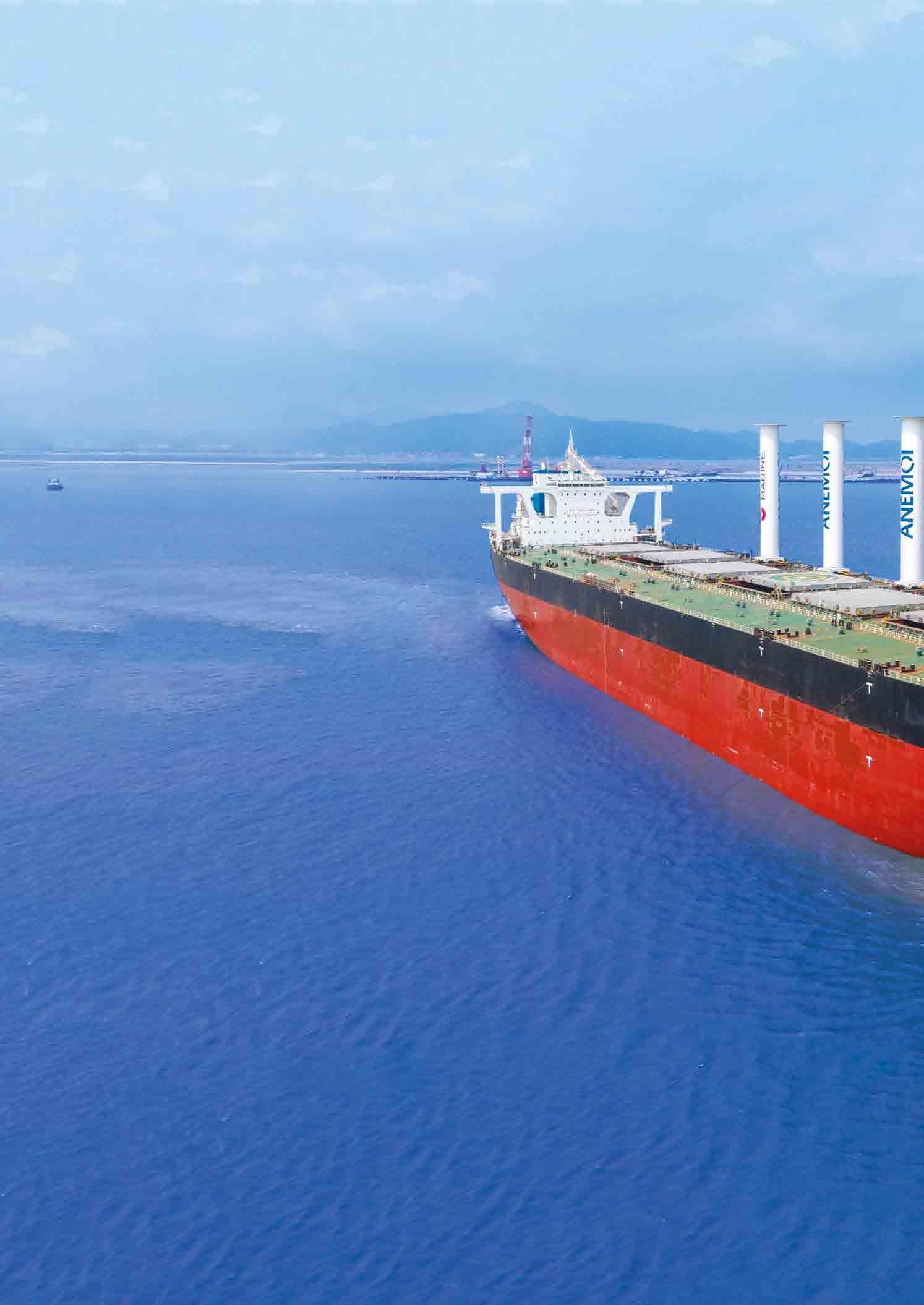
This trend also supported predictions of stronger coal consumption in the second half of this year, rebounding from a particularly weak first half.
Strong prospects for the forthcoming ECSA corn (maize) harvest were predicted to support the grain trades in the coming months, helping to offset some of the weakness from softer soybean trades between the US and China.
This should further support demand, particularly in the geared bulker segments.
In summary, MSI predicted that trade volumes in the second half of this year will be stronger than in the first six months, providing support to drybulk earnings across the vessel types.
However, a warning was given that despite firmer demand in the second half of this year, the cumulative impact of robust net fleet growth was expected to weigh on the market heading into the late fourth quarter and early first quarter of next year, as oversupply pressures build and start to undermine earnings.

Elsewhere, Filipe Gouveia, BIMCO’s Shipping Analysis Manager, speaking at the end of July, said: “We estimate the drybulk supply/demand balance will weaken in both 2025 and 2026, compared to 2024.
“Demand growth is expected to slow, impacted by a weaker economic outlook for China and the world and a shift in US trade policy,” he said.
The tariff rises and the start of trade negotiations by the US introduced additional uncertainty and directly impacted 4% of global drybulk tonne/mile demand during the first half of this year.

China’s economic growth was forecast to slow starting in the second half of 2035, while front-loading ahead of the tariffs commencement led to comparatively stronger growth in the first half.
Ship demand is forecast to grow by only 1% in 2025 and by 1%-2% in 2026. This demand picture was expected to be driven by an increase in average sailing distances, supported by stronger iron ore and bauxite shipments from the South Atlantic to Asia.
Cargo demand growth appeared soft, despite stronger minor bulk shipments, as coal and iron ore shipments were predicted to fall until the end of 2026.
As for ship supply, this was estimated to grow by 1.9% in 2025 and by 2.6% in 2026, driven by increased Panamax and Supramax deliveries.
Ship recycling was expected to gradually increase but should be limited to older, less competitive vessels. In addition, sailing speeds were also expected to decline, causing supply to grow slower than the fleet.
“Weaker market conditions have already taken a toll on freight rates and asset prices. The Baltic Dry Index (BDI) has fallen by an average of 28.2% so far this year (end of July), with rates softening across all segments.
“More recently, in July, freight rates firmed up for the Capesize and Panamax segments, supported by stronger iron ore cargoes out of Brazil and a pick-up in coal shipments to East Asia,” the BIMCO analyst added.
“The Capesize segment is expected to outperform the smaller segments in the drybulk fleet during 2025 and


2026. It will likely benefit from China’s growing demand for bauxite and the 2025 expansion of iron ore mining projects in the South Atlantic.
“Furthermore, its (Capesize) fleet is expected to only grow 3.9% between 2024 and 2026, the slowest of all segments,” Gouveia concluded.
At the end of July, Forward Freight Agreements (FFA) indicated that the market expected Panamax and Supramax freight rates to soften during the rest of 2025, compared to end of July levels and further weaken in 2026. Both segments are expecting a rise in ship deliveries amid a poor demand outlook for coal.
In Banchero Costa’s September drybulk outlook, the Genoa-based brokerage and researcher said that this year, about 417 vessels (of 30.36 mill dwt) were scheduled to be delivered, after accounting for slippage and cancellations.
The orderbook remained moderate for 2025/2027, especially after slippage is taken into account.
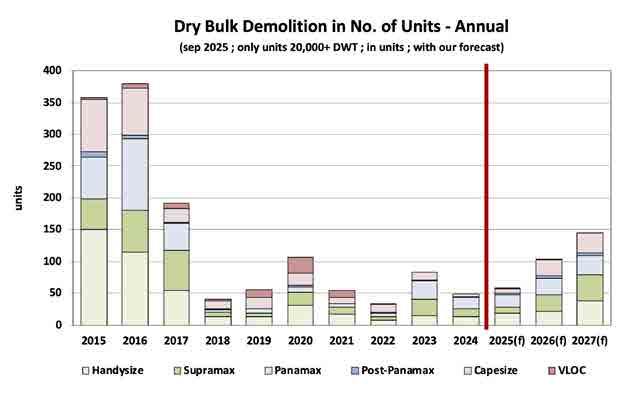
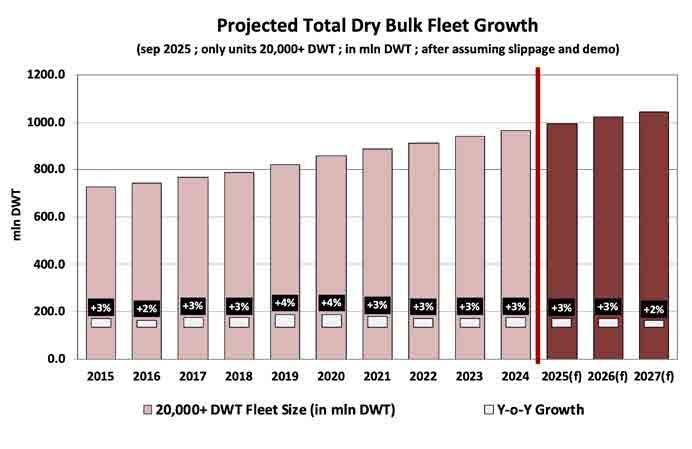
In the first eight months of this year, at least 299 bulkers (21.48 mill dwt) were reportedly delivered, some 9.2% lower year-on-year in deadweight tonnage terms than recorded in 2024.
These included - 25 Capesizes (5.07 mill dwt), one PostPanamax (0.1 mill dwt), 56 Panamaxes (4.59 mill dwt), 129 Supramaxes (8.21 mill dwt) and 88 Handies (3.51 mill dwt).
As for recycling, Banchero Costa forecast that about 58 units (totalling 4.15 mill dwt) will be scrapped this year, based on the age profile and recent demolition trends.
In the January to August period, at least 42 units (at a combined 2.89 mill dwt) were reported scrapped, some 32.6% y-o-y more than 2024 in deadweight tonnage terms.
These included - one VLOC (0.27 mill dwt), four Capesizes (0.67 mill dwt), two Post-Panamaxes (0.2 mill dwt), 14 Panamaxes (1.01 mill dwt), six Supramaxes (0.29 mill dwt) and 15 Handies (0.46 mill dwt).
Also of note is the bulk carrier segment’s growing adoption of wind assisted propulsion systems aboard both newbuildings and existing vessels - such as U-Ming’s VLOC ‘Grand Pioneer’, expected to achieve an average 10-12% annual fuel and emissions reductions on her Brazil-China deployment after being fitted with four 35-metre Anemoi Rotor Sails (pictured). l


By Tommi Vihavainen, Director, Development and Product Owner - Logbook, NAPA
The theme of this year’s World Maritime Day in late September – ‘Our Ocean, Our Obligation, Our Opportunity’ – shone a light on the essential role the oceans play in sustaining life, livelihoods, and the global economy. It underlined the deep connection between shipping and UN Sustainable Development Goals, particularly goal 14: Life Below Water, which focuses on the conservation and sustainable use of marine resources.
To protect the countless marine species that call the ocean home, effective ballast water management (BWM) is vital. From the Asian shore crab to the round goby, invasive aquatic species transported in ships’ ballast water can destroy the intricate balance of entire marine ecosystems. That is why, this year, Port State Control (PSC) are thoroughly checking BWM convention compliance.
The PSC is running its annual Concentrated Inspection Campaign (CIC) on BWM from September 1-November 30, 2025. And for port states under the Paris and Tokyo Memoranda of Understanding (MoU), inspectors will target ballast water record-keeping, system performance, and documentation consistency. If ships are non-compliant, they could be fined, delayed or even detained.
Ballast water record-keeping has emerged as one of the most significant areas of concern. According to data reported by the Paris MoU, 58% of BWM compliance deficiencies are directly linked to poor record-keeping or administrative errors.
DNV’s 2024 internal figures support this, with it repeatedly identifying record book mismatches, missing flag state approval
letters for electronic systems, and unreported BWM system malfunctions. With these gaps recognized, the financial and reputational risks of non-compliance for shipowners have grown.

In this compliance landscape, old-fashioned paper-based or siloed digital record-keeping is no longer fit for purpose. Even when electronic systems are in place, compliance failures still occur if these technologies aren’t aligned with current standards, connected to onboard data sources, or recognized by flag authorities.
The CIC will also check the readiness of seafarers, so it’s vital they have the right tools and understand all the required BWM processes. PSC officers will expect crews to demonstrate that they can run the BWMS as intended, from implementing procedures for challenging water quality (CWQ) set out in the vessel’s Ballast Water Management Plan to meeting the updated reporting criteria.
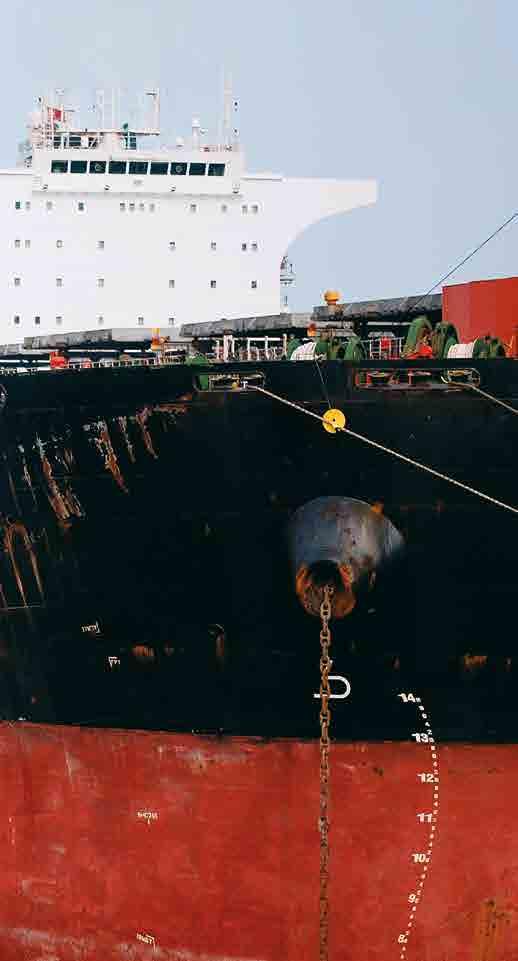
This comes at a time when seafarers’ workload is already increasing. A recent survey by the International Seafarers Welfare and Assistance Network (ISWAN) revealed that 54% of seafarers reported an increase in their workloads, 44% said they are feeling higher levels of stress and 33% fear potential criminalization due to complex reporting requirements.
The 2025 inspection is an important reminder that BWM compliance is underpinned by a culture of preparedness. Shipowners who adopt digital compliance tools for their crews can improve reporting efficiency, reduce risk, and enable people to focus on what truly matters: maintaining safe, efficient, and sustainable vessels.
This World Maritime Day, this PSC CIC inspection period, and beyond into the future – effective ballast water management matters. It matters that we protect life below water and halt the spread of invasive aquatic species. It matters that shipowners minimise their risk to non-compliance penalties. It matters that seafarers are supported with their growing reporting responsibilities. l
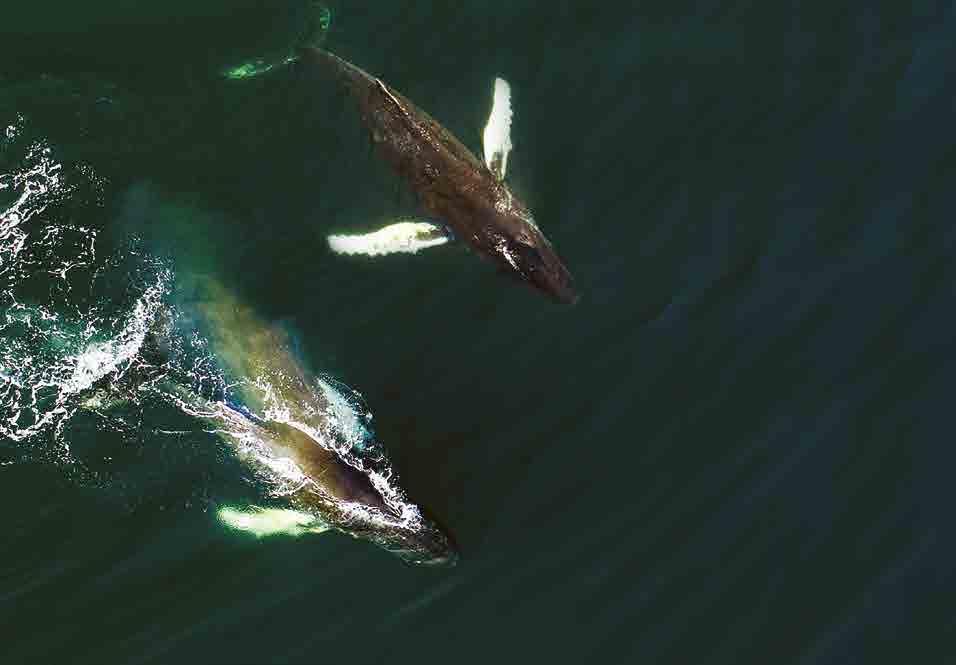
landmark UN treaty to safeguard marine biodiversity on the high seas met the required 60 ratifications for entry into force this September, clearing the way for it to take effect in January 2026.
The treaty, formally known as the Agreement under the United Nations Convention on the Law of the Sea on the Conservation and Sustainable Use of Marine Biological Diversity of Areas beyond National Jurisdiction (BBNJ agreement), was adopted by UN Member States in June 2023 after nearly two decades of negotiations.
The pact – commonly referred to as the ‘High Seas Treaty’ – covers two-thirds of the world’s ocean area that lies beyond national boundaries.
It establishes legally binding rules to conserve and sustainably use marine biodiversity, share benefits from marine genetic resources more fairly, create protected areas, and strengthen scientific cooperation and capacity building.
IMO took an active part in the negotiations during the sessions of the BBNJ Conference, to ensure that IMO will play an important role in the implementation of the BBNJ Agreement and that the new instrument will not negatively impact IMO’s existing mandate and framework.
IMO points out that many of its measures actively contribute to the conservation of marine biological diversity in areas beyond national jurisdiction, including the International Convention for the Prevention of Pollution from Ships (MARPOL). The BBNJ Agreement and the IMO’s 2025 World Maritime Day theme – ‘Our Ocean: Our Obligation – Our Opportunity’ - are deeply interlinked and they correlate in both spirit and substance.
Progress on the Treaty has accelerated in recent months, with dozens of countries announcing their intent to ratify during the 2025 UN Ocean Conference in June. Four new ratifications took place last week ahead of the 80th session of the United Nations Global Assembly. The treaty’s entry into force will trigger preparations for its first Conference of the Parties (COP1), where governments will define how protections will be implemented and monitored.
These provisions are vital to achieving climate and biodiversity global goals, including the Kunming-Montreal Global Biodiversity Framework (GBF) 30×30 target to protect 30% of the planet’s land and ocean by 2030.
“This is the culmination of decades of work by governments, scientists, Indigenous communities, and civil society,” said Matt Collis, Senior Director of Policy at nonprofit environmental and animal welfare body IFAW, which has long advocated for strong, equitable protections under the treaty. “We now need that same ambition and urgency to ensure this framework delivers meaningful conservation outcomes.”
IFAW urges all remaining signatories to swiftly complete their ratification processes and calls on ratifying countries to take bold, science-based action at COP1 to protect ocean ecosystems under threat.
“With the treaty’s entry into force, governments now have a critical opportunity to establish marine protected areas on the high seas, close governance gaps, and build resilience in the face of the climate crisis,” added Collis. l
, Chief Commercial Officer at

Q) What are the biggest operational and commercial challenges that shipping companies face today in terms of voyage planning and execution?
Data fragmentation and quality issues continue to be significant challenges in the shipping industry. We often see shipping companies struggle with siloed information from multiple providers and a lack of integration between digital systems, making it difficult to gain a comprehensive view of the entire operational picture.
StormGeo helps solve this challenge by consolidating all relevant data in one place and increasing data transparency between stakeholders. Our Voyage Intelligence solution consolidates all voyage-related data into a single, unified, and real-time view.
Furthermore, unpredictable and extreme weather continues to pose a challenge at sea, creating operational, routing, and commercial risks during voyages, such as delays, vessel and cargo damage, or crew safety.
Ultimately, voyage optimisation and weather routing only work if the captain and his crew trust the data and guidance they receive. Especially in an era where AI and automation are increasingly embedded in operational workflows, trust and reliability in data, analytics, and routing advice become crucial. For us, human and artificial intelligence must work closely together whenever we provide voyage optimization and routing advice for our customers at sea.
Q) How does StormGeo’s Voyage Intelligence differ from traditional voyage planning or routing?
Where traditional routing primarily focuses on finding the most efficient and safe route, Voyage Intelligence considers the entire voyage lifecycle and integrates multiple factors, including environmental obligations,
safety, vessel performance, fuel strategy, timing, port operations, and the onboard planning of the voyage all the way up to the voyage is sent into ECDIS.
Voyages are complex, and a route that appears efficient on paper may, in fact, be vulnerable to severe weather or result in higher emissions. On the one hand, this means that onboard and onshore teams require a substantial amount of data and analytics – presented clearly and concisely – to gain a comprehensive understanding of what constitutes a safe, sustainable, and profitable voyage. On the other hand, it means that they benefit from dialogue with human experts with deep maritime knowledge who can help make sense of complexity and ensure safe, efficient, and commercially sound decisions at sea. This is what we deliver with Voyage Intelligence.
Q) How does Voyage Intelligence help solve the issue of fragmentation in maritime data, and why is this important?
Fragmentation in maritime data presents a significant obstacle to industry-wide digitalisation. Data flows from various systems, such as vessels, onshore and onboard teams, and third-party sources, and often end up in silos, making it difficult to obtain a comprehensive operational overview.
Voyage Intelligence addresses this challenge by connecting and contextualising different datasets for our customers. We integrate data from third-party providers and combine it with our own data – weather forecasts, ocean data, vessel models, and more –allowing our customers to share these connected datasets with other platforms or stakeholders, such as emission verifiers.
Our goal is to help our customers gain clarity in complex datasets and use these actionable insights to make well-informed decisions before, during, and after their voyages.
Q) What are some of the measurable benefits of Voyage Intelligence for shipping companies?
The most important outcome is delivering your vessel and cargo safely and on schedule to the port. Time and fuel optimisation are valuable added benefits once this goal is secured.
In terms of benefits and optimisation gains, Voyage Intelligence can deliver, for example:
• Up to 5% of fuel savings through more precise speed adjustments compared to traditional weather routing, which typically saves around 1-3%.
• Performance insights that identify underperforming vessels and help operators apply best practices across the fleet.
• Improved regulatory readiness by combining environmental compliance with voyage planning and execution.
• Fuel quality assurance that allows customers to verify purchased fuel quality and reclaim costs if it is below specifications.
Q) How does Voyage Intelligence support the shipping industry’s push toward decarbonisation and digitalisation?
Voyage Intelligence enables immediate and measurable emissions reductions without significant investments. While there are many great and important initiatives underway to decarbonize the shipping industry, including wind-assisted propulsion and the development of alternative fuel types, these initiatives are typically very investment-heavy and still in their early stages.
StormGeo leverages advanced technology that is available today to optimize vessel performance and voyages, delivering actual CO2 reductions that align with decarbonisation targets. For example, in 2024, we helped our customers collectively save a total of 1.8 million MT of CO2 through our routing services.
Regarding digitalisation, we are seeing shipping operations become increasingly data-driven and automated. Voyage Intelligence plays an important role in this transformation, not only by connecting siloed information, but by ensuring that the insights operators act on are reliable.
As the industry becomes increasingly digital, the main challenge will no longer be to connect data but to trust
it. Voyage Intelligence combines AI-driven analysis with human expertise, ensuring that data, analytics, insights –and ultimately optimization and routing advice – can be trusted and relied on.
Q) Where else do you see the biggest opportunities for Voyage Intelligence in the next five years?
Generative and agentic AI will only continue to expand and offer new opportunities for Voyage Intelligence, allowing us to combine an increasing number of data sources to offer hyper-personalized and tailor-fit services for our customers. I believe this will mark our shift from offering customer advice to co-creating solutions, with software increasingly designed to meet each client’s unique requirements
With the increase in high-frequency sensor data from vessels, we will not only be able to shift from manual to automated reporting from onboard systems but also substantially improve decision-making. For example, by combining AI with sensor data, we can move from retrospective vessel performance advice to real-time decision support for our customers.
There is also huge potential for efficiency gains in the industry through stronger collaboration and shared benefit models. For example, virtual arrival is emerging as a promising port optimisation technique, where a vessel reduces its speed and adjusts its arrival time to match port berth availability – helping to reduce fuel consumption and cut carbon emissions. Technically speaking, this is possible today, but it demands transparency across a broader data value chain, not just ship operators.
The industry may not be quite there yet, but I believe it will move towards a more integrated, data-driven, and collaborative ecosystem – and we believe StormGeo’s Voyage Intelligence will be a key enabler of that transformation. l


Seafaring is an ancient profession. Sumerian records tell us that in Babylon, the cradle of sea transport, ships were big business. Just like today they carried bulk cargoes of grain, cedarwood and stone. Their sailors were freemen (i.e. not slaves), and the captain was boss. Some aspects of shipping never change, and modern captains transported back to Babylon would find themselves drinking date beer, their favourite tipple, and discussing the problem of finding crew!
Seafaring may have survived four millennia, but can it survive generative AI? The quick answer is “absolutely”. Ship automation has been developing for decades, with mixed results. It triggered one of the world’s most serious oil spills when the Torrey Canyon hurled itself into the Seven Stones reef on autopilot; and the Bright Field Panamax upset New Orleans shoppers by veering into their riverside walk when an automatic alarm system failed. But change could be on the agenda, as happened when steamers replaced sail, and shortening canvas in a storm was no longer a useful skill.
Some sort of change is inevitable because fewer people will want to work on cargo ships in future. But the ‘great leap forward’ in technology is opening doors for shipping companies with a new mission - to manage cargo transport as a logistics factory with comfortable premises, rather than as a portfolio of separate ships.
The technology to do this is gradually, falling into place. New ships are bristling with telematics devices, which pump out information. But, in itself, this information has no intrinsic value. To add value it must be collected, processed, distributed and applied to improve transport performance. People, whether at sea or on shore, will be needed at every stage.
Most shipping companies have far more people at sea than on land. As marine technology improves, just
By Dr Martin Stopford, leading maritime analyst and economist
like cars, there will be far less need to ‘look under the bonnet’ and ‘do roadside repairs’. Cargo ships may still need 1.3 million seafarers, but on the 2030s generation of ships their skillset will need to change – just as it did when steamships arrived. Although innovations like paperwork may be routine, rolling out agile digital systems, with secure governance on ships at sea will be very challenging. And building ‘teams’ that straddle both sea- and land-based personnel may become key because once people get to know each other, they can work together better – a lesson from lockdown was that people who knew each other could work from home, but not new recruits. But this is a long way from how things work today.
A final reason to think about change is the way crewing has evolved over the last 40 years. Prior to the 1970s the big liner companies worked closely with their on-board staff. In the early 20th century there was a degree of trust and often company pride across the business – ask anyone who worked on a Blue Funnel ship. And tramp operators were very different too. For example, the Greeks, crewed their ships with locals from their island. But this closed system has been swept away, especially once the trend of ‘flagging out’ emerged from 1960 onwards. Nearly everybody was doing it, and the gulf between ship and shore widened.
For seafaring to have a future, it needs escape from the past. After 50 years of flagging out, it is time to think about something completely different – maybe homely ships, crewed by teams of professionals working together, with offices at sea as well as on shore and a few family or colleagues along for the ride as well.
So when you enjoy a drink this evening, why not try a date beer, and think about ways to get seafaring ‘back to the future’! l
By David Tinsley

As pressure builds on the shipping industry to decarbonise, ammonia is emerging as a viable long-term fuelling option. Bolstered by significant progress in engine technology and product offering, with the particular challenges presented by the fuel being worked through, project uptake is growing. Regulations and bunkering infrastructure, though, are still evolving.
As a compound of nitrogen and hydrogen, ammonia contains no carbon and therefore does not emit any CO2 when used in an internal combustion engine. It is also virtually free of sulphur oxide (SOx) and particulate matter (PM) emissions, contributing to cleaner air quality. The NOx produced can be handled with an abatement solution if not achievable through engine tuning alone.
This creates the basis for potentially zero-carbon and low environmental impact propulsion if the additional small quantity of pilot fuel is also carbon-free.
However, only ‘green’ ammonia can render a zero-carbon outcome from a lifecycle perspective, since the huge volume of ammonia produced worldwide today for fertilisers and chemicals is mainly derived through natural gas reformation, without any carbon capture. But investment in plants equipped to
turn out cleaner or ‘green’ ammonia is expected to ramp-up quickly.
Ammonia is liquid at ambient conditions, resulting in lower storage volumes than other alternative marine fuels, and its volumetric energy density is broadly similar to methanol and higher than hydrogen. Nonetheless, in relation to heavy fuel oil (HFO), it weighs twice as much and requires three times more space to contain the same amount of energy.
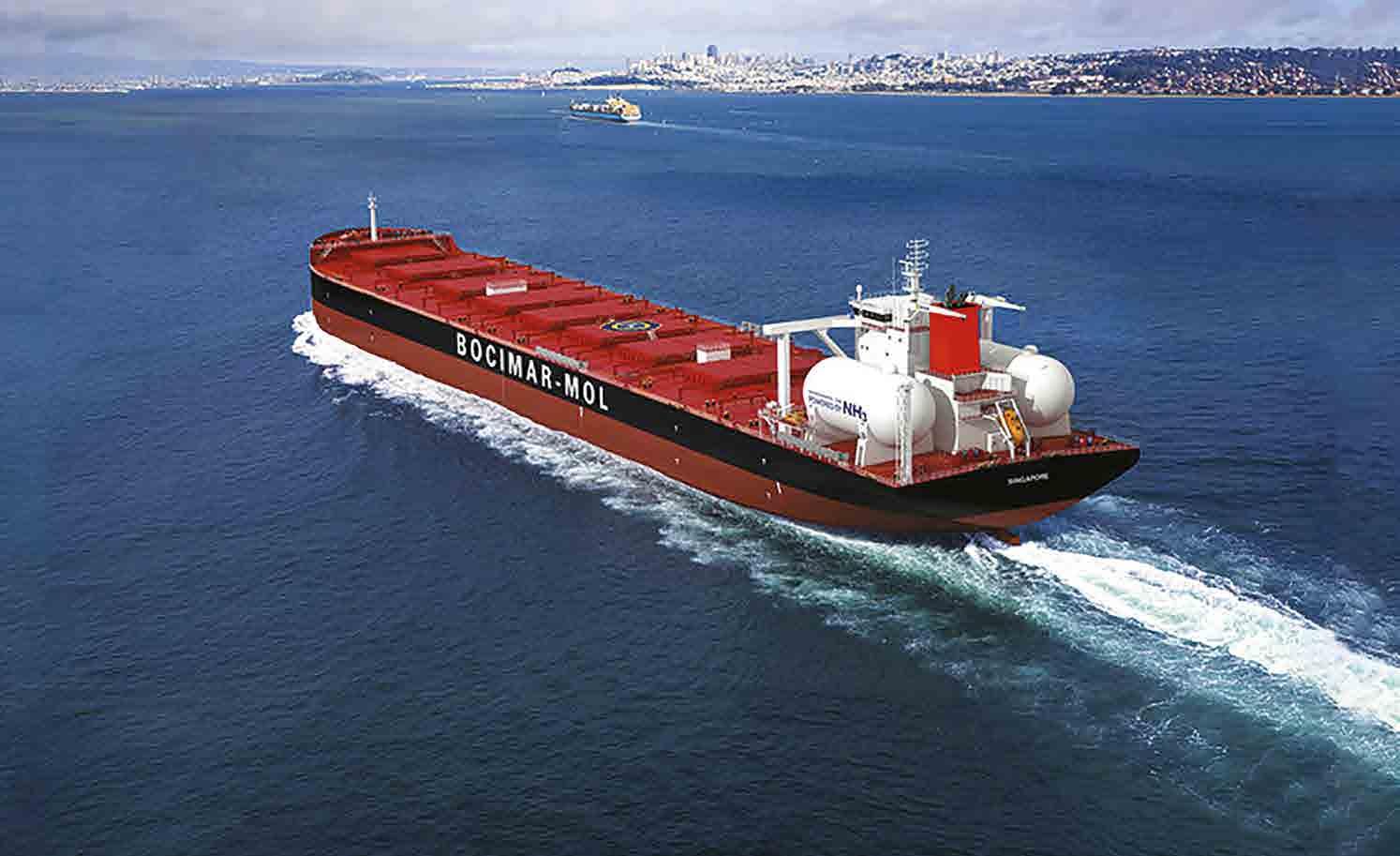
Furthermore, its toxicity has to be addressed when developing a safe and class-compliant ship design.
While less likely to ignite in open air due to its flammable range and rapid diffusion, ammonia presents significant ignition risk in confined spaces, especially in the presence of oil and other combustibles. Due to its toxicity, ammonia poses serious health risks at low concentrations and can be fatal at higher, but still relatively modest, levels if not properly handled. Because of its pungent smell, ammonia can be detected well below 25ppm, giving an early warning signal.
The toxicity hazard poses challenges for the industry, necessitating a complete new set of skills, safety procedures and standards, addressing all stages of handling and usage. Furthermore, the corrosive effects of ammonia in contact with certain metals calls for extra prudence in materials selection as concerns storage and handling equipment, and also infers additional engine maintenance.
The shipping industry has long and deep experience with ammonia
as a cargo and as a shipboard refrigerant, but its emergence as a fuel presents a different order of risk, demanding a new safety pathway. To help mitigate this risk, and achieve an effective and just energy transition, the seafarers involved must be central to the solution.
Zero and near-zero greenhouse gas (GHG) emission fuels such as ammonia, and also methanol and hydrogen, present unique challenges and hazards to crew health and safety, requiring specialised knowledge and safety measures to be adequately and effectively implemented. However, the STCW Convention currently does not yet encompass relevant guidelines or competency levels.
In fact, it is widely viewed that the slow pace of regulatory development and uncertainties as to alternative fuel options and decarbonisation trajectories have hitherto inhibited investment in seafarer training.
The Nautical Institute (NI) has taken a lead by drawing up a voluntary standard offering guidance on the training of seagoing
personnel to handle alternative fuels safely and confidently.
In 2022, the NI and its partners agreed that there was a clear need for a ‘green curriculum’ setting out what seafarers need to know and what skills they would be required to develop to operate safely with alternative fuels, namely ammonia, methanol and hydrogen. November 2024 saw the release of the Training Standard for Handling Alternative Fuels, offering a common standard and guide for seafarer training and professional development.
This has been designed to promote awareness and understanding of the properties and characteristics of the specific fuel, fuel system equipment, shutdown procedures, fuel handling protocols, emergency response and health and safety issues.
The NI advocates that maritime education and technology institutes should aim to provide ‘live’ demonstrations of fuel loading and handling procedures, to enhance the learning experience and add a handson element. This may be facilitated through practical instruction
with equipment such as simulators, augmented and virtual reality (AR/VR) and/or video tools.
A collaborative project has been launched under UN auspices to prepare seafarers for zero or near-zero emission ships. Overseen by IMO and the Maritime Just Transition Task Force in partnership with the World Maritime University and other organisations including Lloyds Register and the International Chamber of Shipping (ICS), the scheme is entitled ‘Training Seafarers for a Decarbonised Future’.
The first milestone was the development of a baseline training framework to equip mariners with the skills to safely use ammonia, methanol and hydrogen, to be made available to maritime academic and training institutions in all IMO member states. Ammonia’s toxicity was highlighted as a major challenge, necessitating comprehensive training in emergency response procedures and determination of personal protective equipment (PPE) standards and process safety measures.
Through its Maritime Decarbonisation Hub, LR has also
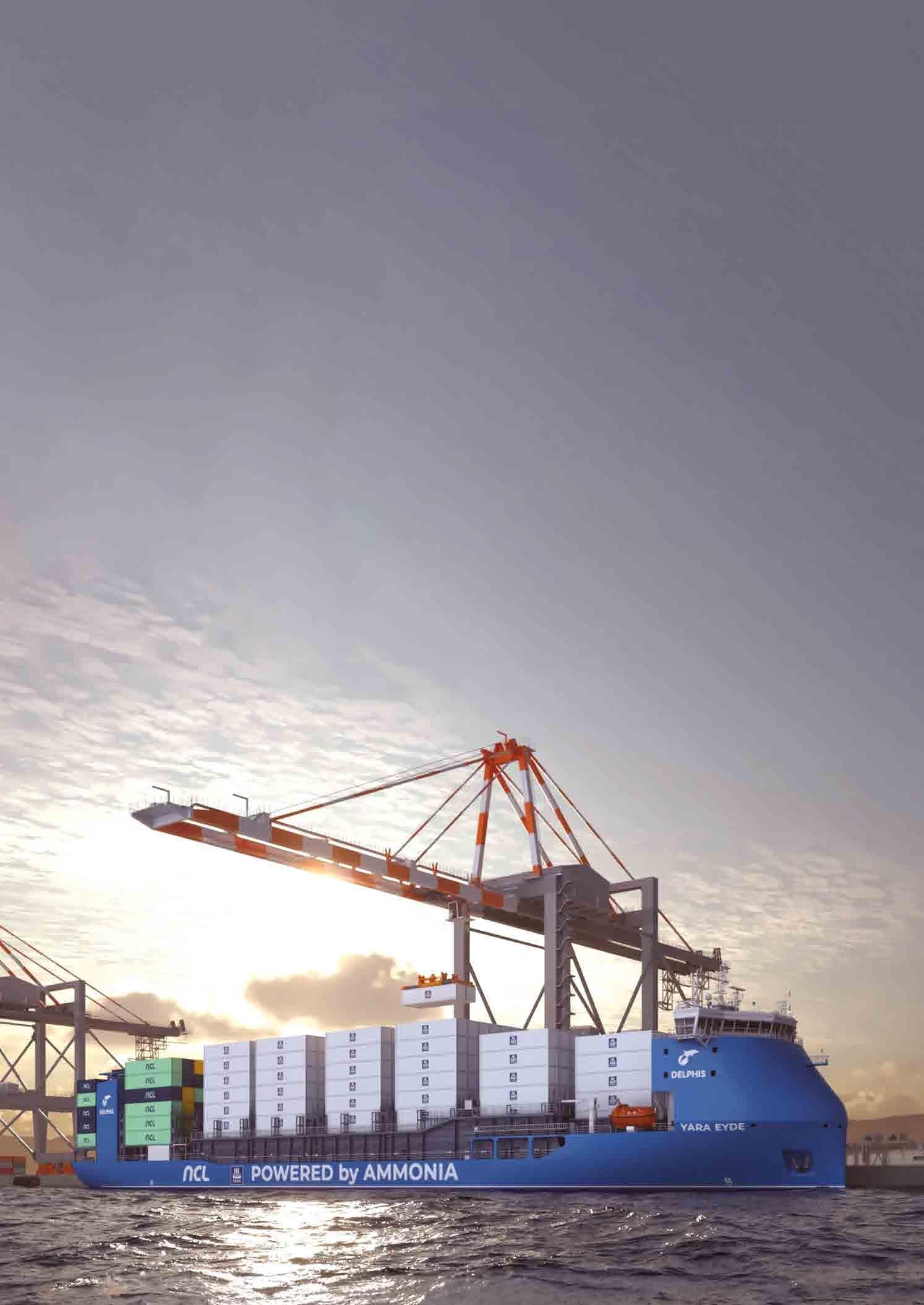
teamed with the Maersk Mc-Kinney Møller Center for Zero Carbon Shipping to draw up a set of reports under the ‘Ammonia as Fuel—Competencies and Training’ project, which outline a roadmap to ready seafarers for ship operations with the fuel.
The February 2025 meeting in London of the IMO’s subcommittee on Human Element, Training and Watchkeeping (HTW 11) agreed on draft interim generic guidelines for training seafarers working on ships powered by alternative fuels and new technologies, and decided to set in train the development of guidelines for each fuel (including ammonia) or technology. The generic guidelines were subsequently approved by the Maritime Safety Committee in June this year (MSC 110), and the work on fuel-specific principles is continuing under a Correspondence Group until HTW 12 in 2026.
Meanwhile, DNV considers that safety training in the handling of ammonia should be developed in consultation with the ship’s flag administration, and that courses should cover fuel properties, normal
operation, safety barrier management and emergency response. The society’s recommended practice (RP) document Competence related to the use of ammonia as fuel enables assessment and verification of individuals’ knowledge and skills for safely operating and maintaining systems and equipment.
From a ship design perspective, safety focus areas include preventing and detecting leaks, particularly near accommodation areas, implementing ventilation and toxic release mitigation strategies, designing safe bunkering systems and containment, and providing personnel protection.
Overall, much can be learnt from the chemical industry, where safety precautions, material compatibility and equipment type are meticulously addressed.
An early investment in ammonia dual-fuel two-stroke propulsion entailed two 46,000dwt LPG carriers ordered by Exmar LPG from HD Hyundai Mipo in 2023 for delivery in 2026. The engines have been supplied by Winterthur Gas & Diesel (WinGD) through a licensee, and
Render of ammonia-fuelled boxship ‘Yara Eyde’, to operate between Norway and Germany

the fuel supply system emanated from Wartsila Gas Solutions.
Due to the limited availability as yet of ‘green’ ammonia for use as a marine fuel, certain shipowners have taken steps to ensure a supply. In particular, Hoegh Autoliners has entered into an offtake agreement with Norwegian start-up North Ammonia so as to secure a steady source of the fuel for its emergent series of MAN-powered, Aurora-class multi-fuel PCTC newbuilds.
Mitsui OSK Lines (MOL) and the CMB TECH of Antwerp are to the fore among proponents of ammonia fuel for deep-sea shipping through joint investment in three Newcastlemax bulk carriers ordered from Qingdao Beihai Shipbuilding. The dual-fuel, 210,000dwt newbuilds are slated for delivery in 2026-2027 and will be the first of their type and scale embracing an ammonia capability. This will be imbued by a variant of WinGD’s X92B two-stroke engine, fed from dedicated ammonia fuel tanks each side of the superstructure.
Australian mining company Fortescue Metals has signed a charter agreement on one of the newbuilds to ship iron ore from Western Australia to China.
MOL has subsequently signed a joint development agreement with trading house Itochu Corporation relating to ship-to-ship ammonia bunkering operations.
The medium for this will be the 5,000m3 -capacity ammonia bunker tanker contract by Itochu at Sasaki Shipbuilding in Japan, and expected to be commissioned during the 2027 second-half in Singapore, the world’s
largest bunkering hub. The partners are intent on proving the technology and safety case for offshore transfer of ammonia fuel, a move that will have a key bearing on future uptake of the potential zero-emission option.
The commitment by CMB TECH and MOL to ammonia power gained further dimension by way of a chemtanker series to be delivered by China Merchants Jinling Shipyard (Yangzhou) over the course of 2028 and 2029. Six newbuilds, comprising two ammoniafitted and four ammonia-ready vessels, have been contracted by the Belgian group for charter to MOL Chemical Tankers of Singapore for on 10- and seven-year terms respectively.
CMB TECH earlier endorsed ammonia by nominating the capability for the fuel in the main engine of a 1,400TEU short-sea boxship contracted at Qingdao Yangfan Shipbuilding. The vessel will be deployed on regular service between Norway and Germany from mid-2026 under charter to a joint venture of North Sea Container Line and Yara Clean Ammonia. Yara will supply the ammonia bunkers.
Among the industry’s leading practitioners of the ro-ro mode and most consistent investors in fleet renewal and development, the Grimaldi organisation’s incoming generation of pure car/truck carriers (PCTCs) gives expression to the group’s disposition towards future use of ammonia fuel.
Ranking at the top end of the capacity range through a load intake of 9,241CEU, the Grande Tianjin also has special technical significance through design and engineering provision for conversion to operate on ammonia,
certified by RINA’s ammonia-ready class notation. The vessel is also equipped for shore power supply when berthed, affording a potential ‘green’ alternative to the use of conventional fuels when alongside in port.
Grande Tianjin is the first of a class of seven ordered from Shanghai Waigaoqiao Shipbuilding (SWS), having made her service debut in August this year with a Chinese export cargo for northern Europe. A further nine PCTC newbuilds drafted to an ammonia-ready technical specification are in hand at Chinese yards for Grimaldi, making for an overall 16-ship programme scheduled to be completed before the end of 2027.
While the surge in the specification of methanol power by the commercial shipping sector acknowledges its perceived effectiveness and viability as an intermediate solution for cutting GHG emissions, ammonia is seen as a long-term expedient, and its advance and adoption is not at the same level as methanol. By early 2025, approximately 50 vessels had been ordered with ammonia-capable machinery.
With ammonia now shifting from technological readiness towards initial scale and proof of concept at sea, the developmental pace as concerns validation, regulation and low-carbon ammonia bunkering infrastructure has to accelerate if it is to make a significant contribution to shipping’s environmental goals. At the same time, crew upskilling is fundamental to the ultimate working effectiveness, efficiency and safety of ammonia-related shipboard and newbuild projects. l
Shipping’s alternative fuels transition will not happen in one big bang, but rather incremental improvements will see ship operators and fuel suppliers take steps towards longer compliance, lower emissions, wider availability, and lower costs, writes Caspar Gooren, Commercial Director of Renewable Fuels at Titan Clean Fuels.
From a compliance standpoint, the IMO Net-Zero Framework is the talk of the town, but the reality is that many key elements remain to be decided. Important discussions on default fuel emissions factors will be held at the MEPC/ ES.2 meetings in October.
What we can already see from a regulatory perspective is that LBM offers overcompliance with FuelEU Maritime – presenting commercial benefits via banking, borrowing and pooling mechanisms. Banking allows companies to carry surplus compliance over to the next year. Borrowing allows them to use next year’s surplus early with interest. Pooling allows operators to combine ships’ balances so the pool results offset individual deficits.
Titan’s customers, including United European Car Carriers (UECC), have already seen these FuelEU Maritime commercial benefits through LBM. Titan recently signed an expanded deal to make the vast majority of liquified gas it supplies to UECC be LBM for most of 2025.
LBM is produced from waste feedstock, particularly domestic
and agricultural waste. This means it can capture methane that would otherwise be vented into the atmosphere, resulting in a fuel that is not just potentially net zero in GHG emissions, but also potentially ‘net negative’. By assisting with the reprocessing of waste materials, LBM can also support the circular economy and help with yet another global concern: waste management.
All LNG also eliminates up to 95% of Nitrogen Oxide (NOx), virtually all sulphur oxide (SOx) and particulate matter emissions – improving air quality and health for people near maritime infrastructure.
Titan and its customers can achieve these tangible greenhouse gas emissions reductions because LBM is increasingly available today. In Q2 2025, LBM bunker volumes in the Port of Rotterdam, for example, were 4,752 m3 – up from 2,200 m3 in Q2 2024. That’s a 116% growth year on year. Mechanisms like mass balancing are also reducing LBM costs, and therefore price, also allowing it to benefit from economies of scale.

Mass balancing is expected to feature on many fuel pathways and offers a practical way of delivering clean fuels at scale. Mass balanced LBM is injected into the gas network and transported to liquefaction plants and LNG terminals using existing infrastructure. Titan and other industry leaders have recently called on the Dutch government to ensure mass balancing and European biogas are recognised in its latest regulations.
Importantly, there is a huge and growing asset base to bunker LNG, LBM and e-methane in the future. LBM can be dropped into existing LNG bunkering infrastructure and vessels. The total number of LNG-powered vessels in operation by the end of 2028 is expected to be 1,154. Soft infrastructure such as training standards and certification schemes are also increasingly mature.
The bottom line is, while theoretical discussions continue to take place, Titan and the methane pathway are delivering towards decarbonisation for shipowners and operators today. l

The International Shipsuppliers & Services Association (ISSA) placed sustainability, AI as well as diversity and the need to attract the young and talented into the industry at the heart of its 67th Annual Convention, being held in Singapore.
Opening the three day event, which also included ‘Meet the Customer’ meetings between ISSA members and 38 of the
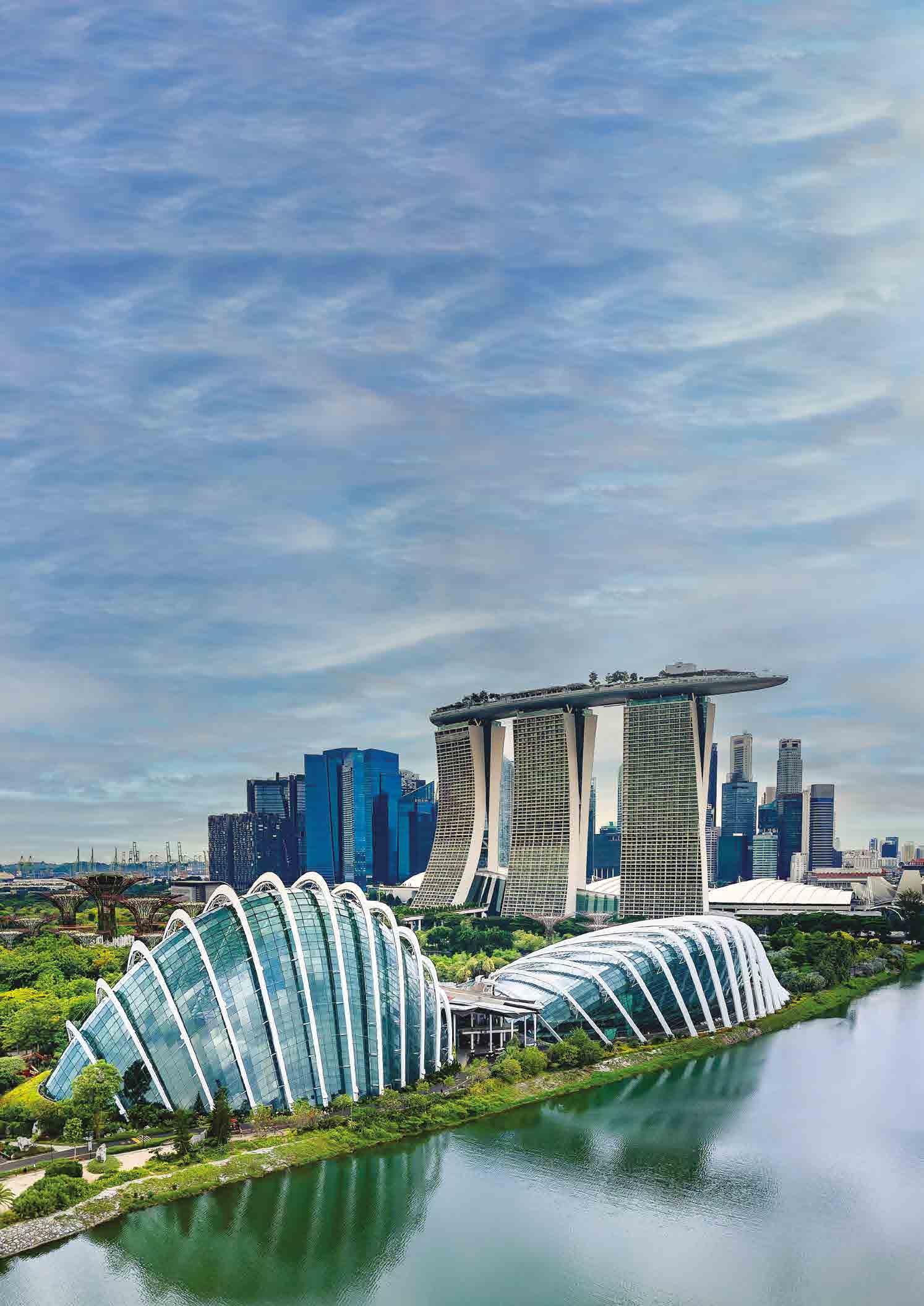
industry’s top shipowner and ship manager buyers, ISSA President Rafael Fernandez paid tribute to the work of the association in these important areas.
“ISSA places quality of operation and quality of its membership very high on its list of priorities, an essential factor demanded by our clients, the buyers,” he told delegates.

“New members wanting to join ISSA have to undergo rigorous quality checks to ensure they meet certain essential criteria — aspects that elevate the overall quality and reputation of ISSA as a whole.
“Through our newly elected Executive Board Member, Mr Carl Forsman from Sweden, we are working closely with our shipowner colleagues in helping to draw up guidelines for Scope 3 emissions reporting, contributing to greater transparency and
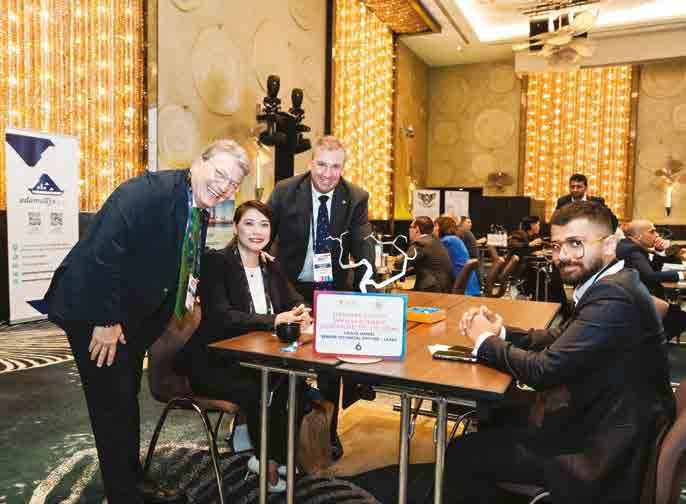


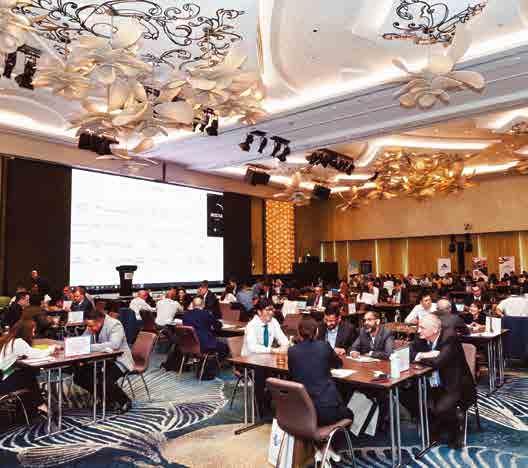
Together here in Singapore, where East meets West and tradition meets technology, we also look ahead to the next wave of our industry, shaped by sustainability, digitalisation and synergy. These forces are transforming how we operate, but they also reaffirm what has always defined us as our ability to adapt, to innovate and to move forward together
sustainability across the ship supply industry,” he added.
Over 350 ship suppliers from around the world are attending this week’s ISSA Convention. Apart from being the 67th time the Convention has been held, 2025 is also the 70th Anniversary of ISSA.
Danny Lien, President of the Singapore Association of Shipsuppliers & Services (SASS), told the first day of the conference: “ISSA has, for seven decades, united ship suppliers and service providers worldwide, advancing standards of excellence and cooperation that continue to guide our industry forward. We are proud to host this year’s convention and to welcome the global ship supply community to our shores. l

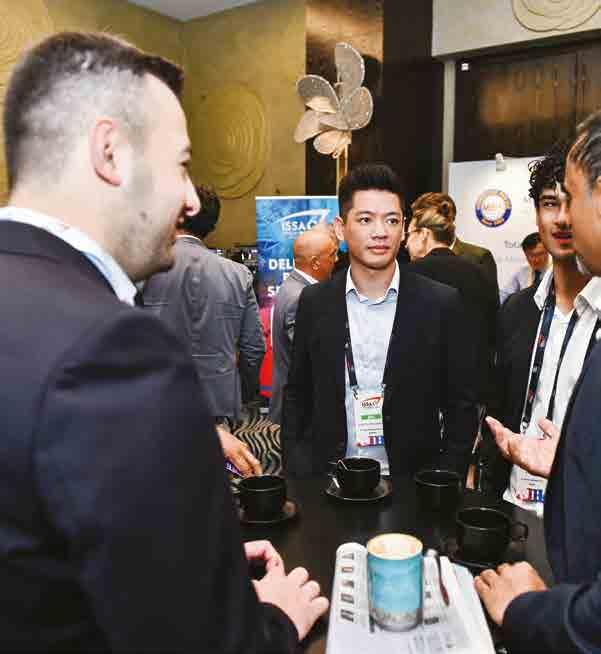



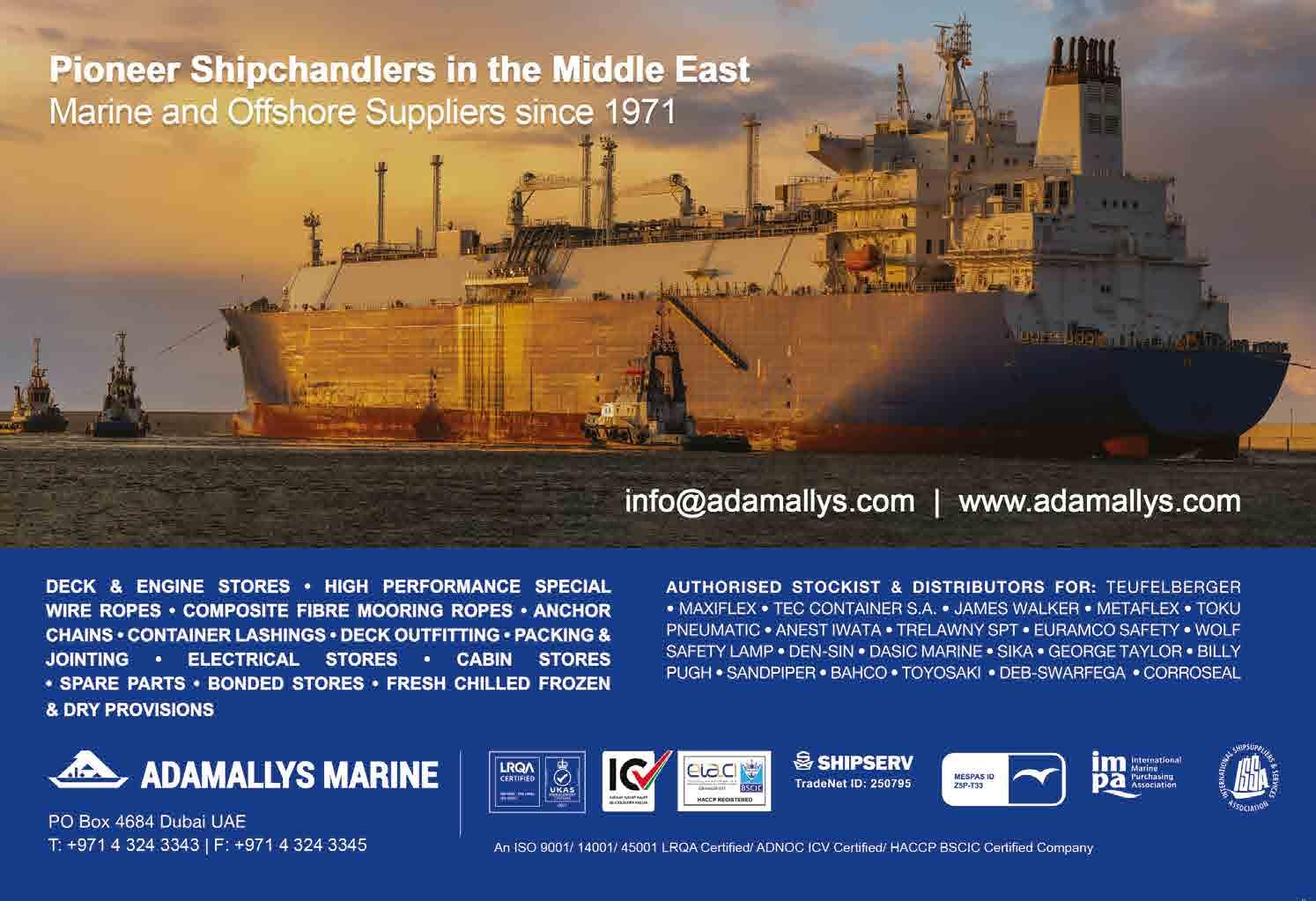
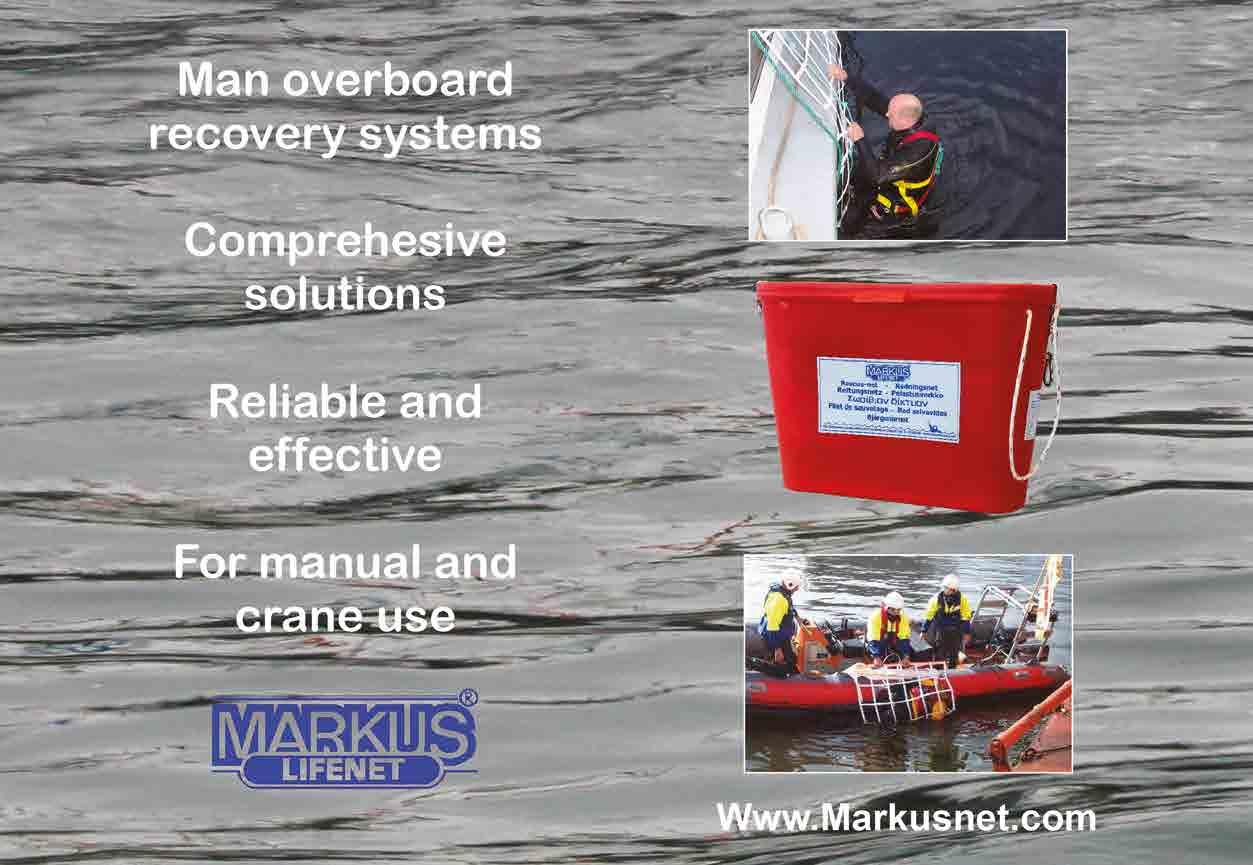
For those who have seen everything of the surface world, Triton Submarines delivers the ultimate invitation. Hand-built in Florida, the 7500/3 allows three guests to descend over 7,500 metres in a pressurised acrylic sphere that feels more spacecraft than sub. The optically perfect hull offers 360-degree visibility, while DNV-certifi ed engineering ensures absolute safety. Each vessel is tailored to its mothership’s identity.
Triton 7500/3
From $3.2 Million tritonsubs.com

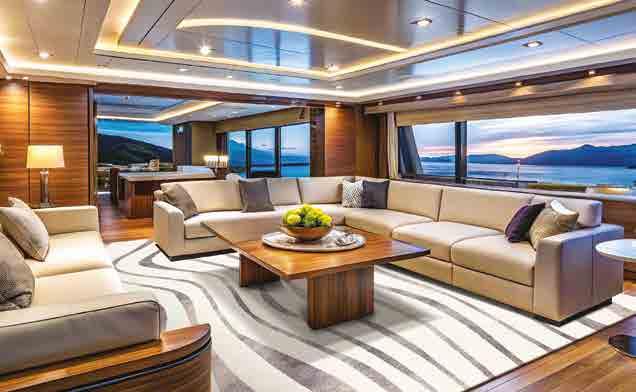
Taking centre stage in the EvoJet 70, Williams’ flagship tender is built for 13 guests and powered by a 250 hp YANMAR 4LV engine. A fold-down transom allows effortless circulation from stern to bow, while its deep-V hull keeps rides glass-smooth even in challenging seas. Every stitch and seam exudes luxury, from the hand-upholstered helm seats to the concealed storage pods. The EvoJet 70 is described as the Rolls-Royce of yacht tenders.
Williams EvoJet 70
Around £395,000 williamsjettenders.com
SYLKA’s Oceana Collection reinvents marine flooring with sustainability at its heart, weaving AquaSylk® and EcoSylk® fibres spun from recycled ocean plastics into plush, sea-resistant textiles. Unveiled at the 2025 Dubai Boat Show, Oceana’s hand-finished rugs and wall-to-wall carpets are UV-proof, salt-proof and divinely soft, and each piece can be colour-matched to any yacht palette.
SYLKA Oceana Collection
From £250 per m² sylkacarpets.com


A wristwatch said to be worthy of a superyacht bridge, this superb watch pairs recycled-steel sustainability with Panerai’s unmistakable Italian boldness. Water-resistant to 300 metres, its brushed blue dial and luminescent markers make timekeeping a form of art beneath the waves. Inside, an automatic P.900 calibre beats with a 3-day reserve. Equally at home with a wetsuit or a dinner jacket, it’s definitely adventure refined.
Panerai Submersible QuarantaQuattro eSteel™
£10,500 panerai.com

Precision cooking meets gallery aesthetics with the Miele ArtLine Series 7000 oven. Featuring handle-free, flush -mounted and finished in deep obsidian glass, its MoisturePlus and FoodView technology ensure Michelinlevel results at sea, whether you’re baking bread in the Arctic or roasting lobster in Monaco. Whisper-quiet hinges and a pyrolytic self-cleaning system complete the symphony of engineering perfection.
Miele ArtLine 7000 Oven From £4,499 miele.com

Smart Tracker
Discretion meets digital intelligence with this tracker, small enough to fit on a yacht key, camera bag or Hermès clutch, the Tile Mate uses Bluetooth and GPS-assisted triangulation to track anything that drifts astray. With ring alerts, last-seen location and a network of millions of users, it ensures that nothing luxurious ever truly gets lost again.
Tile Mate (2025 Edition) £29.99 life360.com
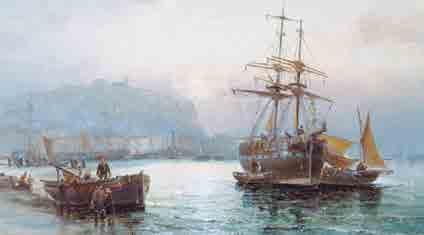

The Shipwrecked Mariners’ Society’s 2025 card collection
Order online at www.charitycardshop.com/sms
This collection beautifully combines maritime heritage, art and festive spirit, all the while supporting a vital cause. Featuring designs such as HMS Victory at Trafalgar, Monet’s Winter Walk, and Christmas Harbour, each pack of 10 cards (priced around £4.20–£4.90) and printed on FSC-certified materials, with envelopes. Every purchase directly supports seafarers, fishers, and their families facing hardship, by helping to continue the Society’s long-standing mission of care since 1839. Thoughtful and purposeful, they’re a meaningful way to send festive wishes while giving back to maritime.
musicalsontour.co.uk
This re-imagining of the classic ‘Nutcracker’ ballet by ex–Royal-Ballet star Carlos Acosta places the story in 1940s-50s Havana, fusing classical ballet technique with Cuban rhythms and Afro-Cuban dance styles. The set and video projections map an ocean-crossing fantasy from Havana to Europe. Starting its UK tour in Richmond, from 18-22 November 2025, it’s a colourful mix for a special Christmas performance.


By Matthew McCleery (2025)
Publisher: Marine Money, Inc.
International Maritime Museum Hamburg, Germany Until 30 December 2025
Outstanding achievements by renowned women in marine research have long remained hidden. A special exhibition at the International Maritime Museum Hamburg is currently offering exciting insights into the creativity of female scientists entitled “Breaking the Surface. Women in Marine Research.” Translated means don’t stay on the surface, but venture into unknown areas of the oceans, and truly delve into the depths. Showing impressive examples of how women have been advancing maritime science – from time, often in the face of adversity.
When restless New York City hedge fund manager Robert Fairchild watches the Baltic Dry Cargo Index plunge 97%, registering an all-time high and a 25-year low within the span of just six months, he decides to buy a ship. Immediately fantasizing about naming a vessel after his wife, carrying a string of worry beads and being able to introduce himself as a “shipowner” at his upcoming college reunion, Fairchild immediately embarks on an odyssey into the most exclusive, glamorous and high stakes business in the world. From pirates off the coast of Somalia and on Wall Street to Greek and Norwegian shipping magnates, the education of Robert Fairchild is an expensive one. Purchase at Bookshop.org.
Located in the Tyrolean Alps, Ischgl remains a favourite for late-season skiing, with north-facing slopes over 1,800 m that hold snow well into spring. Beyond the après-ski and resort-village atmosphere, whether choosing end-April or early May, Ischgl offers high-altitude crisp air, lots of daylight hours in a spectacular setting. Visit ischgl.com/ for more details.
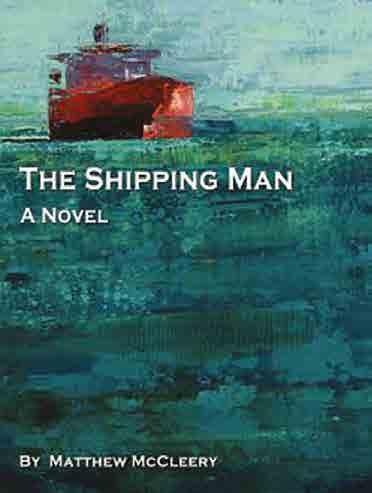

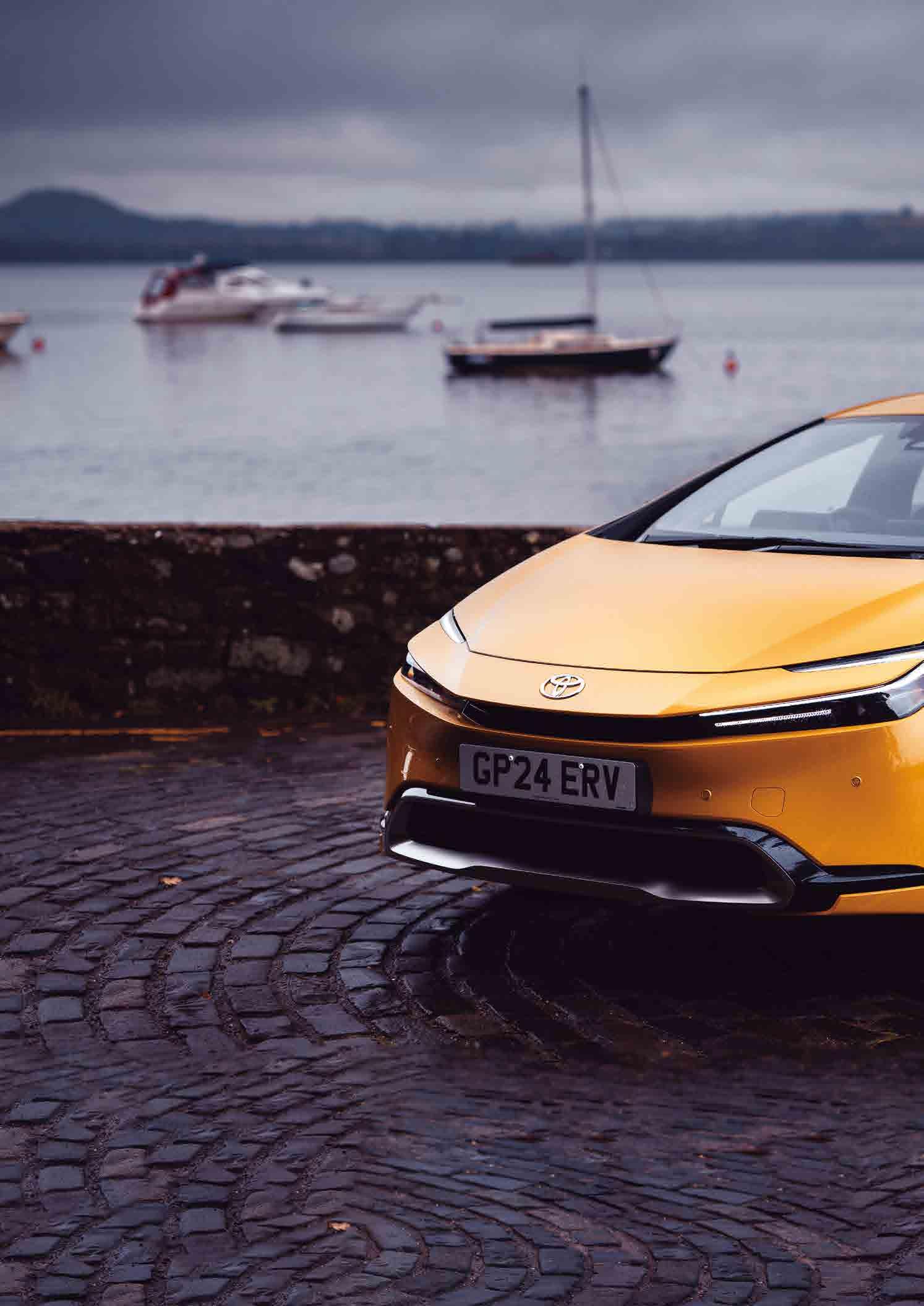
Price: £37,315
Engine: 2.0 litre, four cylinder petrol with 13.6kWh lithium ion battery
Power: 150bhp (120kW electric)
Torque: 140lb/ft (153lb/ft elec)
Transmission: CVT
Top speed: 110mph
0-62mph: 6.8 secs
Range: 565 miles
CO2 emissions: 17g/km
By Robin Auchterlonie
There’s clean and then there’s clean. Our house is clean, because my wife wears out Dysons with monotonous regularity keeping it that way.
She is to the adult world what the Toyota Prius is to the automotive environment. One of the world’s cleanest people has just been reacquainted with one of the world’s

cleanest family cars.
An inauspicious occasion, I admit, because the former was totally unaware of the latter’s credentials until I pointed them out.
With the Prius, Toyota’s Hybrid Synergy Drive gives the electric motor more of a role to play than some other hybrids which rely on the petrol engine to produce peak performance with the electric unit of secondary importance.
First launched back in 1997, as the world’s first mass-produced full hybrid vehicle, the Prius offered motorists a refreshing alternative to full blown
internal combustion engines, and while the initial purchase price was on the high side you didn’t have to pay for its environmental consciousness at the pumps.
The name quickly became symbolic of a car that came to market before environmental awareness became a mainstream social issue. And thus people were initially sceptical of this quirky but distinctive looking Japanese car.
We’ve been spending a bit of time in near silent driving mode, in the latest incarnation of a vehicle that has been the transport of choice for a multitude of mini cab drivers the world over.
Only this time the third generation of the car that was an early forerunner of electrified performance is an altogether sleeker proposition aimed at a different buyer.
The all new plug-in hybrid Prius arrives with even greater fuel economy, emissions efficiency and EV driving capability, matched to its new sharp, coupe-like styling.
Starting up the Prius is a bit like waiting for the penny to drop with a


dumb chum. Long pause, no sound. You press the power button and the digital display tells you the car is ready for action. But it’s so quiet you could hear that penny drop.
The sound of near silence under electric power is something motorists are slowly getting used to. And pedestrians too, because when you’re crawling in traffic the petrol engined side of the equation – the bit that alerts others to you being in the vicinity – tends to be surplus to requirements. Though it has to be said you need remarkable restraint to drive so gently the engine doesn’t kick in.
And then, as you glide forward, there’s a sudden subdued revving from beneath the bonnet as the clever bits decide electric power isn’t enough to get you moving at any real pace and the 1.8 litre engine joins in.
Interestingly the electric motor is more powerful than a fair few internal combustion engines, and, with 163Nm available instantly from zero mph, the Prius has impetus aplenty.
The latest range offers two versions – Design and Excel – powered by a 2.0-litre plug-in system benefiting from fifth generation Toyota hybrid electric technology. The powertrain delivers a maximum 220bhp, a fair old increase on the 121bhp of the previous Prius plug-in model and that gives you strong, responsive acceleration.
Prius’s signature wedge shape has evolved to a coupélike silhouette by lowering the overall height by 50mm, and inside, a spacious cabin has a clean interior layout.
For some drivers today, buying a plug-in hybrid makes more sense than an all-electric vehicle – an opinion that supports Toyota’s ‘multipath technology strategy.’
Toyota’s Hybrid technology gives the electric motor more of a role to play than some other hybrids which rely on the petrol engine to produce peak performance with the electric unit of secondary importance.
Its 13.6kWh battery enables electric driving for up to 53 miles – sufficient to cover most routine daily journeys. When battery charge is depleted, it operates as a selfcharging hybrid, with greater efficiency benefits than other plug-in hybrids which default to their petrol engine. l
